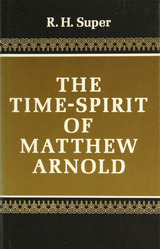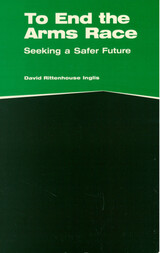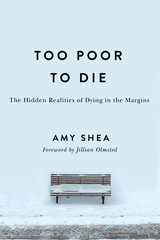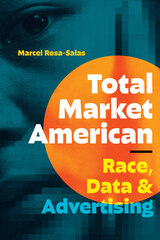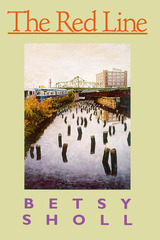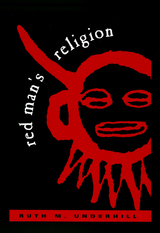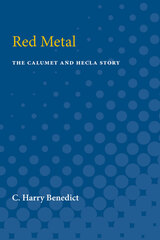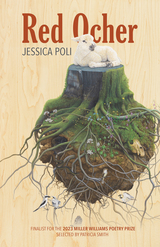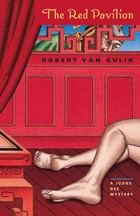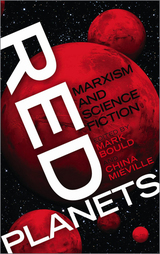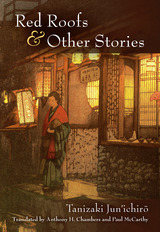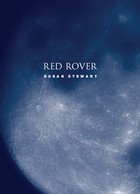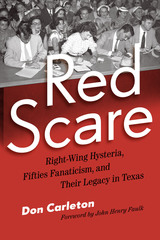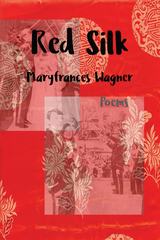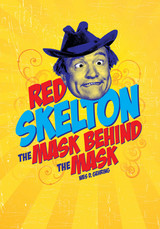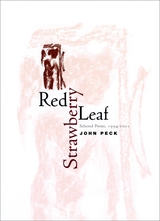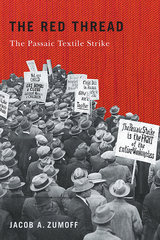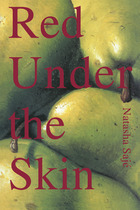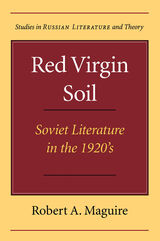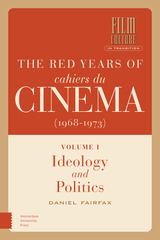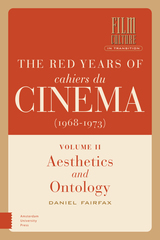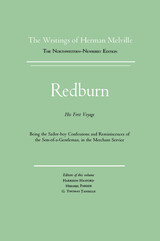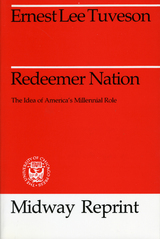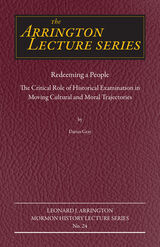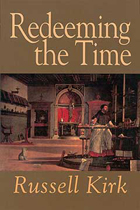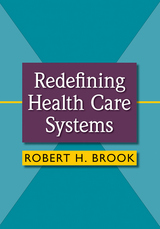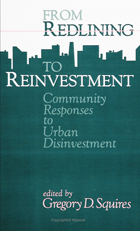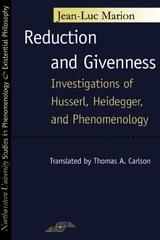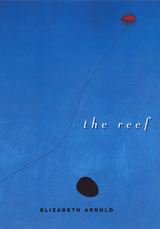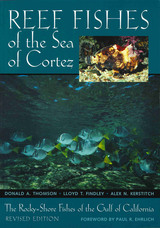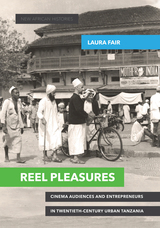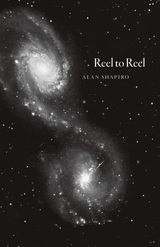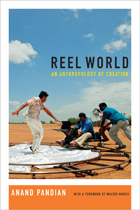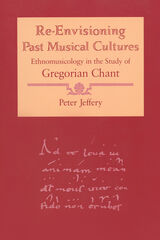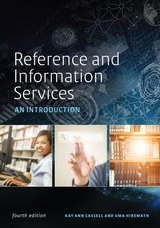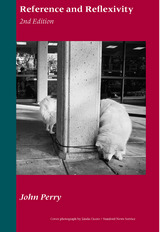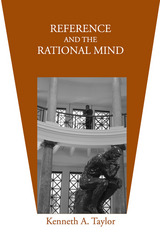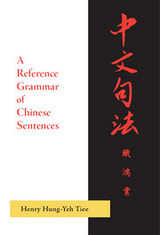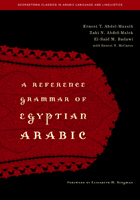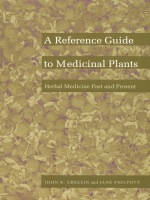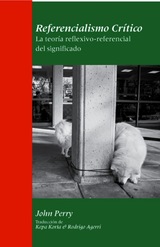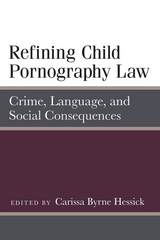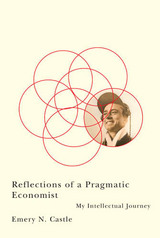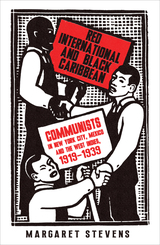 Red International and Black Caribbean: Communists in New York City, Mexico and the West Indies, 1919-1939
Margaret Stevens
Pluto Press, 2017 Too often grouped together, the black radicalism movement has a history wholly separate from the international communist movement of the early twentieth century. In Red International and Black Caribbean Margaret Stevens sets out to correct this enduring misconception. Focusing on the period 1919-39, Stevens explores the political roots of a dozen Communist organizations and parties that were headquartered in New York City, Mexico, and the Caribbean. She describes the inner workings of the Red International—the revolutionary global political network established under the Communist International—in relation to struggles against racial and colonial oppression. In doing so, she also highlights how the significant victories and setbacks of black people fighting against racial oppression developed within the context of the global Communist movement.
Challenging dominant accounts, Red International and Black Caribbean debunks the “great men” narrative, emphasizes the role of women in their capacity as laborers, and paints the true struggles of black peasants and workers in Communist parties.
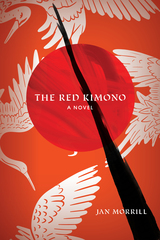 The Red Kimono: A Novel
Jan Morrill
University of Arkansas Press, 2013 In 1941, racial tensions are rising in the California community where nineyear-old Sachiko Kimura and her seventeen-year-old brother, Nobu, live. Japan has attacked Pearl Harbor, people are angry, and one night, Sachiko and Nobu witness three teenage boys taunting and beating their father in the park. Sachiko especially remembers Terrence Harris, the boy with dark skin and hazel eyes, and Nobu cannot believe the boys capable of such violence toward his father are actually his friends. What Sachiko and Nobu do not know is that Terrence's family had received a telegram that morning with news that Terrence's father was killed at Pearl Harbor. Desperate to escape his pain, Terrence rushes from his home and runs into two high-school friends who convince him to find a Japanese man and get revenge. They do not know the man they attacked is Sachiko and Nobu's father. In the months that follow, Terrence is convicted of his crime and Sachiko and Nobu are sent to an internment camp in Arkansas, a fictionalized version of the two camps that actually existed in Arkansas during the war. While behind bars and barbed wire, each of the three young people will go through dramatic changes. One will learn acceptance. One will remain imprisoned by resentment, and one will seek a path to forgiveness.
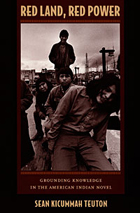 Red Land, Red Power: Grounding Knowledge in the American Indian Novel
Sean Kicummah Teuton
Duke University Press, 2008 In lucid narrative prose, Sean Kicummah Teuton studies the stirring literature of “Red Power,” an era of Native American organizing that began in 1969 and expanded into the 1970s. Teuton challenges the claim that Red Power thinking relied on romantic longings for a pure Indigenous past and culture. He shows instead that the movement engaged historical memory and oral tradition to produce more enabling knowledge of American Indian lives and possibilities. Looking to the era’s moments and literature, he develops an alternative, “tribal realist” critical perspective to allow for more nuanced analyses of Native writing. In this approach, “knowledge” is not the unattainable product of disinterested observation. Rather it is the achievement of communally mediated, self-reflexive work openly engaged with the world, and as such it is revisable. For this tribal realist position, Teuton enlarges the concepts of Indigenous identity and tribal experience as intertwined sources of insight into a shared world. While engaging a wide spectrum of Native American writing, Teuton focuses on three of the most canonized and, he contends, most misread novels of the era—N. Scott Momaday’s House Made of Dawn (1968), James Welch’s Winter in the Blood (1974), and Leslie Marmon Silko’s Ceremony (1977). Through his readings, he demonstrates the utility of tribal realism as an interpretive framework to explain social transformations in Indian Country during the Red Power era and today. Such transformations, Teuton maintains, were forged through a process of political awakening that grew from Indians’ rethought experience with tribal lands and oral traditions, the body and imprisonment, in literature and in life.
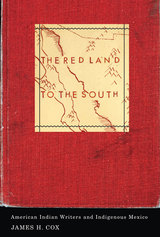 The Red Land to the South: American Indian Writers and Indigenous Mexico
James H. Cox
University of Minnesota Press, 2012 The forty years of American Indian literature taken up by James H. Cox—the decades between 1920 and 1960—have been called politically and intellectually moribund. On the contrary, Cox identifies a group of American Indian writers who share an interest in the revolutionary potential of the indigenous peoples of Mexico—and whose work demonstrates a surprisingly assertive literary politics in the era. By contextualizing this group of American Indian authors in the work of their contemporaries, Cox reveals how the literary history of this period is far more rich and nuanced than is generally acknowledged. The writers he focuses on—Todd Downing (Choctaw), Lynn Riggs (Cherokee), and D’Arcy McNickle (Confederated Salish and Kootenai)—are shown to be on par with writers of the preceding Progressive and the succeeding Red Power and Native American literary renaissance eras. Arguing that American Indian literary history of this period actually coheres in exciting ways with the literature of the Native American literary renaissance, Cox repudiates the intellectual and political border that has emerged between the two eras.
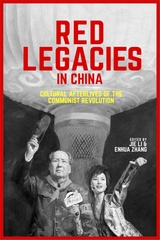 Red Legacies in China: Cultural Afterlives of the Communist Revolution
Jie Li
Harvard University Press What has contemporary China inherited from its revolutionary past? How do the realities and memories, aesthetics and practices of the Mao era still reverberate in the post-Mao cultural landscape? The essays in this volume propose red legacies as a new critical framework from which to examine the profusion of cultural productions and afterlives of the communist revolution in order to understand China’s continuities and transformations from socialism to postsocialism. Organized into five parts—red foundations, red icons, red classics, red bodies, and red shadows—the book’s interdisciplinary contributions focus on visual and performing arts, literature and film, language and thought, architecture, museums, and memorials. Mediating at once unfulfilled ideals and unmourned ghosts across generations, red cultural legacies suggest both inheritance and debt, and can be mobilized to support as well as to critique the status quo.
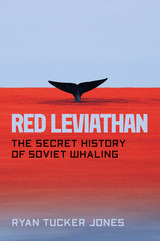 Red Leviathan: The Secret History of Soviet Whaling
Ryan Tucker Jones
University of Chicago Press, 2022 A revealing and authoritative history that shows how Soviet whalers secretly helped nearly destroy endangered whale populations, while also contributing to the scientific understanding necessary for these creatures’ salvation.
The Soviet Union killed over six hundred thousand whales in the twentieth century, many of them illegally and secretly. That catch helped bring many whale species to near extinction by the 1970s, and the impacts of this loss of life still ripple through today’s oceans. In this new account, based on formerly secret Soviet archives and interviews with ex-whalers, environmental historian Ryan Tucker Jones offers a complete history of the role the Soviet Union played in the whales’ destruction. As other countries—especially the United States, Great Britain, Japan, and Norway—expanded their pursuit of whales to all corners of the globe, Stalin determined that the Soviet Union needed to join the hunt. What followed was a spectacularly prodigious, and often wasteful, destruction of humpback, fin, sei, right, and sperm whales in the Antarctic and the North Pacific, done in knowing violation of the International Whaling Commission’s rules. Cold War intrigue encouraged this destruction, but, as Jones shows, there is a more complex history behind this tragic Soviet experiment. Jones compellingly describes the ultimate scientific irony: today’s cetacean studies benefited from Soviet whaling, as Russian scientists on whaling vessels made key breakthroughs in understanding whale natural history and behavior. And in a final twist, Red Leviathan reveals how the Soviet public began turning against their own country’s whaling industry, working in parallel with Western environmental organizations like Greenpeace to help end industrial whaling—not long before the world’s whales might have disappeared altogether.
 Red Lights: The Lives of Sex Workers in Postsocialist China
Tiantian Zheng
University of Minnesota Press, 2009 In China today, sex work cannot be untangled from the phenomenon of rural-urban migration, the entertainment industry, and state power. In Red Lights, Tiantian Zheng highlights the urban karaoke bar as the locus at which these three factors intersect and provides a rich account of the lives of karaoke hostesses—a career whose name disguises the sex work and minimizes the surprising influence these women often have as power brokers.
Zheng embarked on two years of intensely embedded ethnographic fieldwork in her birthplace, Dalian, a large northeastern Chinese seaport of over six million people. During this time, Zheng lived and worked with a group of hostesses in a karaoke bar, facing many of the same dangers that they did and forming strong, intimate bonds with them. The result is an especially engaging, moving story of young, rural women struggling to find meaning, develop a modern and autonomous identity, and, ultimately, survive within an oppressively patriarchal state system.
Moving from her case studies to broader theories of sex, gender, and power, Zheng connects a growth in capitalist entrepreneurialism to the emergence of an urban sex industry, brilliantly illuminating the ways in which hostesses, their clients, and the state are mutually created in postsocialist China.
The Red Line
Betsy Sholl
University of Pittsburgh Press, 1992 Winner of the 1991 Associated Writing Programs' Award Series in Poetry
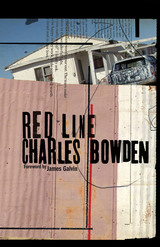 Red Line
By Charles Bowden, foreword by James Galvin
University of Texas Press, 2018 “At its best, Red Line can read like an original synthesis of Peter Matthiessen and William Burroughs . . . a brave and interesting book.”
—David Rieff, Los Angeles Times Book Review “Charles Bowden’s Red Line is a look at America through the window of the southwest. His vision is as nasty, peculiar, brutal, as it is intriguing and, perhaps, accurate. Bowden offers consciousness rather than consolation, but in order to do anything about our nightmares we must take a cold look and Red Line casts the coldest eye in recent memory.”
—Jim Harrison One of Charles Bowden’s earliest books, Red Line powerfully conveys a desert civilization careening over the edge—and decaying at its center. Bowden’s quest for the literal and figurative truth behind the assassination of a murderous border-town drug dealer becomes a meditation on the glories of the desert landscape, the squalors of the society that threatens it, and the contradictions inherent in trying to save it.
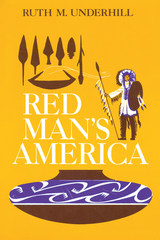 Red Man's America: A History of Indians in the United States
Ruth Murray Underhill
University of Chicago Press, 1971 Red Man's America meets the great need for a comprehensive study of Indian societies from the first Stone Age hunters to the American citizens of today. Beginning with the first migrations of primitive man from Siberia in the Old World to Alaska in the New, probably during the latter part of the Pleistocene glaciations, and his subsequent migration southward and eastward, the author takes up in turn the tribes and cultures of the various regions of North America.
The material Professor Underhill has gathered from the fields of archaeology, ethnology, and history, together with that drawn from her own experience in the United States Indian Service, produces a fascinating narrative. Red Man's America is an important contribution to our heritage of Indian life and lore.
"A work for which both sociologist and historian will be forever grateful. The author has combined a long period of study with actual field work in the service of the Indian to produce a work that gives a brief, but well written and accurate, sketch of the origins, backgrounds, and customs of the various North American tribes. . . . There is no other modern single volume that contains as much information on the subject."—E.R. Vollmar, The Historical Bulletin
"Liveliness in style and illustration, together with perspicacity in content, makes this book a useful introduction to the civilization of the original inhabitants of the land."—Pacific Historical Review
Red Man's Religion: Beliefs and Practices of the Indians North of Mexico
Ruth Murray Underhill
University of Chicago Press, 1965 Among the topics considered in this classic study are world origins and supernatural powers, attitudes toward the dead, the medicine man and shaman, hunting and gathering rituals, war and planting ceremonies, and newer religions, such as the Ghost Dance and the Peyote Religion.
"The distinctive contribution of [Red Man's Religion] is the treatment of topics, the insight and the perspective of the author, and her ability to transmit these to the reader. . . . Trais and aspects of religion are not treated as abstract entitites, to be enumerated and summated, assigned a geographic distribution, and then abandoned. No page is a dry recital; each is an illumination. Insight and wisdom are framed in poetic prose. An offering of information in such a medium merits gratitude."—American Anthropologist
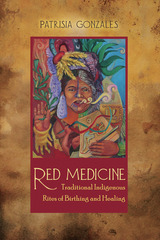 Red Medicine: Traditional Indigenous Rites of Birthing and Healing
Patrisia Gonzales
University of Arizona Press, 2012 Patrisia Gonzales addresses "Red Medicine" as a system of healing that includes birthing practices, dreaming, and purification rites to re-establish personal and social equilibrium. The book explores Indigenous medicine across North America, with a special emphasis on how Indigenous knowledge has endured and persisted among peoples with a legacy to Mexico. Gonzales combines her lived experience in Red Medicine as an herbalist and traditional birth attendant with in-depth research into oral traditions, storytelling, and the meanings of symbols to uncover how Indigenous knowledge endures over time. And she shows how this knowledge is now being reclaimed by Chicanos, Mexican Americans and Mexican Indigenous peoples.
For Gonzales, a central guiding force in Red Medicine is the principal of regeneration as it is manifested in Spiderwoman. Dating to Pre-Columbian times, the Mesoamerican Weaver/Spiderwoman—the guardian of birth, medicine, and purification rites such as the Nahua sweat bath—exemplifies the interconnected process of rebalancing that transpires throughout life in mental, spiritual and physical manifestations. Gonzales also explains how dreaming is a form of diagnosing in traditional Indigenous medicine and how Indigenous concepts of the body provide insight into healing various kinds of trauma.
Gonzales links pre-Columbian thought to contemporary healing practices by examining ancient symbols and their relation to current curative knowledges among Indigenous peoples. Red Medicine suggests that Indigenous healing systems can usefully point contemporary people back to ancestral teachings and help them reconnect to the dynamics of the natural world.
Red Metal: The Calumet and Hecla Story
C. Harry Benedict
University of Michigan Press, 1952 Red Metal is a different kind of book on American industrial history. It’s a dramatic story linked to the present by the energies and fortunes of the men who move in colorful realism through its pages; it’s a story of fortunes and misfortunes, of foresight and mistakes, of successes and failures of American enterprise relating to the largest of the copper mines of the Upper Peninsula of Michigan. The story traces the development of one of the oldest and richest copper companies in America. From the pathless wilds in which the great Calumet conglomerate ore body was first discovered came the achievement of many years of world leadership in the copper industry and the present aspects of a company with manufacturing plants that fabricate products of copper, copper-base alloys, aluminum, and steel.
 Red Nails, Black Skates: Gender, Cash, and Pleasure on and off the Ice
Erica Rand
Duke University Press, 2012 In her forties, Erica Rand bought a pair of figure skates to vary her workout routine. Within a few years, the college professor was immersed in adult figure skating. Here, in short, incisive essays, she describes the pleasures to be found in the rink, as well as the exclusionary practices that make those pleasures less accessible to some than to others. Throughout the book, Rand situates herself as a queer femme, describing her mixed feelings about participating in a sport with heterosexual story lines and rigid standards for gender-appropriate costumes and moves. She chronicles her experiences competing in the Gay Games and at the annual U.S. Adult National Figure Skating Championship, or "Adult Nationals"; Aided by her comparative study of roller derby and women's hockey, including a brief attempt to play hockey herself, she addresses matters such as skate color conventions, judging systems, racial and sexual norms, transgender issues in sports, and the economics of athletic participation and risk taking. Mixing sharp critique with genuine appreciation and delight, Rand suggests ways to make figure skating more inclusive, while portraying the unlikely friendships facilitated by sports and the sheer elation of gliding on ice.
Red Ocher
Jessica Poli
University of Arkansas Press, 2023 In Jessica Poli’s Red Ocher, the wild mortality of the natural world merges with melancholic expressions of romantic loss: a lamb runt dies in the night, a first-time lover inflicts casual cruelties, brussels sprouts rot in a field, love goes quietly and unbearably unrequited. This is an ecopoetics that explores the cyclical natures of love and grief, mindful that “there will be room for desire / again, even after it leaves / like a flood receding, / the damaged farmhouses / and washed-away bridges / lying scattered the next day / amid silt and debris.” Throughout, Poli’s poems hold space for the sacred—finding it in woods overgrown with thorny weeds, in drunken joy rides down rural roads, and in the red ocher barns that haunt the author’s physical and emotional landscapes.
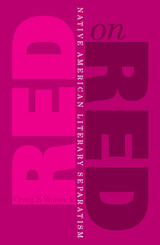 Red On Red: Native American Literary Separatism
Craig S. Womack
University of Minnesota Press, 1999 An entertaining and enlightening proposal for a new way to read Native American literature. An entertaining and enlightening proposal for a new way to read Native American literature. How can a square peg fit into a round hole? It can’t. How can a door be unlocked with a pencil? It can’t. How can Native literature be read applying conventional postmodern literary criticism? It can’t.That is Craig Womack’s argument in Red on Red. Indian communities have their own intellectual and cultural traditions that are well equipped to analyze Native literary production. These traditions should be the eyes through which the texts are viewed. To analyze a Native text with the methods currently dominant in the academy, according to the author, is like studying the stars with a magnifying glass.In an unconventional and piercingly humorous appeal, Womack creates a dialogue between essays on Native literature and fictional letters from Creek characters who comment on the essays. Through this conceit, Womack demonstrates an alternative approach to American Indian literature, with the letters serving as a “Creek chorus” that offers answers to the questions raised in his more traditional essays. Topics range from a comparison of contemporary oral versions of Creek stories and the translations of those stories dating back to the early twentieth century, to a queer reading of Cherokee author Lynn Riggs’s play The Cherokee Night.Womack argues that the meaning of works by Native peoples inevitably changes through evaluation by the dominant culture. Red on Red is a call for self-determination on the part of Native writers and a demonstration of an important new approach to studying Native works-one that engages not only the literature, but also the community from which the work grew.ISBN 0-8166-3022-4 Cloth £33.50 $47.95xxISBN 0-8166-3023-2 Paper £13.00 $18.95x288 Pages 5 7/8 x 9 November Translation inquiries: University of Minnesota Press
The Red Pavilion: A Judge Dee Mystery
Robert van Gulik
University of Chicago Press, 1961 Three fiendish murders challenge the beloved detective Judge Dee, whom the Los Angeles Times ranked with Sherlock Holmes
A chance encounter with Autumn Moon, the most powerful courtesan on Paradise Island, leads Judge Dee to investigate three deaths. Although he finally teases the true story from a tangled history of passion and betrayal, Dee is saddened by the perversion, corruption, and waste of the world "of flowers and willows" that thrives on prostitution.
Red Planets: Marxism and Science Fiction
Edited by Mark Bould and China Mielville
Pluto Press, 2009 As a genre, sf is ideally suited to critiquing the present through its explorations of the social and political possibilities of the future. This is the first collection to combine analyses of sf literature and films within a broader overview of Marxist theory and critical perspectives on the genre.
Covering a rich variety of examples from Weimar cinema to mainstream Hollywood films, and novelists from Jules Verne and H.G. Wells to Kim Stanley Robinson, Ken MacLeod and Charles Stross, this is an indespensible insight into how Marxism and science fiction go hand-in-hand.
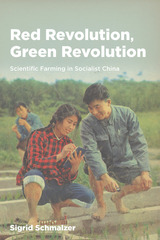 Red Revolution, Green Revolution: Scientific Farming in Socialist China
Sigrid Schmalzer
University of Chicago Press, 2015 In 1968, the director of USAID coined the term “green revolution” to celebrate the new technological solutions that promised to ease hunger around the world—and forestall the spread of more “red,” or socialist, revolutions. Yet in China, where modernization and scientific progress could not be divorced from politics, green and red revolutions proceeded side by side.
In Red Revolution, Green Revolution, Sigrid Schmalzer explores the intersection of politics and agriculture in socialist China through the diverse experiences of scientists, peasants, state agents, and “educated youth.” The environmental costs of chemical-intensive agriculture and the human costs of emphasizing increasing production over equitable distribution of food and labor have been felt as strongly in China as anywhere—and yet, as Schmalzer shows, Mao-era challenges to technocracy laid important groundwork for today’s sustainability and food justice movements. This history of “scientific farming” in China offers us a unique opportunity not only to explore the consequences of modern agricultural technologies but also to engage in a necessary rethinking of fundamental assumptions about science and society.
Red River Blues: The Blues Tradition in the Southeast
Bruce Bastin
University of Illinois Press, 1986 A Classic of Blues Literature inductee into the Blues Foundation's Blues Hall of Fame Drawing on archives and interviews with musicians, Red River Blues remains an acclaimed work of blues scholarship. Bruce Bastin traces the origins of the music to the turn of the twentieth century, when African Americans rejected slave songs, worksongs, and minstrel music in favor of a potent new vehicle for secular musical expression. Bastin looks at the blues' early emerging popularity and its spread via the Great Migration, delves into a wealth of field recordings, and looks at the careers of Brownie McGhee, Blind Boy Fuller, Curly Weaver, Sonny Terry, and many other foundational artists.
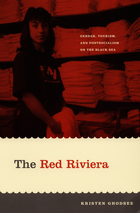 The Red Riviera: Gender, Tourism, and Postsocialism on the Black Sea
Kristen Ghodsee
Duke University Press, 2005 This compelling ethnography of women working in Bulgaria’s popular sea and ski resorts challenges the idea that women have consistently fared worse than men in Eastern Europe’s transition from socialism to a market economy. For decades western European tourists have flocked to Bulgaria’s beautiful beaches and mountains; tourism is today one of the few successful—and expanding—sectors of the country’s economy. Even at the highest levels of management, employment in the tourism industry has long been dominated by women. Kristen Ghodsee explains why this is and how women working in the industry have successfully negotiated their way through Bulgaria’s capitalist transformation while the fortunes of most of the population have plummeted. She highlights how, prior to 1989, the communist planners sought to create full employment for all at the same time that they steered women into the service sector. The women given jobs in tourism obtained higher educations, foreign language skills, and experiences working with Westerners, all of which positioned them to take advantage of the institutional changes eventually brought about by privatization. Interspersed throughout The Red Riviera are vivid examinations of the lives of Bulgarian women, including a waitress, a tour operator, a chef, a maid, a receptionist, and a travel agent. Through these women’s stories, Ghodsee describes their employment prior to 1989 and after. She considers the postsocialist forces that have shaped the tourist industry over the past fifteen years: the emergence of a new democratic state, the small but increasing interest of foreign investors and transnational corporations, and the proliferation of ngos. Ghodsee suggests that many of the ngos, by insisting that Bulgarian women are necessarily disenfranchised, ignore their significant professional successes.
 Red Rock and Rawhide: Ranching in the Grand Staircase, Escalante Canyons, and Arizona Strip Country
Jerry D. Spangler and Mark E. DeGiovanni Miller
University of Utah Press, 2024 The red rock country of southern Utah, though used for many things, has for more than a century been synonymous with livestock ranching. Federal ownership and management of public lands there have led generations of socially isolated ranchers to mistrust federal officials and exhibit outright hostility toward environmentalists intent on removing livestock from the range, culminating in fierce rhetoric over the future of the American West.
Today, the relatively few cattle ranchers who continue to operate in southern Utah are part of a complex political and social mix of peoples and interests, as Indigenous nations, environmentalists, politicians, and tourists all have differing positions on land use in the region. In Red Rock and Rawhide, Jerry D. Spangler and Mark E. DeGiovanni Miller provide the first comprehensive examination of the history of livestock grazing in the Grand Staircase-Escalante National Monument and surrounding areas, drawing on years of research to show how the culture and industry have changed and continue to evolve.
Red Roofs and Other Stories
Tanizaki Jun'ichiro; Translated by Anthony H. Chambers and Paul McCarthy
University of Michigan Press, 2016 Tanizaki Jun'ichiro (1886–1965), the author of Naomi; A Cat, a Man, and Two Women; and The Makioka Sisters, was one of the great writers of the twentieth century. The four stories in this volume date from the first and second decades of Tanizaki’s long career and reflect themes that appear throughout his work: exoticism, sexuality, sadomasochism, contrasts between traditional and modern societies, disparities between appearance and reality, the power of dreams, amorality, an interest in cinema, and a fascination with the techniques of storytelling. The stories—translated into English here for the first time—are: “The Strange Case of Tomoda and Matsunaga” (“Tomoda to Matsunaga no hanashi,” 1926), “A Night in Qinhuai” (“Shinwai no yo,” 1919), “The Magician” (“Majutsushi,” 1917), and “Red Roofs” (“Akai yane,” 1925).
Red Rover
Susan Stewart
University of Chicago Press, 2008 Red Rover is both the name of a children’s game and a formless spirit, a god of release and permission, called upon in the course of that game. The “red rover” is also a thread of desire, and a clue to the forces of love and antipathy that shape our fate. In her most innovative work to date, award-winning poet and critic Susan Stewart remembers the antithetical forces—falling and rising, coming and going, circling and centering—revealed in such games and traces them out to many other cycles. Ranging among traditional, open, and newly-invented forms, and including a series of free translations of medieval dream visions and love poems, Red Rover begins as a historical meditation on our fall and grows into a song of praise for the green and turning world.
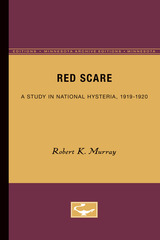 Red Scare: A Study in National Hysteria, 1919-1920
Robert K. Murray
University of Minnesota Press, 1955 Red Scare was first published in 1955. Minnesota Archive Editions uses digital technology to make long-unavailable books once again accessible, and are published unaltered from the original University of Minnesota Press editions. Few periods in American history have been so dramatic, so fraught with mystery, or so bristling with fear and hysteria as were the days of the great Red Scare that followed World War I. For sheer excitement, it would be difficult to find a more absorbing tale than the one told here. The famous Palmer raids of that era are still remembered as one of the most fantastic miscarriages of justice ever perpetrated upon the nation. The violent labor strife still makes those who lived through it shudder as they recall the Seattle general strike and Boston police strike, the great coal and steel strikes, and the bomb plots, shootings, and riots that accompanied these conflicts. But, exciting as the story may be, it has far greater significance than merely that of a lively tale. For, just as American was swept by a wave of unreasoning fear and was swayed by sensational propaganda in those days, so are we being tormented by similar tensions in the present climate of the cold war. The objective analysis of the great Red Scare which Mr. Murray provides should go a long way toward helping us to avert some of the tragic consequences that the nation suffered a generation ago before hysteria and fear had finally run their course. The author traces the roots of the phenomenon, relates the outstanding events of the Scare, and evaluates the significant effects of the hysteria upon subsequent American life.
Red Scare: Right-Wing Hysteria, Fifties Fanaticism, and Their Legacy in Texas
By Don Carleton
University of Texas Press, 2014 Winner of the Texas State Historical Association Coral Horton Tullis Memorial Prize for Best Book on Texas History, this authoritative study of red-baiting in Texas reveals that what began as a coalition against communism became a fierce power struggle between conservative and liberal politics.
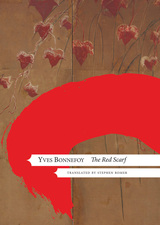 The Red Scarf: Followed by "Two Stages" and Additional Notes
Yves Bonnefoy
Seagull Books, 2021 An intensely personal and profoundly moving review of Bonnefoy’s childhood memories.
In December 2015, six months before his death at the age of 93, Yves Bonnefoy concluded what was to be his last major text in prose, L’écharpe rouge, translated here as The Red Scarf. In this unique book, described by the poet as "an anamnesis"—a formal act of commemoration—Bonnefoy undertakes, at the end of his life, a profoundly moving exegesis of some fragments written in 1964. These fragments lead him back to an unspoken, lifelong anxiety: “My most troubling memory, when I was between ten and twelve years old, concerns my father, and my anxiety about his silence.” Bonnefoy offers an anatomy of his father’s silence, and of the melancholy that seemed to take hold some years into his marriage to the poet’s mother.
At the heart of this book is the ballad of Elie and Hélène, the poet’s parents. It is the story of their lives together in the Auvergne, and later in Tours, seen through the eyes of their son—the solitary boy’s intense but inchoate experience, reviewed through memories of the now elderly man. What makes The Red Scarf indispensable is the intensely personal nature of the material, casting its slant light, a setting sun, on all that has gone before.
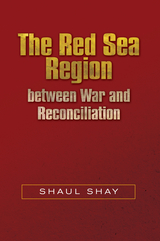 The Red Sea Region between War and Reconciliation
Shaul Shay
Sussex Academic Press, 2022 The Red Sea is one of the world's most important trade routes, a theater of power struggle among local, regional and global powers. Military and political developments continue to impact on the geostrategic landscape of the region in the context of its trade thoroughfare for Europe, China, Japan and India; freedom of navigation is a strategic interest for Egypt, and essential for Israel's economic ties with Asia.
Superpower confrontation is inevitable. China, the US, France, Japan and Saudi Arabia have military bases in Djibouti. US strategy seeks to curb Chinese economic influence and Russian political interference in the region through diplomacy and investment. And at the centre of US alliances is the war on terror still prevalent in the Middle East and East Africa: Islamic terror groups Al Shabaab in Somalia and Kenya; Al Qaeda of the Arab Peninsula in Yemen; and the Islamic State in Egypt. The civil war in Yemen has become the arena for Iran and Saudi Arabia's struggle for regional hegemony. Saudi Arabia's Sunni Arab coalition have been fighting Iranian-backed Shiite Houthi rebels to a stalemate (December 2018).
In 2016 Egypt ceded Saudi Arabia the Tiran and Sanafir Islands, the narrow sea passages between the Sinai and Arabian peninsulas, giving control of the entire length of the Red Sea. This, and other perceived positive geostrategic developments, have to be offset by the nuclearization of the Red Sea basin (directed in part by Russian foreign policy) and the dangers of multiple country military deployments in the hubs of radical Islam and terrorism potential. A stable future for the region cannot be taken for granted. And as alliances shift and change, so will Israel's foreign policy and strategic partnerships have to adjust.
 Red Silk: Class, Gender, and Revolution in China’s Yangzi Delta Silk Industry
Robert Cliver
Harvard University Press, 2020 Red Silk is a history of China’s Yangzi Delta silk industry during the wars, crises, and revolutions of the mid-twentieth century. Based on extensive research in Chinese archives and focused on the 1950s, the book compares two very different groups of silk workers and their experiences in the revolution. Male silk weavers in Shanghai factories enjoyed close ties to the Communist party-state and benefited greatly from socialist policies after 1949. In contrast, workers in silk thread mills, or filatures, were mostly young women who lacked powerful organizations or ties to the revolutionary regime. For many filature workers, working conditions changed little after 1949 and politicized production campaigns added a new burden within the brutal and oppressive factory regime in place since the nineteenth century.
Both groups of workers and their employers had to adapt to rapidly changing circumstances. Their actions—protests, petitions, bribery, tax evasion—compelled the party-state to adjust its policies, producing new challenges. The results, though initially positive for many, were ultimately disastrous. By the end of the 1950s, there was widespread conflict and deprivation among silk workers and, despite its impressive recovery under Communist rule, the industry faced a crisis worse than war and revolution.
Red Silk: Poems
Maryfrances Wagner
BkMk Press, 2022 Red Silk by Missouri Poet Laureate Maryfrances Wagner is now back in print. Winner of the Thorpe Menn Award, Red Silk’s subjects draw upon her Italian-American immigrant family, personal reverberations of the Vietnam War, and coming of age in the Midwest.
Red Skelton: The Mask behind the Mask
Wes Gehring
Indiana Historical Society Press, 2008 For more than twenty years, Hoosier comic Red Skelton entertained millions of viewers who gathered around their television sets to delight in the antics of such notable characters as Freddie the Freeloader, Clem Kaddiddlehopper, Cauliflower McPugg, and Sheriff Deadeye. Noted film historian Wes D. Gehring examines the man behind the characters—someone who never let the facts get in the way of a good story. Gehring delves into Skelton's hardscrabble life with a shockingly dysfunctional family in the southern Indiana community of Vincennes, his days on the road on the vaudeville circuit, the comedian's early success on radio, his up-and-down movie career with Metro-Goldwyn-Mayer, and his sometimes tragic personal life.
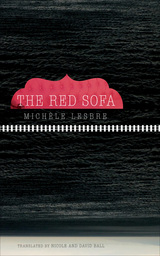 The Red Sofa
Michel Lesbre
Seagull Books, 2017 Now in paperback, The Red Sofa is a quiet French novella exploring love, memory, and the perspective that travel gives us on both.
In The Red Sofa, we meet Anne, a young woman setting off on the Trans-Siberian Railway in order to find her former lover, Gyl, who left twenty years before. As the train moves across post-Soviet Russia and its devastated landscapes, Anne reflects on her past with Gyl and their patriotic struggles, as well as on the neighbor she has just left behind, Clémence Barrot.
Rocked by the train’s movements Anne is moved by her memory of Clémence, who is old and whose memory is failing, but who has not lost her taste for life and adventure. Ensconced on her red sofa at home, Clémence loves to tell Anne her life story, mourning lost loved ones and celebrating the lives of brave, rebellious women who went before her. Eventually, Anne’s train trip returns her home having not found Gyl, but having found something much more meaningful—herself.
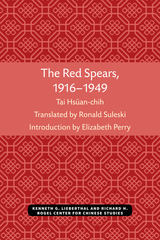 The Red Spears, 1916–1949
Tai Hsüan-chih; Translated by Ronald Suleski; Introduction by Elizabeth Perry
University of Michigan Press, 1981 Before Tai Hsüan-chih’s work on the Red Spear Society, the subject was a little understood movement that seemed of only passing interest to scholars of China—intriguing for its peculiar beliefs and rituals, perhaps, but hardly of central importance to modern Chinese history. Today, however, thanks in no small measure to the pioneering work of Professor Tai, the Red Spears have gained a secure niche in scholarship on modern China. Their numbers (reaching perhaps some three million participants at the height of the movement) and enduring (lasting intermittently for several decades) should stand as reason enough for the recent scholarly attention. But the Red Spears have generated interest for other reasons as well. As research has developed into the history both of China’s traditional rural rebellions and of her Communist revolution has developed over the past few years, the Red Spears have assumed increasing significance. A movement which bore marked similarities to earlier Chinese uprisings (most notably the Boxers), the Red Spears nevertheless operated in a later period of history (right through the middle of the twentieth century) which brought them in direct contact with Communist revolutionaries. An analysis of the Red Spears thus becomes important both for what it can tell us about longstanding patterns of rural rebellion in China, and for what it suggests about the nature of Chinese revolution.
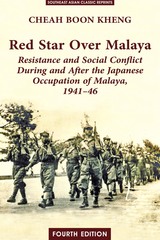 Red Star Over Malaya: Resistance and Social Conflict During and After the Japanese Occupation, 1941-1946
Cheah Boon Kheng
National University of Singapore Press, 2012 Red Star Over Malaya is an account of the inter-racial relations between Malays and Chinese during the final stages of the Japanese occupation. In 1947, none of the three major race of Malaya - Malays, Chinese, and Indians - regarded themselves as pan-ethnic "Malayans" with common duties and problems. With the occupation forcibly cut them off from China, Chinese residents began to look inwards towards Malaya and stake political claims, leading inevitably to a political contest with the Malays. As the country advanced towards nationhood and self-government, there was tension between traditional loyalties to the Malay rulers and the states, or to ancestral homelands elsewhere, and the need to cultivate an enduring loyalty to Malaya on the part of those who would make their home there in future.
As Japanese forces withdrew from the countryside, the Chinese guerrillas of the communist-led resistance movement, the Malayan People's Anti-Japanese Army (MPAJA), emerged from the jungle and took control of some 70 per cent of the country's smaller towns and villages, seriously alarming the Malay population. When the British Military Administration sought to regain control of these liberated areas, the ensuing conflict set the tone for future political conflicts and marked a crucial stage in the history of Malaya. Based on extensive archival research, Red Star Over Malaya provides a riveting account of the way the Japanese occupation reshaped colonial Malaya, and of the tension-filled months that followed Japan's surrender. This book is fundamental to an understanding of social and political developments in Malaysia during the second half of the 20th century.
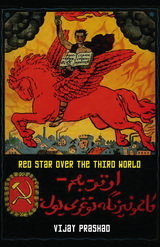 Red Star Over the Third World
Vijay Prashad
Pluto Press, 2019 “An original and much needed analysis of an important but neglected aspect of the legacy of the Russian Revolution…. Essential reading.”—Mary Davis, Marx Memorial Library
From Cuba to Vietnam, China to South Africa, the October Revolution of 1917 inspired millions of people beyond the territory of Russia. It proved that the masses could not only overthrow autocratic governments, but that they could also form an opposing government in their own image.
The new idea that the working class and the peasantry could be allied, combined with the clear strength and necessity of a vanguard party, guided multiple revolutions across the globe. Here is much-needed antidote to all the glum histories written on the demise of the Soviet Union. Vijay Prashad throws a spotlight on the way the Russian Revolution was seen and received in the countries colonized by European empires. With Russia as an inspiration and providing support, suddenly workers and peasants, those left out of capitalist prosperity, organized and attempted to create for themselves real socialist revolution. Prashad’s chapters include:
*Eastern Graves
*Red October
*Follow the Path of the Russians
*The Lungs of Russia
*Soviet Asia
*Enemy of Imperialism
*Eastern Marxism
*Colonial Fascism
*Polycentric Communism
*Memories of Communism
The author writes in this Preface, “It has been a quarter-century since the demise of the USSR. And yet, the marks of the October Revolution remain—not just in the territories of the USSR but more so in what used to be known as the Third World. From Cuba to Vietnam, from China to South Africa, the October Revolution remains as an inspiration. After all, that Revolution proved that the working class and the peasantry could not only overthrow an autocratic government but it could form its own government.”
This book explains the power of the October Revolution in the Global South. From Ho Chí Minh to Fidel Castro, reflections on polycentric communism, and collective memories of communism, it shows how, for a brief moment, another world was possible.
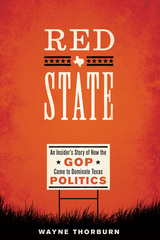 Red State: An Insider's Story of How the GOP Came to Dominate Texas Politics
By Wayne Thorburn
University of Texas Press, 2014 In November 1960, the Democratic party dominated Texas. The newly elected vice president, Lyndon Johnson, was a Texan. Democrats held all thirty statewide elective positions. The state legislature had 181 Democrats and no Republicans or anyone else. Then fast forward fifty years to November 2010. Texas has not voted for a Democratic president since 1976. Every statewide elective office is held by Republicans. Representing Texas in Washington is a congressional delegation of twenty-five Republicans and nine Democrats. Republicans control the Texas Senate by a margin of nineteen to twelve and the Texas House of Representatives by 101 to 49. Red State explores why this transformation of Texas politics took place and what these changes imply for the future. As both a political scientist and a Republican party insider, Wayne Thorburn is especially qualified to explain how a solidly one-party Democratic state has become a Republican stronghold. He analyzes a wealth of data to show how changes in the state’s demographics—including an influx of new residents, the shift from rural to urban, and the growth of the Mexican American population—have moved Texas through three stages of party competition, from two-tiered politics, to two-party competition between Democrats and Republicans, and then to the return to one-party dominance, this time by Republicans. His findings reveal that the shift from Democratic to Republican governance has been driven not by any change in Texans’ ideological perspective or public policy orientation—even when Texans were voting Democrat, conservatives outnumbered liberals or moderates—but by the Republican party’s increasing identification with conservatism since 1960.
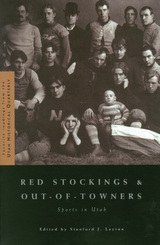 Red Stockings and Out-of-Towners: Sports in Utah
Stanford J. Layton
Signature Books, 2003 Long before professional basketball came to Utah in 1970, the state boasted an impressive record in other sports including its share of superstars: Jack Dempsey, world heavyweight boxing champion, 1919-26; Iver Lawson, international cycling champion, 1904; Alf Engen whose world ski-jumping records in the 1930s-40s prompted Sports Illustrated to remember him as “the Michael Jordan of his sport”; Ab Jenkins who set the world land-speed endurance record in 1940; and tennis player David Freed who won the U.S. Senior Singles tournament in 1954.
In team sports, the nearly forgotten Salt Lake Seagulls of 1946-47 competed against the best pro football teams in the West, while two baseball teams, the Salt Lake Deserets and their inner-city rival, the Red Stockings, played successfully in 1878-79 against the Cheyenne Reds, the Chicago White Stockings, the Denver Browns, the Nebraska Omahas, and the Rochester Hop Bitters.
Added to these, such pastimes as horse racing at the state fairgrounds, a winter ascent of Mt. Timpanogos in 1916, and angling at Fish Lake National Forest show the diversity and evolution of athletics in Utah. Like replaying the 1998 title game between the Utah Jazz and the Chicago Bulls, these assembled tales of perseverance, skill, exuberance, and heartbreak from long ago are equally thrilling.
Red Strawberry Leaf: Selected Poems, 1994-2001
John Peck
University of Chicago Press, 2005 The poems in Red Strawberry Leaf speak in a voice unique in American letters, moving effortlessly beyond arbitrary city limits and national borders, transcending trends, continents, and eras to connect individual states of mind to the whole of Western culture. Written over seven years, Red Strawberry Leaf meditates on the spirit's engagement with the world in an allusive, personal style, in which neither the personal nor the tribal holds pride of place. Scattered touches of apocalypse and dark collective inventories serve only to highlight moments of burnished, lyric brilliance. These challenging poems will reward readers many times over.
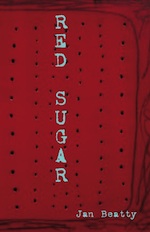 Red Sugar
Jan Beatty
University of Pittsburgh Press, 2008 “Red Sugar is tantalizing and forbidden, but it is no peepshow. The poems are raw, brash, and full of pluck, yet there is tenderness and honest emotion at the core. Jan Beatty reminds us that there is 'nothing / between us and death but one inch.' She takes us to the edge of being and shows us our own quick mortal souls. Yes, there's rock music and prison sex-but do not think for a moment that this book is merely licentious. Beatty casts a broad canopy over human desire, and within the scope of experience, she finds, too, that we are innocent and sublime beings. A rich, rare treat, this Red Sugar.”
—D. A. Powell
"Tthe boldly sexual first person narratives in Red Sugar are absolutely riveting, artfully fleshed-out poems which generate fear for the character's safety."
—ForeWord Magazine
"This electric, nerve-jangling collection revels in and sometimes rails against the glorious mess of inhabiting a body. The poems, in this, her third collection, are often raw, and full of sex, drugs and rock n' roll, but they're also shockingly soft and tender."
--Pittsburgh Magazine
Red Sun and Merlin Unchained
David Rudkin
Intellect Books, 2011 Red Sun and Merlin Unchained are the most recent original stage works by one of the most accomplished yet neglected dramatists of our time. Red Sun is a two-hander, tightly tethered within the classical unities of theme and space and the span of a single day. Merlin Unchained is an explosive, multitudinous epic, crossing continents and centuries and passing between worlds. Yet though technically so different, both works speak with the same distinctive voice, offering an exhilarating—and sometimes disturbing— challenge to the cultural and political perceptions of the contemporary audience, and exploring alien worlds that, alarmingly, begin to become recognizable as our own.
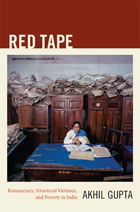 Red Tape: Bureaucracy, Structural Violence, and Poverty in India
Akhil Gupta
Duke University Press, 2012 Red Tape presents a major new theory of the state developed by the renowned anthropologist Akhil Gupta. Seeking to understand the chronic and widespread poverty in India, the world's fourth largest economy, Gupta conceives of the relation between the state in India and the poor as one of structural violence. Every year this violence kills between two and three million people, especially women and girls, and lower-caste and indigenous peoples. Yet India's poor are not disenfranchised; they actively participate in the democratic project. Nor is the state indifferent to the plight of the poor; it sponsors many poverty amelioration programs. Gupta conducted ethnographic research among officials charged with coordinating development programs in rural Uttar Pradesh. Drawing on that research, he offers insightful analyses of corruption; the significance of writing and written records; and governmentality, or the expansion of bureaucracies. Those analyses underlie his argument that care is arbitrary in its consequences, and that arbitrariness is systematically produced by the very mechanisms that are meant to ameliorate social suffering. What must be explained is not only why government programs aimed at providing nutrition, employment, housing, healthcare, and education to poor people do not succeed in their objectives, but also why, when they do succeed, they do so unevenly and erratically.
The Red Thread: The Passaic Textile Strike
Jacob A. Zumoff
Rutgers University Press, 2021 This book tells the story of 15,000 wool workers who went on strike for more than a year, defying police violence and hunger. The strikers were mainly immigrants and half were women. The Passaic textile strike, the first time that the Communist Party led a mass workers’ struggle in the United States, captured the nation’s imagination and came to symbolize the struggle of workers throughout the country when the labor movement as a whole was in decline during the conservative, pro-business 1920s. Although the strike was defeated, many of the methods and tactics of the Passaic strike presaged the struggles for industrial unions a decade later in the Great Depression.
Red Under The Skin
Natasha Saje
University of Pittsburgh Press, 1994 Winner of the 1995 Towson State University Prize for Literature and the 1993 Agnes Lynch Starrett Poetry Prize.
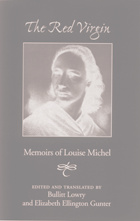 Red Virgin: Memoirs Of Louise Michel
Louise Michel, edited and translated by Bullitt Lowry and Elizabeth Gunter
University of Alabama Press, 1981 Personal memoires of influential French feminist socialist and radicalist Louise Michel, a participant and observer in the Paris Commune. Louise Michel was born illegitimate in 1830 and became a schoolmistress in Paris. She was involved in radical activities during the twilight of France’s Second Empire, and during the Franco-Prussian War of 1870 and the siege of Paris. She was a leading member of the revolutionary groups controlling Montmarte. Michel emerged as one of the leaders of the insurrection during the Paris Commune of March-May 1871; and French anarchists saw her as martyr and saint, "the Red Virgin." These are her memoires. When the Versailles government crushed the Commune in May 1871, Michel was sentenced to exile in New Caledonia, until the general amnesty of 1880, when she returned to France and great popular acclaim and support from the working people of the country. Michel was arrested again during a demonstration in Paris in 1883 and sentenced to six years in prison. Pardoned after three years, she continued her speeches and writing, although she spent the greater part of her time from 1890 until her death in 1905 in England in self-imposed exile. It was during her prison term from 1883 to 1886 that she compiled her Memoires, now available in English. These memoirs offer readers a view of the non-Marxist left and give an in-depth look into the development of the revolutionary spirit. The early chapters treat her childhood, the development of her revolutionary feelings, and her training as a schoolteacher. The next section describes her activities as a schoolteacher in the Haute-Marne and Paris and therefore contains much of interest on education in 19th-century Europe. Her chapters on the siege of Paris, the Commune, and her first trial show those events from the point of view of a major participant. Of particular interest is a chapter on women’s rights, which Michel saw as part of the search for the rights of all people, male and female, and not as a separate struggle. The Red Virgin: Memoirs of Louise Michel will be useful to both scholars and students of 19th-century French history and women’s studies.
Red Virgin Soil: Soviet Literature in the 1920's
Robert A. Maguire
Northwestern University Press, 2000 First published in 1968, this classic is a richly detailed study of the eponymous journal that was the most significant Soviet literary journal of the 1920s. It is also a comprehensive survey of Soviet literary culture in a critical period when writers could still engage in public debate.
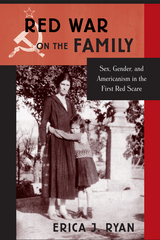 Red War on the Family: Sex, Gender, and Americanism in the First Red Scare
Erica J Ryan
Temple University Press, 2016 In the 1920s, cultural and political reactions to the Red Scare in America contributed to a marked shift in the way Americans thought about sexuality, womanhood, manhood, and family life. The Russian Revolution prompted anxious Americans sensing a threat to social order to position heterosexuality, monogamy, and the family as a bulwark against radicalism.
In her probing and engaging book, Red War on the Family, Erica Ryan traces the roots of sexual modernism and the history of antiradicalism and antifeminism. She illuminates how Americans responded to foreign and domestic threats and expressed nationalism by strengthening traditional gender and family roles-especially by imposing them on immigrant groups, workers, women, and young people.
Ryan argues that the environment of political conformity in the 1920s was maintained in part through the quest for cultural and social conformity, exemplified by white, middle-class family life. Red War on the Family charts the ways Americanism both reinforced and was reinforced by these sexual and gender norms in the decades after World War I.
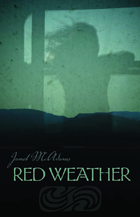 Red Weather
Janet McAdams
University of Arizona Press, 2012 This trip wasn’t about her, her need to escape. She had been too young when it happened. Too young to understand what could be worth risking everything for. Even now they seemed naïve, foolish in their belief that anything could change. They had tried to save a generation. If she couldn’t save them, she might find a way to finish their story. Neva Greene is seeking answers. The daughter of American Indian activists, Neva hasn’t seen or heard from her parents since they vanished a decade earlier, after planning an act of resistance that went terribly wrong. Discovering a long-overlooked clue to their disappearance, Neva follows their trail to Central America, leaving behind an uncaring husband, an estranged brother, and a life of lukewarm commitments. Determined to solve the mystery of her parents’ disappearance, Neva finds work teaching English in the capital city of tiny Coatepeque, a country torn by its government’s escalating war on its Indigenous population. As the violence and political unrest grow around her, Neva meets a man whose tenderness toward her seems to contradict his shadowy political connections. Against the backdrop of Central American politics, this suspenseful first novel from award-winning poet Janet McAdams explores an important chapter in American Indian history. Through finely drawn, compelling characters and lucidly beautiful prose, Red Weather explores the journey from loss to possibility, from the secrets of the past to the longings of the present.
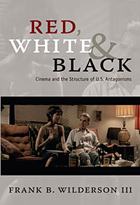 Red, White & Black: Cinema and the Structure of U.S. Antagonisms
Frank B. Wilderson III
Duke University Press, 2010 Red, White & Black is a provocative critique of socially engaged films and related critical discourse. Offering an unflinching account of race and representation, Frank B. Wilderson III asks whether such films accurately represent the structure of U.S. racial antagonisms. That structure, he argues, is based on three essential subject positions: that of the White (the “settler,” “master,” and “human”), the Red (the “savage” and “half-human”), and the Black (the “slave” and “non-human”). Wilderson contends that for Blacks, slavery is ontological, an inseparable element of their being. From the beginning of the European slave trade until now, Blacks have had symbolic value as fungible flesh, as the non-human (or anti-human) against which Whites have defined themselves as human. Just as slavery is the existential basis of the Black subject position, genocide is essential to the ontology of the Indian. Both positions are foundational to the existence of (White) humanity. Wilderson provides detailed readings of two films by Black directors, Antwone Fisher (Denzel Washington) and Bush Mama (Haile Gerima); one by an Indian director, Skins (Chris Eyre); and one by a White director, Monster’s Ball (Marc Foster). These films present Red and Black people beleaguered by problems such as homelessness and the repercussions of incarceration. They portray social turmoil in terms of conflict, as problems that can be solved (at least theoretically, if not in the given narratives). Wilderson maintains that at the narrative level, they fail to recognize that the turmoil is based not in conflict, but in fundamentally irreconcilable racial antagonisms. Yet, as he explains, those antagonisms are unintentionally disclosed in the films’ non-narrative strategies, in decisions regarding matters such as lighting, camera angles, and sound.
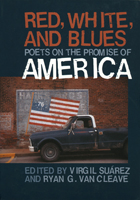 Red, White, and Blues: Poets on the Promise of America
Virgil & Ryan G. Suarez & Van Cleave
University of Iowa Press, 2004
Red, White, and Blues, a new anthology from the award-winning editors of Like Thunder: Poets Respond to Violence in America and Vespers: Contemporary American Poems of Religion and Spirituality, offers a chorus of contemporary American poets on the idea of liberty, democracy, patriotism, and the American Dream;a twenty-first-century "Song of Myself” for the entire country.
The poems in Red, White, and Blues reflect our collective memory—from icons of pop culture to national disasters and times of unrest. Yet they are not simply reflections of the headline news or political diatribes of the day; instead, they provide roadmaps of American history—roadmaps of where we’ve been, who we are, and where we’re going as a nation.
Poets as diverse as Martín Espada and Paisley Rekdal, J. P. Dancing Bear and Vivian Shipley seek to answer questions that resonate within the heart of our national identity—what does it mean to be an American? What is the American Dream? How does one define patriotism? Regardless of ethnicity, gender, or class, each poet’s answer to such questions proves that our experiences unite us more than they divide us.
Red, White, and Blues is an ambitious collection of the finest contemporary poetry on the subject of America and the indefatigable spirit of its citizens. Its poems don’t pull punches, nor do they celebrate without cause. They show spirit and excitement, outrage and joy, solemnity and ambiguity—all reflections of our wonderfully diverse nation.
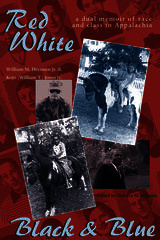 Red, White, Black, and Blue: A Dual Memoir of Race and Class in Appalachia
William M. Drennen Jr., Kojo (William T.) Jones Jr.
Ohio University Press, 2004 Red, White, Black, and Blue began as a collaborative memoir by William M. “Bill” Drennen, a European American, and Kojo (William T.) Jones, an African American. These Appalachian men grew up in the South Hills section of Charleston, West Virginia. As boys they played on the same Little League baseball team and experienced just one year together as schoolmates after the all-white Thomas Jefferson Junior High School was desegregated in 1955. After that, class, race, and choice separated their life experiences for forty-five years. In 1992 both had returned to Charleston from lives mostly lived elsewhere. They decided to work together on a memoir of growing up through the trauma of desegregation. Their aim was to foster understanding between their distinct cultures for themselves and for their own and future generations. Dolores Johnson, in editing the two texts, observed two very different modes of expression: Bill Drennen’s narrative is threaded with references that connote wealth, status, and personal privilege; Kojo Jones’s memoir is interwoven with African American signification, protest, and moral outrage. The stories of their Appalachian upbringing in homes less than a mile apart are anecdotal in nature, but their diverse uses of the English language as they endeavor to communicate shared memories and common meanings reveal significant cultural connotations that transform standard American English into two different languages, rendering interracial communication problematic. Dr. Johnson’s analysis is to the point. Red, White, Black, and Blue is a groundbreaking approach to studying not only cultural linguistics but also the cultural heritage of a historic time and place in America. It gives witness to the issues of race and class inherent in the way we write, speak, and think.
 Red Wilderness
Aaron Coleman
Four Way Books, 2025 In defiance of life’s intractable march forward, Red Wilderness by Aaron Coleman (Winner of the 2020 GLCA New Writers Award) sounds the strange fathoms of the past, weaving a living song beyond what haunts our country and ourselves. Coleman's second collection interpolates American history with his own family's legacy, reflecting on national identity, Blackness, taboo, faith, and remembrance while enacting a multigenerational chorus of poems that stretches back to the Civil War. In present day, Coleman “[tries] a new way home / past the pawn shop neon-green with memory” and inspects bird bones in “tall, forgotten weeds” while “hard rain” turns his ground into “a gulch”—another place where “the end got here before us.” In the next poem, transported between storms, Coleman channels his ancestor, a soldier of the Pennsylvania 25th Colored Infantry at sea during a downpour in March 1864: “I say no to death now. I’m nobody’s slave / now. I’m alive and not alone.” In these restorative lyrics, an end is an entrypoint to memory and reimagination, to something unending—a spiritual freedom, collective strength, and boundless love threading separate years into one strand. Red Wilderness visualizes an intimate, living archive that maps myths and realities of blood, boundaries, geography, and genealogy, and Coleman brilliantly curates the sound of time’s river wending across ancient land. “Hold and let fall water,” he instructs us. “If I / listen for my body living I hear who I am.”
The Red Years of Cahiers du cinéma (1968-1973): Volume I, Ideology and Politics
Daniel Fairfax
Amsterdam University Press, 2021 The uprising which shook France in May 1968 also had a revolutionary effect on the country’s most prominent film journal. Under editors Jean-Louis Comolli and Jean Narboni, Cahiers du cinéma embarked on a militant turn that would govern the journal's work over the next five years. Inspired by Marxist and psychoanalytic theory, the "red years" of Cahiers du cinéma produced a theoretical outpouring that was seminal for the formation of film studies and is still of vital relevance for the contemporary audiovisual landscape.
The Red Years of Cahiers du Cinéma (1968-1973) gives an overview of this period in the journal’s history and its aftermath, combining biographical accounts of the critics who wrote for Cahiers in the post 1968 period with theoretical explorations of their key texts.
The Red Years of Cahiers du cinéma (1968-1973): Volume II, Aesthetics and Ontology
Daniel Fairfax
Amsterdam University Press, 2021 The uprising which shook France in May 1968 also had a revolutionary effect on the country’s most prominent film journal. Under editors Jean-Louis Comolli and Jean Narboni, Cahiers du cinéma embarked on a militant turn that would govern the journal's work over the next five years. Inspired by Marxist and psychoanalytic theory, the "red years" of Cahiers du cinéma produced a theoretical outpouring that was seminal for the formation of film studies and is still of vital relevance for the contemporary audiovisual landscape.
The Red Years of Cahiers du Cinéma (1968-1973) gives an overview of this period in the journal’s history and its aftermath, combining biographical accounts of the critics who wrote for Cahiers in the post 1968 period with theoretical explorations of their key texts.
Redburn: Works of Herman Melville Volume Four
Herman Melville
Northwestern University Press, 1969 Redburn is a fictional narrative of a boy's first voyage, based loosely on Melville's own first voyage to and from Liverpool in 1839. Hastily composed and little esteemed by its author, Redburn was more highly thought of by his critics, who saw it regaining the ground of popular sea stories like Typee and Omoo.
Melville so disliked the novel that he submitted it to his publisher without polishing it. This scholarly edition corrects a number of errors that have persisted in subsequent editions. Based on collations of the editions published during his lifetime, it incorporates corrections made in the English edition and emendations made by the present editors.
As with all the books in the Northwestern-Newberry series, this edition of Redburn is an Approved Text of the Center for Editions of American Authors (Modern Language Association of America).
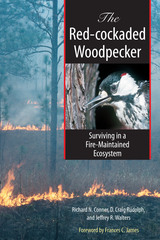 The Red-cockaded Woodpecker: Surviving in a Fire-Maintained Ecosystem
By Richard Conner, D. Craig Rudolph, and Jeffrey R. Walters
University of Texas Press, 2001 Though small among its woodpecker relatives, the Red-cockaded Woodpecker poses a huge dilemma for its human neighbors. Uniquely adapted to live in the old-growth pine forests of the southeastern United States, the Red-cockaded Woodpecker has nearly disappeared as the forests have been cleared for agricultural, commercial, and residential uses over the last two centuries. Today, it waits at a crossroads. Scientific management practices could restore the woodpecker's habitat and population, but the imperative to convert old-growth forests to other uses remains. In this book, three of the leading experts on the Red-cockaded Woodpecker offer a comprehensive overview of all that is currently known about its biology and natural history and about the ecology of the fire-maintained forests it requires for survival. As the most visible endangered species in the Southeast, and the one whose conservation impacts the largest land area, the Red-cockaded Woodpecker holds a compelling interest not only for ornithologists, but also for wildlife managers, foresters, developers, environmentalists, and government officials. For all of these groups, this book will be the essential resource for learning more about the Red-cockaded Woodpecker and ensuring its survival.
Redeemer Nation: The Idea of America's Millennial Role
Ernest Lee Tuveson
University of Chicago Press, 1980 Ernest Tuveson here shows that the idea of the redemptive mission which has motivated so much of the United States foreign policy is as old as the Republic itself. He traces the development of this element of the American heritage from its beginning as a literal interpretation of biblical prophecies. Pointing to the application of the millenarian ideal to successive stages of American history, notably apocalyptic events like the Civil War, Tuveson illustrates its pervasive cultural influences with examples from the writings of Jonathan Edwards, Harriet Beecher Stowe, Timothy Dwight, and Julia Ward Howe, among others.
Redeeming a People: The Critical Role of Historical Examination in Moving Cultural and Moral Trajectories
Darius Gray
Utah State University Press, 2020 In volume 24 of the Arrington Lecture Series, Darius Gray, who joined the LDS Church in 1964, marks the history of the years that preceded the leadership of the LDS Church’s revelation allowing all worthy male members, regardless of race, to receive the priesthood. Gray has spoken extensively during the anniversary year about his experiences as a member of the church, both before and after that historic announcement in 1978.
The Arrington Lecture series, established by one of the twentieth-century West's most distinguished historians, Leonard Arrington, has become a leading forum for prominent historians to address topics related to Mormon history. Utah State University hosts the Leonard J. Arrington Mormon History Lecture Series through the Merrill-Cazier Library Special Collections and Archives department.
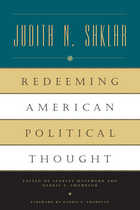 Redeeming American Political Thought
Judith N. Shklar
University of Chicago Press, 1997 Noted political philosopher Judith Shklar declined to write a book about American political thought because, she once claimed, "the subject is too hard." She finally took on this formidable task late in her career, but her untimely death left most of the work unpublished. Now Redeeming American Political Thought makes these essays, some published here for the first time, available to readers.
In these thirteen essays, Shklar explores two themes crucial to discussions of American democracy: first, what she terms the "fundamental social condition" of American life, the tension between expansive political equality and persistent social inequality; and second, "redeeming" American political thought for those who believe it lacks the complexity and depth of the European tradition. She covers issues ranging from the use of history in political discourse to the effect of skepticism on politics and thinkers from Hamilton and Jefferson to Melville. The strength and depth of this collection underscore Shklar's reputation as one of this century's most important liberal scholars.
Judith N. Shklar (1928-1992) was Cowles Professor of Government at Harvard University and the author of nine books in political philosophy.
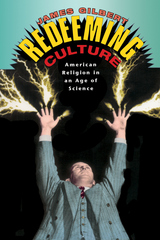 Redeeming Culture: American Religion in an Age of Science
James Gilbert
University of Chicago Press, 1997 In this intriguing history, James Gilbert examines the confrontation between modern science and religion as these disparate, sometimes hostile modes of thought clashed in the arena of American culture. Beginning in 1925 with the infamous Scopes trial, Gilbert traces nearly forty years of competing attitudes toward science and religion.
"Anyone seriously interested in the history of current controversies involving religion and science will find Gilbert's book invaluable."—Peter J. Causton, Boston Book Review
"Redeeming Culture provides some fascinating background for understanding the interactions of science and religion in the United States. . . . Intriguing pictures of some of the highlights in this cultural exchange."—George Marsden, Nature
"A solid and entertaining account of the obstacles to mutual understanding that science and religion are now warily overcoming."—Catholic News Service
"[An] always fascinating look at the conversation between religion and science in America."—Publishers Weekly
 Redeeming Economics: Rediscovering the Missing Element
John D. Mueller
Intercollegiate Studies Institute, 2014
“Groundbreaking.” —Washington Examiner
“Mueller is an extraordinarily learned man.” —Claremont Review of Books
Economics is primed for—and in desperate need of—a revolution, respected economic forecaster John D. Mueller shows in this eye-opening book. To make this leap forward will require looking backward, for as Redeeming Economics reveals, the most important element of economic theory has been ignored for more than two centuries.
Since the great Adam Smith tore down this pillar of economic thought, Mueller shows, economic theory has been unable to account for a fundamental aspect of human experience: the relationships that define us, the loves (and hates) that motivate and distinguish us as persons. In trying to reduce human behavior to exchanges, modern economists have forgotten how these essential motivations are expressed: as gifts (or their opposite, crimes). Mueller makes economics whole again, masterfully reapplying the economic thought of Aristotle, Augustine, and Aquinas.
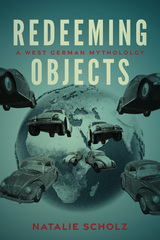 Redeeming Objects: A West German Mythology
Natalie Scholz
University of Wisconsin Press, 2023 Redeeming Objects traces the afterlives of things. Out of the rubble of World War II and the Holocaust, the Federal Republic of Germany emerged, and with it a foundational myth of the “economic miracle.” In this narrative, a new mass consumer society based on the production, export, and consumption of goods would redeem West Germany from its Nazi past and drive its rebirth as a truly modern nation. Turning this narrative on its head, Natalie Scholz shows that West Germany’s consumerist ideology took shape through the reinvention of commodities previously tied to Nazism into symbols of Germany’s modernity, economic supremacy, and international prestige.
Postwar advertising, film, and print culture sought to divest mass-produced goods—such as the Volkswagen and modern interiors—of their fascist legacies. But Scholz demonstrates that postwar representations were saturated with unacknowledged references to the Nazi past. Drawing on a vast array of popular and highbrow publications and films, Redeeming Objects adds a new perspective to debates about postwar reconstruction, memory, and consumerism.
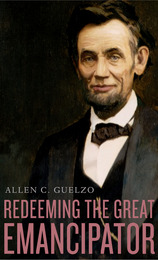 Redeeming the Great Emancipator
Allen C. Guelzo
Harvard University Press, 2016 The larger-than-life image Abraham Lincoln projects across the screen of American history owes much to his role as the Great Emancipator during the Civil War. Yet this noble aspect of Lincoln’s identity is precisely the dimension that some historians have cast into doubt. In a vigorous defense of America’s sixteenth president, award-winning historian and Lincoln scholar Allen Guelzo refutes accusations of Lincoln’s racism and political opportunism, while candidly probing the follies of contemporary cynicism and the constraints of today’s unexamined faith in the liberating powers of individual autonomy.
Redeeming the Great Emancipator enumerates Lincoln’s anti-slavery credentials, showing that a deeply held belief in the God-given rights of all people steeled the president in his commitment to emancipation and his hope for racial reconciliation. Emancipation did not achieve complete freedom for American slaves, nor was Lincoln entirely above some of the racial prejudices of his time. Nevertheless, his conscience and moral convictions far outweighed political calculations in ultimately securing freedom for black Americans.
Guelzo clarifies the historical record concerning what the Emancipation Proclamation did and did not accomplish. As a policy it was imperfect, but it was far from ineffectual, as some accounts of African American self-emancipation imply. To achieve liberation required interdependence across barriers of race and status. If we fail to recognize our debt to the sacrifices and ingenuity of all the brave men and women of the past, Guelzo says, then we deny a precious part of the American and, indeed, the human community.
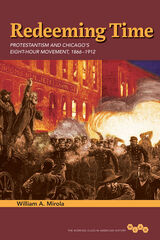 Redeeming Time: Protestantism and Chicago's Eight-Hour Movement, 1866-1912
William A. Mirola
University of Illinois Press, 2015 During the struggle for the eight-hour workday and a shorter workweek, Chicago emerged as an important battleground for workers in "the entire civilized world" to redeem time from the workplace in order to devote it to education, civic duty, health, family, and leisure.
William A. Mirola explores how the city's eight-hour movement intersected with a Protestant religious culture that supported long hours to keep workers from idleness, intemperance, and secular leisure activities. Analyzing how both workers and clergy rewove working-class religious cultures and ideologies into strategic and rhetorical frames, Mirola shows how every faith-based appeal contested whose religious meanings would define labor conditions and conflicts. As he notes, the ongoing worker-employer tension transformed both how clergy spoke about the eight-hour movement and what they were willing to do, until intensified worker protest and employer intransigence spurred Protestant clergy to support the eight-hour movement even as political and economic arguments eclipsed religious framing.
A revealing study of an era and a movement, Redeeming Time illustrates the potential--and the limitations--of religious culture and religious leaders as forces in industrial reform.
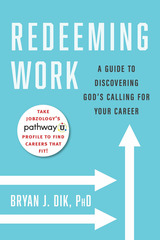 Redeeming Work: A Guide to Discovering God's Calling for Your Career
Bryan J. Dik
Templeton Press, 2020 The world of work is changing rapidly. As a Christian trying to discern the right career path, you might perceive the marketplace as a bewildering and anxiety-provoking place. You might even worry you’ll have to sacrifice your values to have a successful career. How can you hope to find work that is informed by faith and that serves God’s will? Redeeming Work was written to answer just this question.
The author, Bryan Dik, PhD, is one of the leading psychologists in the world who specializes in vocation. A professor, entrepreneur, and follower of Christ, Dik wrote this book as a labor of love after devoting his career to research and development of practical strategies for helping others find purposeful work. His message: there are abundant opportunities for Christians to forge careers that answer God’s calling for their lives. In Redeeming Work, he shares the tools you need to find these opportunities and pursue them successfully.
Your purchase of Redeeming Work comes with a special bonus: free access to an evidence-based online career assessment system called PathwayU. By taking this assessment, you’ll learn about what makes you unique, including what you enjoy (interests), what matters to you (values), your general tendencies (personality), and what you most need from an organization (workplace preferences). Then, you’ll be able to explore career paths (and current job openings) that fit the pattern of gifts God has given you.
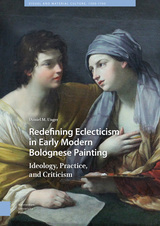 Redefining Eclecticism in Early Modern Bolognese Painting: Ideology, Practice, and Criticism
Daniel M. Unger
Amsterdam University Press, 2019 Redefining Eclecticism in Early Modern Bolognese Painting. Ideology, Practice, and Criticism focuses on the unique nature of early modern Bolognese painting that found its expression in stylistic diversity. The flourishing of different stylistic approaches in the Mannerist paintings of the previous generation evolved, at the turn the seventeenth century, in the work of the Bolognese painters into an approach best described as eclecticism, characterized by the combination of two or more styles in a single work of art. Eclectism was a major innovation and major contribution to the history of art. But it then also became a critical term that suffered much negative press. The book therefore also traces the role of ecclecticism as a concept in the evolution of criticism and scholarship about the Bolognese school of painting over 250 years, showing how the dramatically vacillating attitudes towards this concept shaped the historical view of the Bolognese painters, ultimately having a tremendous dampening impact on our understanding of seventeenth-century art.
 Redefining First-Century Jewish and Christian Identities: Essays in Honor of Ed Parish Sanders
Fabian E. Udoh
University of Notre Dame Press, 2008
For nearly four decades, E. P. Sanders has been the foremost scholar in shaping and refocusing scholarly debates in three different but related disciplines in New Testament studies: Second Temple Judaism, Jesus and the Gospels, and Pauline studies. This collection of essays by an impressive array of colleagues and former students presents original scholarship that extends—or departs from—the research of Sanders himself. Both apologists and dissenters find their place in this volume, as the authors actively debate Sanders’s innovative positions on central issues in all three disciplines.
The introductory group of essays includes a substantive intellectual autobiography by E. P. Sanders himself. The next three parts examine in turn the three areas in which Sanders made his important contributions. The essays in part 2 engage Sanders's notion of “common Judaism.” Those in part 3 deal with issues that Sanders raised respecting the historical Jesus and the Gospels. And the essays in part 4 debate, among other issues, Sanders’s contention that participation in Christ, rather than justification by faith, is the central theme of Paul’s soteriology. The volume concludes with a bibliography of Sanders's works.
“This volume is a fitting tribute to the single most influential scholar in the fields of New Testament and early Judaism of the last half century. . . . A real strength of this volume is that most of the essays not only directly engage the work of Ed Parish Sanders but confirm, refine, and even extend various aspects of his innovative and widely debated positions on central issues in the study of Jesus, Paul, and Second Temple Judaism.” —Daniel C. Harlow, Calvin College
“No scholar of our generation has done more to advance the study of the New Testament than E. P. Sanders, whose work has revolutionized our understanding of early Judaism, the historical Jesus, and the apostle Paul. These are three enormously significant areas of research; most good scholars need an entire career to master, let alone influence, any one of them. The present collection of essays by leading researchers of early Judaism and early Christianity—including an insightful intellectual autobiography by the great man himself—is a fitting tribute to the career and thought of a giant in the field.” —Bart D. Ehrman, James A. Gray Professor, University of North Carolina at Chapel Hill
“A celebratory testimonial to the far-ranging interests of the most influential intertestamental historian of our age, this stellar, seminal, stimulating compendium—one exciting essay on the heels of another—is a veritable ‘scholarly page-turner.’ Gloriously rich in content, provocatively diverse in perspective, and brilliant in categorization and sequence, this volume will be indispensable to all of E. P. Sanders' followers and reactors as well as to present and future newcomers to his distinctive contributions.” —Michael J. Cook, Sol & Arlene Bronstein Professor of Judeo-Christian Studies, Hebrew Union College-Jewish Institute of Religion
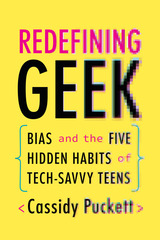 Redefining Geek: Bias and the Five Hidden Habits of Tech-Savvy Teens
Cassidy Puckett
University of Chicago Press, 2022 A surprising and deeply researched look at how everyone can develop tech fluency by focusing on five easily developed learning habits. Picture a typical computer geek. Likely white, male, and someone you’d say has a “natural instinct” for technology. Yet, after six years teaching technology classes to first-generation, low-income middle school students in Oakland, California, Cassidy Puckett has seen firsthand that being good with technology is not something people are born with—it’s something they learn. In Redefining Geek, she overturns the stereotypes around the digitally savvy and identifies the habits that can help everyone cultivate their inner geek. Drawing on observations and interviews with a diverse group of students around the country, Puckett zeroes in on five technology learning habits that enable tech-savvy teens to learn new technologies: a willingness to try and fail, management of frustration and boredom, use of models, and the abilities to use design logic and identify efficiencies. In Redefining Geek, she shows how to measure and build these habits, and she demonstrates how many teens historically marginalized in STEM are already using these habits and would benefit from recognition for their talent, access to further learning opportunities, and support in career pathways. She argues that if we can develop, recognize, and reward these technological learning habits in all kids—especially girls and historically marginalized racial and ethnic groups—we can address many educational inequities and disparities in STEM. Revealing how being good with technology is not about natural ability but habit and persistence, Redefining Geek speaks to the ongoing conversation on equity in technology education and argues for a more inclusive technology learning experience for all students.
Redefining Health Care Systems
Robert H. Brook
RAND Corporation, 2015 This book provides a scientific and personal perspective on health services research over the last half-century. Its essays and commentaries suggest how that science base, constructed over decades of sustained effort, can stimulate innovative thinking about ways to make health care systems safer, more efficient, more cost-effective, and more patient-centered.
Redefining Heresy and Tolerance: Governance of Muslims and Christians in the Qing Empire before 1864
Tak Wai Hung
Hong Kong University Press, 2024 Insight into the Qing dynasty’s policies towards Muslims and Christians traveling to East Asia.
Redefining Heresy and Tolerance demonstrates how the political philosophies of toleration developed in the context of late Imperial China were different from the theories that emerged in the West during their time. Focusing on religious policy in the Qing Empire, Hung attempts to clarify the Qing toleration policies and the reasoning behind them. He also demonstrates how the Qing government prevented Confucian bureaucrats from interfering in the religious life of Christians and Muslims, and how the Confucians’ understanding of “religion” was reshaped in the period.
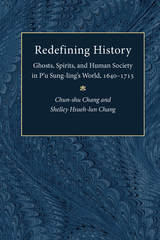 Redefining History: Ghosts, Spirits, and Human Society in P'u Sung-ling's World, 1640-1715
Chun-shu Chang and Shelley Hsueh-lun Chang
University of Michigan Press, 1998 This fascinating new book by Chun-shu Chang and Shelley Hsueh-lun Chang follows the career, times, and ideas of P'u Sung-ling (1640-1715) and focuses its discussion on his magnum opus, Liao-chai chih- i, or Tales of the Unusual from the Studio of Deliberation and Musing. P'u lived through the turbulent period of Ming-Ch'ing dynastic transition in the seventeenth century and he aspired, as did millions of young men of his time, to pass the Imperial Civil Service Examinations necessary for securing a government position.
While P'u did not attain his goal of becoming a statesman, having failed exam after exam for fifty years, he was not impeded in his intellectual and literary pursuits. When he died in 1715, he left a body of work including over 500 essays, 1,295 poems, 119 lyrics, 18 encyclopedias and handbooks, 20 operas, 100 folk songs, and 500 short stories. He went on to become one of the most well-known scholar-writers and the best known short-story author in Chinese history. The 500 stories in Liao-chai chih-i, which P'u composed in his self-styled capacity as historian, had the most lasting influence of any single work on the shaping of popular consciousness in China.
Following the life and literature of one man, this study sets out to detail the history of the Ming-Ch'ing dynastic transition in the East Shantung region. It is based on an exhaustive exploration of contemporary Chinese historical and literary sources, including local histories, clan and family records, autobiographical and biographical materials, folklore, essays, poems, and plays: in short, the entire range of literary sources. Using a comprehensive historical approach, the authors cover a broad array of issues relevant to the topic at hand.
Redefining History is an important source for the study of Chinese history and literature and comparative historical studies. It will also appeal to people interested in the relation between history and literature, issues of gender and class, race relations, biographical studies, and popular culture movements.
Chun-shu Chang is Professor of History, University of Michigan, and Honorary Professor of Chinese History, China. Shelley Hsueh-lun Chang is Visiting Associate Professor of History and Research Associate, Center for Chinese Studies, University of Michigan.
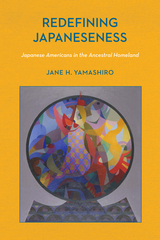 Redefining Japaneseness: Japanese Americans in the Ancestral Homeland
Yamashiro, Jane H
Rutgers University Press, 2017 There is a rich body of literature on the experience of Japanese immigrants in the United States, and there are also numerous accounts of the cultural dislocation felt by American expats in Japan. But what happens when Japanese Americans, born and raised in the United States, are the ones living abroad in Japan? Redefining Japaneseness chronicles how Japanese American migrants to Japan navigate and complicate the categories of Japanese and “foreigner.” Drawing from extensive interviews and fieldwork in the Tokyo area, Jane H. Yamashiro tracks the multiple ways these migrants strategically negotiate and interpret their daily interactions. Following a diverse group of subjects—some of only Japanese ancestry and others of mixed heritage, some fluent in Japanese and others struggling with the language, some from Hawaii and others from the US continent—her study reveals wide variations in how Japanese Americans perceive both Japaneseness and Americanness. Making an important contribution to both Asian American studies and scholarship on transnational migration, Redefining Japaneseness critically interrogates the common assumption that people of Japanese ancestry identify as members of a global diaspora. Furthermore, through its close examination of subjects who migrate from one highly-industrialized nation to another, it dramatically expands our picture of the migrant experience.
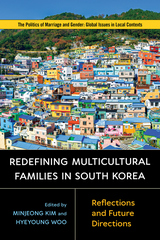 Redefining Multicultural Families in South Korea: Reflections and Future Directions
Minjeong Kim
Rutgers University Press, 2022 Redefining Multicultural Families in South Korea provides an in-depth look at the lives of families in Korea that include immigrants. Ten original chapters in this volume, written by scholars in multiple social science disciplines and covering different methodological approaches, aim to reinvigorate contemporary discussions about these multicultural families. Specially, the volume expands the scope of “multicultural families” by examining the diverse configurations of families with immigrants who crossed the Korean border during and after the 1990s, such as the families of undocumented migrant workers, divorced marriage immigrants, and the families of Korean women with Muslim immigrant husbands. Second, instead of looking at immigrants as newcomers, the volume takes a discursive turn, viewing them as settlers or first-generation immigrants in Korea whose post-migration lives have evolved and whose membership in Korean society has matured, by examining immigrants’ identities, need for political representation, their fights through the court system, and the aspirations of second-generation immigrants.
 Redefining Race: Asian American Panethnicity and Shifting Ethnic Boundaries
Dina G. Okamoto is associate professor of sociology and director of the Center for Research on Race and Ethnicity in Society at Indiana University.
Russell Sage Foundation, 2014 In 2012, the Pew Research Center issued a report that named Asian Americans as the “highest-income, best-educated, and fastest-growing racial group in the United States.” Despite this seemingly optimistic conclusion, over thirty Asian American advocacy groups challenged the findings. As many pointed out, the term “Asian American” itself is complicated. It currently denotes a wide range of ethnicities, national origins, and languages, and encompasses a number of significant economic and social disparities. In Redefining Race, sociologist Dina G. Okamoto traces the complex evolution of this racial designation to show how the use of “Asian American” as a panethnic label and identity has been a deliberate social achievement negotiated by members of this group themselves, rather than an organic and inevitable process. Drawing on original research and a series of interviews, Okamoto investigates how different Asian ethnic groups in the U.S. were able to create a collective identity in the wake of the Civil Rights movement in the 1960s. Okamoto argues that a variety of broad social forces created the conditions for this developing panethnic identity. Racial segregation, for example, shaped how Asian immigrants of different national origins were distributed in similar occupations and industries. This segregation of Asians within local labor markets produced a shared experience of racial discrimination, which encouraged Asian ethnic groups to develop shared interests and identities. By constructing a panethnic label and identity, ethnic group members took part in creating their own collective histories, and in the process challenged and redefined current notions of race. The emergence of a panethnic racial identity also depended, somewhat paradoxically, on different groups organizing along distinct ethnic lines in order to gain recognition and rights from the larger society. According to Okamoto, these ethnic organizations provided the foundation necessary to build solidarity within different Asian-origin communities. Leaders and community members who created inclusive narratives and advocated policies that benefited groups beyond their own were then able to move these discrete ethnic organizations toward a panethnic model. For example, a number of ethnic-specific organizations in San Francisco expanded their services and programs to include other ethnic group members after their original constituencies dwindled. A Laotian organization included refugees from different parts of Asia, a Japanese organization began to advocate for South Asian populations, and a Chinese organization opened its doors to Filipinos and Vietnamese. As Okamoto argues, the process of building ties between ethnic communities while also recognizing ethnic diversity is the hallmark of panethnicity. Redefining Race is a groundbreaking analysis of the processes through which group boundaries are drawn and contested. In mapping the genesis of a panethnic Asian American identity, Okamoto illustrates the ways in which concepts of race continue to shape how ethnic and immigrant groups view themselves and organize for representation in the public arena.
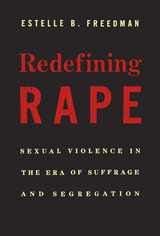 Redefining Rape: Sexual Violence in the Era of Suffrage and Segregation
Estelle B. Freedman
Harvard University Press, 2013 Rape has never had a universally accepted definition, and the uproar over "legitimate rape" during the 2012 U.S. elections confirms that it remains a word in flux. Redefining Rape tells the story of the forces that have shaped the meaning of sexual violence in the United States, through the experiences of accusers, assailants, and advocates for change. In this ambitious new history, Estelle Freedman demonstrates that our definition of rape has depended heavily on dynamics of political power and social privilege.
The long-dominant view of rape in America envisioned a brutal attack on a chaste white woman by a male stranger, usually an African American. From the early nineteenth century, advocates for women's rights and racial justice challenged this narrow definition and the sexual and political power of white men that it sustained. Between the 1870s and the 1930s, at the height of racial segregation and lynching, and amid the campaign for woman suffrage, women's rights supporters and African American activists tried to expand understandings of rape in order to gain legal protection from coercive sexual relations, assaults by white men on black women, street harassment, and the sexual abuse of children. By redefining rape, they sought to redraw the very boundaries of citizenship.
Freedman narrates the victories, defeats, and limitations of these and other reform efforts. The modern civil rights and feminist movements, she points out, continue to grapple with both the insights and the dilemmas of these first campaigns to redefine rape in American law and culture.
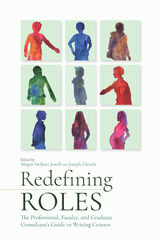 Redefining Roles: The Professional, Faculty, and Graduate Consultant’s Guide to Writing Centers
Megan Swihart Jewell
Utah State University Press, 2021 Redefining Roles is the first book to recognize and provide sustained focus on the presence of professional, faculty, and graduate student consultants in writing centers. A significant number of writing centers employ non-peer consultants, yet most major training manuals are geared toward undergraduate tutoring practices or administrators. This collection systematically addresses this gap in the literature while initiating new conversations regarding writing center staffing.
Thirty-two authors, consultants, and administrators from diverse centers—from large public four-year institutions to a private, online for-profit university—provide both theoretical frameworks and practical applications in eighteen chapters. Ten chapters focus on graduate consultants and address issues of authority, training, professional development, and mentoring, and eight focus on professional and faculty consultant training as well as specific issues of identity and authority. By sharing these voices, Redefining Roles broadens the very idea of writing centers while opening the door to more dialogue on the important role these practitioners play.
Redefining Roles is designed for writing center practitioners, scholars, and staff. It is also a necessary addition to help campus administrators in the ongoing struggle to validate the intellectually complex work that such staff performs.
Contributors: Fallon N. Allison, Vicki Behrens, Cassie J. Brownell, Matt Burchanoski, Megan Boeshart Burelle, Danielle Clapham, Steffani Dambruch, Elise Dixon, Elizabeth Festa, Will Fitzsimmons, Alex Frissell, Alex Funt, Genie Giaimo, Amanda Gomez, Lisa Lamson, Miriam E. Laufer, Kristin Messuri, Rebecca Nowacek, Kimberly Fahle Peck, Mark Pedretti, Irina Ruppo, Arundhati Sanyal, Anna Scanlon, Matthew Sharkey-Smith, Kelly A. Shea, Anne Shiell, Anna Sicari, Catherine Siemann, Meagan Thompson, Lisa Nicole Tyson, Marcus Weakley, Alex Wulff
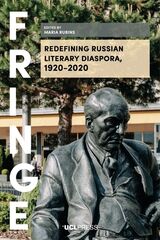 Redefining Russian Literary Diaspora, 1920–2020
Edited by Maria Rubins
University College London, 2021 A cross-disciplinary study on Russian diaspora writing.
Since the start of the massive post-revolutionary exodus, Russian literature has thrived in multiple locations around the globe—but what happens to cultural vocabularies, politics of identity, literary canon, and language when writers transcend the metropolitan and national boundaries? This volume sets a new agenda for the study of Russian diaspora writing, reorienting the field from an excessive emphasis on the homeland to an analysis of transnational circulations that shape extraterritorial cultural practices. Integrating a variety of conceptual perspectives, ranging from diaspora and postcolonial studies to the theories of translation and self-translation, world literature, and evolutionary literary criticism, the contributors argue for a distinct nature of diasporic literary expression predicated on hybridity, ambivalence, and a sense of multiple belonging. As the complementary case studies demonstrate, diaspora narratives consistently recode historical memory, contest the mainstream discourses of Russianness, rewrite received cultural tropes, and explore topics that have remained marginal or taboo in the homeland.
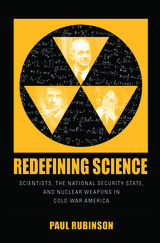 Redefining Science: Scientists, the National Security State, and Nuclear Weapons in Cold War America
Paul Rubinson
University of Massachusetts Press, 2016 The Cold War forced scientists to reconcile their values of internationalism and objectivity with the increasingly militaristic uses of scientific knowledge. For decades, antinuclear scientists pursued nuclear disarmament in a variety of ways, from grassroots activism to transnational diplomacy and government science advising. The U.S. government ultimately withstood these efforts, redefining science as a strictly technical endeavor that enhanced national security and deeming science that challenged nuclear weapons on moral grounds “emotional” and patently unscientific. In response, many activist scientists restricted themselves to purely technical arguments for arms control. When antinuclear protest erupted in the 1980s, grassroots activists had moved beyond scientific and technical arguments for disarmament. Grounding their stance in the idea that nuclear weapons were immoral, they used the “emotional” arguments that most scientists had abandoned.
Redefining Science shows that the government achieved its Cold War “consensus” only by active opposition to powerful dissenters and helps explain the current and uneasy relationship between scientists, the public, and government in debates over issues such as security, energy, and climate change.
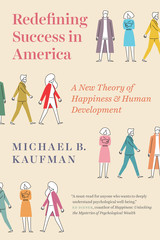 Redefining Success in America: A New Theory of Happiness and Human Development
Michael Kaufman
University of Chicago Press, 2019 Work hard in school, graduate from a top college, establish a high-paying professional career, enjoy the long-lasting reward of happiness. This is the American Dream—and yet basic questions at the heart of this competitive journey remain unanswered. Does competitive success, even rarified entry into the Ivy League and the top one percent of earners in America, deliver on its promise? Does realizing the American Dream deliver a good life? In Redefining Success in America, psychologist and human development scholar Michael Kaufman develops a fundamentally new understanding of how elite undergraduate educations and careers play out in lives, and of what shapes happiness among the prizewinners in America. In so doing, he exposes the myth at the heart of the American Dream.
Returning to the legendary Harvard Student Study of undergraduates from the 1960s and interviewing participants almost fifty years later, Kaufman shows that formative experiences in family, school, and community largely shape a future adult’s worldview and well-being by late adolescence, and that fundamental change in adulthood, when it occurs, is shaped by adult family experiences, not by ever-greater competitive success. Published research on general samples shows that these patterns, and the book’s findings generally, are broadly applicable to demographically varied populations in the United States.
Leveraging biography-length clinical interviews and quantitative evidence unmatched even by earlier landmark studies of human development, Redefining Success in America redefines the conversation about the nature and origins of happiness, and about how adults develop. This longitudinal study pioneers a new paradigm in happiness research, developmental science, and personality psychology that will appeal to scholars and students in the social sciences, psychotherapy professionals, and serious readers navigating the competitive journey.
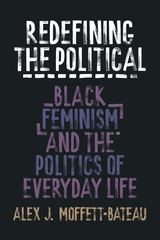 Redefining the Political: Black Feminism and the Politics of Everyday Life
Alex J. Moffett-Bateau
Temple University Press, 2024 Redefining the Political documents the political life of a community of Black women living below the poverty line. Alex Moffett-Bateau spent a year interviewing residents of a public housing development on the far South Side of Chicago about their politics, political communities, and how they create collective power.
Moffett-Bateau uses radical Black feminist political theory and develops a framework called the political possible-self, which argues that belonging to a community and developing political imagination foment change. These women employ grassroots efforts to subvert oppressive power structures by protesting institutions within their communities, addressing the benign neglect of their housing development, organizing community art shows and meals, volunteering at local public schools, and holding meetings to increase the political confidence of public-housing tenants by educating them on navigating government bureaucracies.
Ultimately, Redefining the Political shows how political engagement at both the individual and community levels can be fruitful for nontraditional political contributions.
 Redefining Theatre Communities: International Perspectives on Community-Conscious Theatre-Making
Edited by Marco Galea and Szabolcs Musca
Intellect Books, 2023 An examination of the relationship between contemporary theater and its communities.
Redefining Theatre Communities explores the interplay between contemporary theatre and communities. It considers the aesthetic, social, and cultural aspects of community-conscious theatre-making. While doing so, the volume reflects on recent transformations in structural, textual, and theatrical conventions and traditions, and explores the changing modes of production and spectatorship in relation to theatre communities. The essays in this collection present an array of emerging perspectives on the politics, ethics, and practices of community representation in the contemporary international theatre landscape. An international, interdisciplinary collection featuring work by theatre scholars, theatre-makers, and artistic directors from across Europe and beyond, Redefining Theatre Communities will appeal to those interested in the diverse forms of socially engaged theatre and performance.
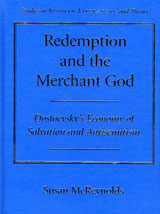 Redemption and the Merchant God: Dostoevsky's Economy of Salvation and Antisemitism
Susan McReynolds
Northwestern University Press, 2011 Dostoevsky’s Russian chauvinism and anti-Semitism have long posed problems for his readers and critics. How could the author of The Brothers Karamazov also be the source of the slurs against Jews in Diary of a Writer? And where is the celebrated Christian humanist in the nationalist outbursts of The Idiot? These enigmas—the coexistence of humanism and hatred, faith and doubt—are linked, Susan McReynolds tells us in Redemption and the Merchant God. Her book analyzes Dostoevsky’s novels and Diary to show how the author’s anxieties about Christianity can help solve the riddle of his anti-Semitism as well as that of his Russian messianism.
McReynolds’ reading demonstrates Dostoevsky suffered from a profound discomfort with the crucifixion as a vehicle for redemption. Through his work, she traces this ambivalence to certain beliefs and values that Dostoevsky held consistently throughout his life. And she reveals how this persistent ambivalence about the crucifixion led Dostoevsky to project what he didn’t like about Christianity onto the Jews—and to invest those aspects of the crucifixion that he could approve with the “Russian idea.”
A radical rereading of one of the Western canon’s most revered and perplexing authors, McReynolds’ book is also a major reconfiguring of Dostoevsky’s intellectual biography and a significant contribution to literary and cultural studies.
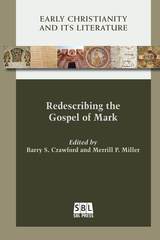 Redescribing the Gospel of Mark
Barry S. Crawford
SBL Press, 2017 A collaborative project with a variety of critical essays This final volume of studies by members of the Society of Biblical Literature’s consultation, and later seminar, on Ancient Myths and Modern Theories of Christian Origins focuses on Mark. As with previous volumes, the provocative proposals on Christian origins offered by Burton L. Mack are tested by applying Jonathan Z. Smith's distinctive social theorizing and comparative method. Essays examine Mark as an author’s writing in a book culture, a writing that responded to situations arising out of the first Roman-Judean war after the destruction of the Jerusalem temple in 70 CE. Contributors William E. Arnal, Barry S. Crawford, Burton L. Mack, Christopher R. Matthews, Merrill P. Miller, Jonathan Z. Smith, and Robyn Faith Walsh explore the southern Levant as a plausible provenance of the Gospel of Mark and provide a detailed analysis of the construction of Mark as a narrative composed without access to prior narrative sources about Jesus. A concluding retrospective follows the work of the seminar, its developing discourse and debates, and the continuing work of successor groups in the field. Features - A thorough examination of the relation between structure and event in social and anthropological theory that provides conceptual tools for representing the project of the author of Mark
- An exploration of the southern Levant as a plausible provenance of the Gospel, a permanent site of successive imperial regimes and culturally related peoples
- A detailed analysis of the construction of Mark as a narrative composed without access to prior narrative sources about Jesus
 Redesigning America’s Community Colleges: A Clearer Path to Student Success
Thomas R. Bailey, Shanna Smith Jaggars, and Davis Jenkins
Harvard University Press, 2015 In the United States, 1,200 community colleges enroll over ten million students each year—nearly half of the nation’s undergraduates. Yet fewer than 40 percent of entrants complete an undergraduate degree within six years. This fact has put pressure on community colleges to improve academic outcomes for their students. Redesigning America’s Community Colleges is a concise, evidence-based guide for educational leaders whose institutions typically receive short shrift in academic and policy discussions. It makes a compelling case that two-year colleges can substantially increase their rates of student success, if they are willing to rethink the ways in which they organize programs of study, support services, and instruction.
Community colleges were originally designed to expand college enrollments at low cost, not to maximize completion of high-quality programs of study. The result was a cafeteria-style model in which students pick courses from a bewildering array of choices, with little guidance. The authors urge administrators and faculty to reject this traditional model in favor of “guided pathways”—clearer, more educationally coherent programs of study that simplify students’ choices without limiting their options and that enable them to complete credentials and advance to further education and the labor market more quickly and at less cost.
Distilling a wealth of data amassed from the Community College Research Center (Teachers College, Columbia University), Redesigning America’s Community Colleges offers a fundamental redesign of the way two-year colleges operate, stressing the integration of services and instruction into more clearly structured programs of study that support every student’s goals.
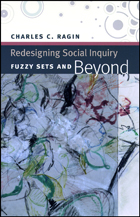 Redesigning Social Inquiry: Fuzzy Sets and Beyond
Charles C. Ragin
University of Chicago Press, 2008 For over twenty years Charles C. Ragin has been at the forefront of the development of innovative methods for social scientists. In Redesigning Social Inquiry, he continues his campaign to revitalize the field, challenging major aspects of the conventional template for social science research while offering a clear alternative.
Redesigning Social Inquiry provides a substantive critique of the standard approach to social research—namely, assessing the relative importance of causal variables drawn from competing theories. Instead, Ragin proposes the use of set-theoretic methods to find a middle path between quantitative and qualitative research. Through a series of contrasts between fuzzy-set analysis and conventional quantitative research, Ragin demonstrates the capacity for set-theoretic methods to strengthen connections between qualitative researchers’ deep knowledge of their cases and quantitative researchers’ elaboration of cross-case patterns. Packed with useful examples, Redesigning Social Inquiry will be indispensable to experienced professionals and to budding scholars about to embark on their first project.
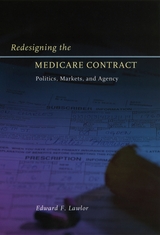 Redesigning the Medicare Contract: Politics, Markets, and Agency
Edward F. Lawlor
University of Chicago Press, 2003 Recent debates on Medicare reform focus on prescription drug coverage, expanding managed-care choices, or technical issues of payment policy. Despite all the heat generated by these issues, Edward F. Lawlor's new book, Redesigning the Medicare Contract, demonstrates that fundamental questions of purpose and policy design for Medicare have been largely ignored.
Challenging conventional ideas, Lawlor suggests that we look at Medicare as a contract between the federal government, the program's beneficiaries, and health care providers. Medicare reform, then, would involve rewriting this contract so that it more successfully serves the interests of both beneficiaries and taxpayers. To do this, Lawlor argues that we must improve the agency of the program—the informational, organizational, and incentive elements that assure Medicare program carries out beneficiary and taxpayer interests in providing the most appropriate, high-quality care possible. The book includes a chapter devoted solely to concepts and applications that give definition to this brand of agency theory. Lawlor's innovative agency approach is matched with lucid explanation of the more comprehensive groundwork in the history and politics of the Medicare program.
Lawlor's important and timely book reframes the Medicare debate in a productive manner and effectively analyzes alternatives for reform. Lawlor argues that effective policy design for Medicare requires greater appreciation of the vulnerability of beneficiaries, the complexity of the program itself, its wide geographical variations in services and financing, and the realistic possibilities for government and private sector roles. Tackling difficult problems like end-of-life and high-tech care—and offering sensible solutions—Redesigning the Medicare Contract will interest political scientists, economists, policy analysts, and health care professionals alike.
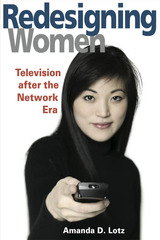 REDESIGNING WOMEN: Television after the Network Era
Amanda D. Lotz
University of Illinois Press, 2010 In the 1990s, American televison audiences witnessed an unprecedented rise in programming devoted explicitly to women. Cable networks such as Oxygen Media, Women's Entertainment Network, and Lifetime targeted a female audience, and prime-time dramatic series such as Buffy the Vampire Slayer, Judging Amy, Gilmore Girls, Sex and the City, and Ally McBeal empowered heroines, single career women, and professionals struggling with family commitments and occupational demands. After establishing this phenomenon's significance, Amanda D. Lotz explores the audience profile, the types of narrative and characters that recur, and changes to the industry landscape in the wake of media consolidation and a profusion of channels.
Employing a cultural studies framework, Lotz examines whether the multiplicity of female-centric networks and narratives renders certain gender stereotypes uninhabitable, and how new dramatic portrayals of women have redefined narrative conventions. Redesigning Women also reveals how these changes led to narrowcasting, or the targeting of a niche segment of the overall audience, and the ways in which the new, sophisticated portrayals of women inspire sympathetic identification while also commodifying viewers into a marketable demographic for advertisers.
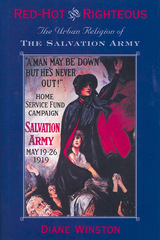 Red-Hot and Righteous: The Urban Religion of The Salvation Army
Diane Winston
Harvard University Press, 2000 In this engrossing study of religion, urban life, and commercial culture, Diane Winston shows how a (self-styled "red-hot") militant Protestant mission established a beachhead in the modern city. When The Salvation Army, a British evangelical movement, landed in New York in 1880, local citizens called its eye-catching advertisements "vulgar" and dubbed its brass bands, female preachers, and overheated services "sensationalist." Yet a little more than a century later, this ragtag missionary movement had evolved into the nation's largest charitable fund-raiser--the very exemplar of America's most cherished values of social service and religious commitment.
Winston illustrates how the Army borrowed the forms and idioms of popular entertainments, commercial emporiums, and master marketers to deliver its message. In contrast to histories that relegate religion to the sidelines of urban society, her book shows that Salvationists were at the center of debates about social services for the urban poor, the changing position of women, and the evolution of a consumer culture. She also describes Salvationist influence on contemporary life--from the public's post-World War I (and ongoing) love affair with the doughnut to the Salvationist young woman's career as a Hollywood icon to the institutionalization of religious ideals into nonsectarian social programs.
Winston's vivid account of a street savvy religious mission transformed over the decades makes adroit use of performance theory and material culture studies to create an evocative portrait of a beloved yet little understood religious movement. Her book provides striking evidence that, counter to conventional wisdom, religion was among the seminal social forces that shaped modern, urban America--and, in the process, found new expression for its own ideals.
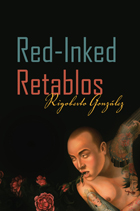 Red-Inked Retablos
Rigoberto González
University of Arizona Press, 2013 In the Mexican Catholic tradition, retablos are ornamental structures made of carved wood framing an oil painting of a devotional image, usually a patron saint. Acclaimed author and essayist Rigoberto González commemorates the passion and the pain of these carvings in his new volume Red-Inked Retablos, a moving memoir of human experience and thought. This frank new collection masterfully combines accounts from González’s personal life with reflections on writers who have influenced him. The collection offers an in-depth meditation on the development of gay Chicano literature and the responsibilities of the Chicana/o writer. Widely acclaimed for giving a voice to the Chicano GLBT community, González’s writing spans a wide range of genres: poetry, fiction, nonfiction, and bilingual books for children and young adults. Introduced by Women’s Studies professor Maythee Rojas, Retablos collects thirteen pieces that together provide a narrative of González’s life from his childhood through his career as a writer, critic, and mentor. In Red-Inked Retablos, González continues to expand his oeuvre on mariposa (literally, “butterfly”) memory, a genre he pioneered in which Chicano/a writers openly address non-traditional sexuality. For González, mariposa memory is important testimony not only about reconfiguring personal identity in relation to masculinity, culture, and religion. It’s also about highlighting values like education, shaping a sex-positive discourse, and exercising agency through a public voice. It’s about making the queer experience a Chicano experience and the Chicano experience a queer one.
Redirecting Innovation in U.S. Health Care: Options to Decrease Spending and Increase Value
Steven Garber
RAND Corporation, 2014 New medical technologies are a leading driver of U.S. health care spending. This report identifies promising policy options to change which medical technologies are created, with two related policy goals: (1) Reduce total health care spending with the smallest possible loss of health benefits, and (2) ensure that new medical products that increase spending are accompanied by health benefits that are worth the spending increases.
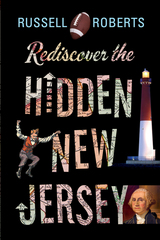 Rediscover the Hidden New Jersey
Roberts, Russell
Rutgers University Press, 2015 Did you know— —that a New Jerseyan was the first president of the United States? —that New Jersey was the site of the first organized college football game? —that New Jersey was the location of one of the most devastating espionage attacks of World War I? —that the heroics of a New Jersey woman saved thousands of people from dying of yellow fever? —that one of the first American folk heroes lived in New Jersey—and jumped off waterfalls?
These and other fascinating stories can be found in the newly updated Rediscover the Hidden New Jersey, a treasury of New Jersey stories that celebrate the unique heritage and importance of the Garden State. Russell Roberts has scoured New Jersey, from High Point to Cape May, to bring readers a delightful potpourri of facts, essays, lists, photos, stories, and legends about New Jersey. Readers will learn how New Jersey used to be the center of the motion picture universe, the origin of the Jersey Devil and other popular tall tales, where Norman Mailer and Abbot & Costello were born, where Aaron Burr and Leo, the M-G-M lion, lie buried, and much more. Learn about the geology of New Jersey, find out about the state’s ever-changing weather, and how New Jersey was chosen for the famous (or infamous) War of the Worlds radio broadcast that panicked the nation. All this and more is in Rediscover the Hidden New Jersey, the ultimate New Jersey book.
This revised edition contains new sections on Lawnside, the Morris Canal, Albert Einstein in Princeton, The Bordentown Manual Training School, Rockefeller/Ocean County Park, the bicycle railroad, Morro Castle, Alice Paul, and more.
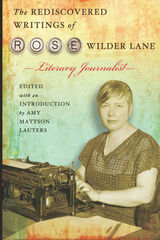 The Rediscovered Writings of Rose Wilder Lane, Literary Journalist
Edited by Amy Mattson Lauters
University of Missouri Press, 2007 Through numerous short stories, novels such as Free Land, and political writings such as “Credo,” Rose Wilder Lane forged a literary career that would be eclipsed by the shadow of her mother, Laura Ingalls Wilder, whose Little House books Lane edited. Lane’s fifty-year career in journalism has remained largely unexplored.
This book recovers journalistic work by an American icon for whom scholarly recognition is long overdue. Amy Mattson Lauters introduces readers to Lane’s life through examples of her journalism and argues that her work and career help establish her not only as an author and political rhetorician but also as a literary journalist. Lauters has assembled a collection of rarely seen nonfiction articles that illustrate Lane’s talent as a writer of literary nonfiction, provide on-the-spot views of key moments in American cultural history, and offer sharp commentary on historical events.
Through this collection of Lane’s journalism, dating from early work for Sunset magazine in 1918 to her final piece for Woman’s Day set in 1965 Saigon, Lauters shows how Lane infused her writing with her particular ideology of Americanism and individualism, self-reliance, and freedom from government interference, thereby offering stark commentary on her times. Lane shares her experiences as an extra in a Douglas Fairbanks movie and interviews D.W. Griffith. She reports on average American women struggling to raise a family in wartime and hikes over the Albanian mountains between the world wars. Her own maturing conservative political views provide a lens through which readers can view debates over the draft, war, and women’s citizenship during World War II, and her capstone piece brings us again into a culture torn by war, this time in Southeast Asia.
These writings have not been available to the reading public since they first appeared. They encapsulate important moments for Lane and her times, revealing the woman behind the text, the development of her signature literary style, and her progression as a writer. Lauters’s introduction reveals the flow of Lane’s life and career, offering key insights into women’s history, the literary journalism genre, and American culture in the first half of the twentieth century.
Through these works, readers will discover a writer whose cultural identity was quintessentially American, middle class, midwestern, and simplistic—and who assumed the mantle of custodian to Americanism through women’s arts. The Rediscovered Writings of Rose Wilder Lane traces the extraordinary relationship between one woman and American society over fifty pivotal years and offers readers a treasury of writings to enjoy and discuss.
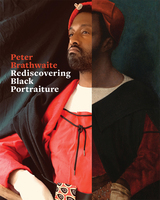 Rediscovering Black Portraiture
Peter Brathwaite
J. Paul Getty Trust, The Join Peter Brathwaite on an extraordinary journey through representations of Black subjects in Western art, from medieval Europe through the present day.
“These mirror images with their uncanny resemblances traverse space and time, spotlighting the black lives that have been silenced by the canon of western art, while also inviting us to interrogate the present.” —Times (UK)
Since the beginning of the COVID-19 pandemic, Peter Brathwaite has thoughtfully researched and reimagined more than one hundred artworks featuring portraits of Black sitters—all posted to social media with the caption “Rediscovering #blackportraiture through #gettymuseumchallenge.”
Rediscovering Black Portraiture collects more than fifty of Brathwaite’s most intriguing re-creations. Introduced by the author and framed by contributions from experts in art history and visual culture, this fascinating book offers a nuanced look at the complexities and challenges of building identity within the African diaspora and how such forces have informed Black portraits over time. Artworks featured include The Adoration of the Magi by Georges Trubert, Portrait of an Unknown Man by Jan Mostaert, Rice n Peas by Sonia Boyce, Barack Obama by Kehinde Wiley, and many more. This volume also invites readers behind the scenes, offering a glimpse of the elegant artifice of Brathwaite’s props, setup, and process.
An urgent and compelling exploration of embodiment, representation, and agency, Rediscovering Black Portraiture serves to remind us that Black subjects have been portrayed in art for nearly a millennium and that their stories demand to be told.
An exhibition of Brathwaite’s re-creations is on view at the Bristol Museum & Art Gallery in Bristol, UK from April 14 to September 3, 2023.
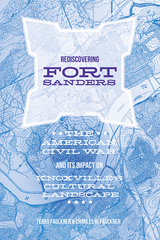 Rediscovering Fort Sanders: The American Civil War and Its Impact on Knoxville's Cultural Landscape
Charles H. Faulkner
University of Tennessee Press, 2020 In the fall of 1863, Knoxville came under Union occupation, and troops went immediately to work to strengthen existing defenses and construct new ones. The most important of these was the earthwork atop a hill west of the city that came to be known as Fort Sanders. The fort would be the site of a critical battle on November 29, in which General James Longstreet’s Southern forces mounted a bold but ill-conceived assault that lasted only twenty minutes yet resulted in over eight hundred Rebel casualties. The completion of the fort under General Davis Tilson would safeguard Knoxville from further attack for the rest of the war.
Rediscovering Fort Sanders is a unique book that combines a narrative history of pre-Civil War Knoxville, the war years and continuing construction of Fort Sanders, the failed attempts to preserve the postwar fort, and the events which led to its almost total destruction. Research by Terry and Charles Faulkner resulted in two major discoveries: the fort was actually located a block farther to the west then previously recognized, and there are still identifiable remnants of the fortification where none were believed to exist.
More than just a chronicle of a significant chapter in Civil War and postwar history, this book will inspire others to continue the effort to ensure that the site and remains of Fort Sanders are preserved and properly commemorated for future generations.
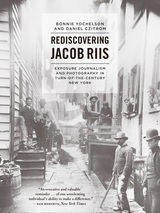 Rediscovering Jacob Riis: Exposure Journalism and Photography in Turn-of-the-Century New York
Bonnie Yochelson and Daniel Czitrom
University of Chicago Press, 2014 Before publishing his pioneering book How the Other Half Lives—a photojournalistic investigation into the poverty of New York’s tenement houses, home to three quarters of the city’s population—Jacob Riis (1849-1914) spent his first years in the United States as an immigrant and itinerant laborer, barely surviving on his carpentry skills until he landed a job as a muckraking reporter. These early experiences provided Riis with an understanding of what it was like to be poor in the immigrant communities that populated New York’s slums, and it was this empathy that would shine through in his iconic photos.
With Rediscovering Jacob Riis, art historian Bonnie Yochelson and historian Daniel Czitrom place Jacob Riis’s images in historical context even as they expose a clear sightline to the present. In the first half of their book, Czitrom explores Riis’s reporting and activism within the gritty specifics of Gilded Age New York: its new immigrants, its political machines, its fiercely competitive journalism, its evangelical reformers, and its labor movement. In delving into Riis’s intellectual education and the lasting impact of How the Other Half Lives, Czitrom shows that though Riis argued for charity, not sociopolitical justice, the empathy that drove his work continues to inspire urban reformers today.
In the second half of the book, Yochelson describes for the first time Riis’s photographic practice: his initial reliance on amateur photographers to take the photographs he needed, his own use of the camera, and then his collecting of photographs by professionals, who by 1900 were documenting social reform efforts for government agencies and charities. She argues that while Riis is rightly considered a revolutionary in the history of photography, he was not a photographic artist. Instead, Riis was a writer and lecturer who first harnessed the power of photography to affect social change.
As staggering inequality continues to be an urgent political topic, this book, illustrated with nearly seventy of Riis’s photographs, will serve as a stunning reminder of what has changed, and what has not.
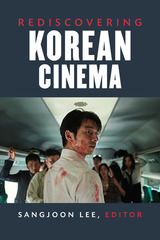 Rediscovering Korean Cinema
Sangjoon Lee, Editor
University of Michigan Press, 2019 South Korean cinema is a striking example of non-Western contemporary cinematic success. Thanks to the increasing numbers of moviegoers and domestic films produced, South Korea has become one of the world’s major film markets. In 2001, the South Korean film industry became the first in recent history to reclaim its domestic market from Hollywood and continues to maintain around a 50 percent market share today. High-quality South Korean films are increasingly entering global film markets and connecting with international audiences in commercial cinemas and art theatres, and at major international film festivals. Despite this growing recognition of the films themselves, Korean cinema’s rich heritage has not heretofore received significant scholarly attention in English-language publications.
This groundbreaking collection of thirty-five essays by a wide range of academic specialists situates current scholarship on Korean cinema within the ongoing theoretical debates in contemporary global film studies. Chapters explore key films of Korean cinema, from Sweet Dream, Madame Freedom, The Housemaid, and The March of Fools to Oldboy, The Host, and Train to Busan, as well as major directors such as Shin Sang-ok, Kim Ki-young, Im Kwon-taek, Bong Joon-ho, Hong Sang-soo, Park Chan-wook, and Lee Chang-dong. While the chapters provide in-depth analyses of particular films, together they cohere into a detailed and multidimensional presentation of Korean cinema’s cumulative history and broader significance.
With its historical and critical scope, abundance of new research, and detailed discussion of important individual films, Rediscovering Korean Cinema is at once an accessible classroom text and a deeply informative compendium for scholars of Korean and East Asian studies, cinema and media studies, and communications. It will also be an essential resource for film industry professionals and anyone interested in international cinema.
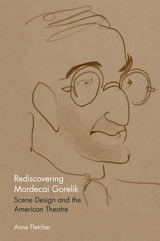 Rediscovering Mordecai Gorelik: Scene Design and the American Theatre
Anne Fletcher
Southern Illinois University Press, 2009 Rediscovering Mordecai Gorelik explores the life and work of the pioneering scene designer whose career spanned decades in American theatre. Anne Fletcher’s insightful volume draws intriguing parallels and contrasts between Gorelik’s productions and the theatrical movements of the twentieth century, exposing the indelible mark he left on the stage. Through in-depth analysis of his letters, diaries, designs, and theoretical works, Fletcher examines the ways in which Gorelik’s productions can be used as a mirror to reflect the shifting dramatic landscapes of his times. Fletcher places Gorelik against the colorful historical backdrops that surrounded him—including the avant-garde movement of the 1920s, World War II, the Cold War, and absurdism—using the designer’s career as a window into the theatre during these eras. Within these cultural contexts, Gorelik sought to blaze his own unconventional path through the realms of theatre and theory. Fletcher traces Gorelik’s tenures with such companies as the Provincetown Players, the Theatre Guild, and the Theatre Union, as well as his relationships with icons such as Bertolt Brecht, revealing how his interactions with others influenced his progressive designs and thus set the stage for major dramatic innovations. In particular, Fletcher explores Gorelik’s use of scenic metaphor: the employment of stage design techniques to subtly enhance the tone or mood of a production. Fletcher also details the designer’s written contributions to criticism and theory, including the influential volume New Theatres for Old, as well as other articles and publications. In addition to thorough examinations of several of Gorelik’s most famous projects, Rediscovering Mordecai Gorelik contains explications of productions by such legends as John Howard Lawson, Clifford Odets, and Arthur Miller. Also included are numerous full-color and black-and-white illustrations of Gorelik’s work, most of which have never been available to the public until now. More than simply a portrait of one man, this indispensable volume is a cultural history of American theatre as seen through the career of a visionary designer and theoretician.
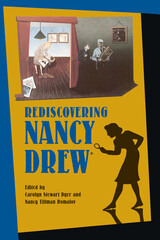 Rediscovering Nancy Drew
Carolyn Stewart Dyer
University of Iowa Press, 1995 "Rediscovering Nancy Drew is a rich collection of literary memories and insightful cultural comments."--Journal of Children's Literature
"Nancy, especially the Nancy of the original story, is our bright heroine, chasing down the shadows, conquering our worst fears, giving us a glimpse of our brave and better selves, proving to everybody exactly how admirable and wonderful a thing it is to be a girl. Thank you, Nancy Drew."--Nancy Pickard
"Nancy Drew belongs to a moment in feminist history; it is a moment, I suggest, that we celebrate, allowing ourselves the satisfaction of praising her for what she dared and forgiving her for what she failed to undertake or understand."--Carolyn G. Heilbrun
"Rediscovering Nancy Drew lights up the territory. It informs, delights, and acknowledges through love and scholarship a debt long overdue."--Dale H. Ross
In 1991, women staff and faculty at the University of Iowa discovered that the pseudonymous author of the original Nancy Drew books, Carolyn Keene, was none other than Mildred Wirt Benson, the first person to earn a master's degree in journalism at Iowa. The excitement caused by their discovery led to the 1993 Nancy Drew Conference, which explored the remarkable passion for Nancy Drew that spans a wide spectrum of American society. The result: a lively collaboration of essays by and interviews with mystery writers, collectors, publishers, librarians, scholars, journalists, and fans which presents a spirited, informative, totally enjoyable tribute to the driver of that blue roadster so many readers have coveted.
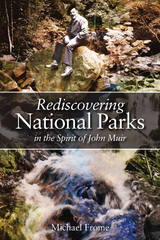 Rediscovering National Parks in the Spirit of John Muir
Michael Frome
University of Utah Press, 2015 As a journalist, advocate, and professor, Michael Frome has spent decades engaged with conservation topics and has taken particular interest in America’s national parks. He draws on this experience and knowledge to address what remains to be done in order to truly value and preserve these special places. Part memoir, part history, and part broadside against those who would diminish this heritage, Rediscovering National Parks in the Spirit of John Muir, through thoughtful reflections and ruminations, bears witness to the grandeur of our parks and to the need for a renewed sense of appreciation and individual responsibility for their care. In recollections of his encounters and conversations with key people in national park history, Frome discusses park politics, conflicts between use and preservation, and impacts of commercialization. He proposes a dedicated return to the true spirit in which the parks were established, in the manner of John Muir. He advocates maintaining these lands as wild sanctuaries, places where we can find inspiration, solitude, silence, balance, and simplicity, reminding us why we must preserve our national treasures and why we need to connect with the deeper values they hold.
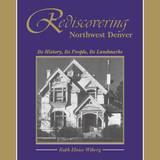 Rediscovering Northwest Denver: Its History, Its People, Its Landmarks
Ruth Eloise Wiberg
University Press of Colorado, 1995 This book features a rare treasury of Victorian and turn-of-the-century buildings and the people who first came to Northwest Denver. The area's pure air, great views, and clean water were great attractions. Rediscovering Northwest Denver describes the area's incorporated suburbs of the 1800's, the farms, the early amusement parks, all of which became part of Denver around the turn of the century. Rediscovering Northwest Denver is a chatty, enjoyable read that tells of the tycoons and entrepreneurs whose fine Victorian homes still dot the area, and of the immigrants from various European cultures who clung together for comfort in the face of prejudice. It includes maps, photographs, past and present street names, a bibliography, index, and suggested tours. Northwest Denver today is typified by traditions, beauty, and pride, all of which the author captures in this ever-popular book. Winner of the 1993 Hubert Humphrey Award for the book's contribution to the historical appreciation and preservation of Northwest Denver.
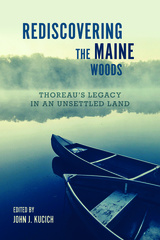 Rediscovering the Maine Woods: Thoreau's Legacy in an Unsettled Land
John J. Kucich
University of Massachusetts Press, 2019 The Maine Woods, vast and largely unsettled, are often described as unchanged since Henry David Thoreau's journeys across the backcountry, in spite of the realities of Indian dispossession and the visible signs of logging, settlement, tourism, and real estate development. In the summer of 2014 scholars, activists, members of the Penobscot Nation, and other individuals retraced Thoreau's route.
Inspired partly by this expedition, the accessible and engaging essays here offer valuable new perspectives on conservation, the cultural ties that connect Native communities to the land, and the profound influence the geography of the Maine Woods had on Thoreau and writers and activists who followed in his wake. Together, these essays offer a rich and multifaceted look at this special place and the ways in which Thoreau's Maine experiences continue to shape understandings of the environment a century and a half later.
Contributors include the volume editor, Kathryn Dolan, James S. Finley, James Francis, Richard W. Judd, Dale Potts, Melissa Sexton, Chris Sockalexis, Stan Tag, Robert M. Thorson, and Laura Dassow Walls.
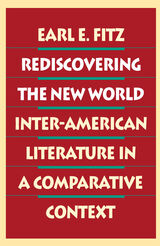 Rediscovering The New World: Inter-American Literature
Earl E. Fitz
University of Iowa Press, 1991
The concept of "American" literature is not the exclusive province of any one nation. Thanks to the historical circumstances that governed the European conquest and settlement of the Americas, we can and should approach the writings of English and French Canada, the United States, Spanish America, and Brazil as a cohesive group of American literature, worthy of study without constant reference to European texts. Now, Rediscovering the New World makes a timely addition to this expanding field on Inter-American scholarship that should help lead tothe formation of a new canon.
This adventurous and ambitious work begins with an examination of Pre-Columbian literature (and shows that his powerful tradition remains alive and well in the twentieth century), then confronts the narratives of discovery and conquest, the New World epic, identity as the Ur-theme of American literature, miscegenation as another integral theme, and regionalism as a shaping force. Other striking these and juxtapositions include a comparison of Henry James and Machado de Assis as the first two great New World novelists, modernism as both a distinct literary movement and an amorphous body of aesthetic principles, and the conflict between "civilization" and "barbarism."
More in the exploratory spirit of the French Canadian voyageur than in the spirit of the conquistador, Rediscovering the New World is the first scholarly work in English to integrate an international set of American literary cultures. It should inspire other explorers as the field of Inter-American literary relations continues to evolve.
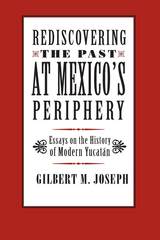 Rediscovering The Past at Mexico's Periphery: Essays on the History of Modern Yucatan
Gilbert M. Joseph
University of Alabama Press, 1986 Surveys major trends in Yucatán’s currents in Mexican historiography, and suggest new departures for regional and local-level research
Increasingly, the modern era of Mexican history (c. 1750 to the present) is attracting the attention of Mexican and international scholars. Significant studies have appeared for most of the major regions and Yucatán, in particular, has generated an unusual appeal and an abundant scholarship. This book surveys major trends in Yucatán’s currents in Mexican historiography, and suggest new departures for regional and local-level research.
Rather than compiling lists of sources around given subject headings in the manner of many historiographies, the author seeks common ground for analysis in the new literature’s preoccupation with changing relations of land, labor, and capital and their impact on regional society and culture. Joseph proposes a new periodization of Yucatán’s modern history which he develops in a series of synthetic essays rooted in regional political economy.
The Rediscovery of Jewish Christianity: From Toland to Baur
F. Stanley Jones
SBL Press, 2012 This focused collection of essays by international scholars first uncovers the roots of the study of ancient Jewish Christianity in the Enlightenment in early eighteenth-century England, then explores why and how this rediscovery of Jewish Christianity set off the entire modern historical debate over Christian origins. Finally, it examines in detail how this critical impulse made its way to Germany, eventually to flourish in the nineteenth century under F. C. Baur and the Tübingen School. Included is a facsimile reproduction of John Toland’s seminal Nazarenus (1718), which launched the modern study of Jewish Christianity. The contributors are F. Stanley Jones, David Lincicum, Pierre Lurbe, Matt Jackson-McCabe, and Matti Myllykoski.
Redlining To Reinvestment
edited by Gregory D. Squires
Temple University Press, 1992 After decades of suffering redlining and disinvestment by financial institutions, many communities have learned to fight back successfully. In more than seventy U.S. cities, over 300 community-based organizations have negotiated at least eighteen billion dollars in reinvestment commitments in recent years. In original essays, well-known community activists and activist academics tell the stories of some of the most successful reinvestment campaigns in Boston, Pittsburgh, Detroit, Chicago, Milwaukee, Atlanta, and California.
In the series Conflicts in Urban and Regional Development, edited by John R. Logan and Todd Swanstrom.
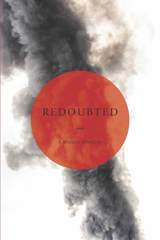 Redoubted: Poems by
R. Vincent Moniz Jr.
Michigan State University Press, 2018 R. Vincent Moniz, Jr., records the life and times of a mostly uneducated, economically disadvantaged, literary award-winning urban Indian. Much of his work reflects the people and stories from a neighborhood with the moniker Cockroach while simultaneously depicting contemporary issues of Native America. Poems in this collection are filled with a dreaded fire of wit and cynicism given to him by the Oglala and NuuÉtaare peoples who helped to raise him. With a great deal of bathos, he glides and slides seamlessly from silly to sorrow without effort. His formidable verse irradiates and acknowledges the lives of an in-between people who are too urban for the reservation and too indigenous for American culture, while he himself navigates multitudes, including his place within nerd/pop culture, which widens the scope of his writing. This collection mirrors a subculture that is being either hustled or altogether overlooked, and does so honestly without filter or worry. Moniz’s poetic genetics are a blend of orators that came before him and a new wave of emerging Indigenous American voices. The reader can see these narratives twist and turn to the heartbeat he writes them in.
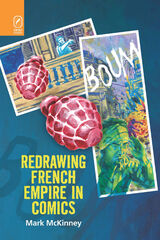 Redrawing French Empire in Comics
Mark McKinney
Ohio State University Press, 2020 Redrawing French Empire in Comics by Mark McKinney investigates how comics have represented the colonization and liberation of Algeria and Indochina. It focuses on the conquest and colonization of Algeria (from 1830), the French war in Indochina (1946–1954), and the Algerian War (1954–1962). Imperialism and colonialism already featured prominently in nineteenth-century French-language comics and cartoons by Töpffer, Cham, and Petit. As society has evolved, so has the popular representation of those historical forces. French torture of Algerians during the Algerian War, once taboo, now features prominently in comics, especially since 2000, when debate on the subject was reignited in the media and the courts. The increasingly explicit and spectacular treatment in comics of the more violent and lurid aspects of colonial history and ideology is partly due to the post-1968 growth of an adult comics production and market. For example, the appearance of erotic and exotic, feminized images of Indochina in French comics in the 1980s indicated that colonial nostalgia for French Indochina had become fashionable in popular culture. Redrawing French Empire in Comics shows how contemporary cartoonists such as Alagbé, Baloup, Boudjellal, Ferrandez, and Sfar have staked out different, sometimes conflicting, positions on French colonial history.
 Redrawing the Lines: Analytic Philosophy, Deconstruction, and Literary Theory
Reed Way Dasenbrock, Editor
University of Minnesota Press, 1989 Redrawing the Lines was first published in 1989. Minnesota Archive Editions uses digital technology to make long-unavailable books once again accessible, and are published unaltered from the original University of Minnesota Press editions. Since 1970 literary theory has experienced a period of rich interaction with both Anglo-American analytic and Continental philosophy, particularly deconstruction. Yet these two philosophical schools have regarded each other with hostility, if at all, as in the 1977 exchange between John Searle and Jacques Derrida over the work of J. L. Austin. Since then, the two philosophical traditions have begun to interact as each has influenced literary theory, and some suggest that they are not diametrically opposed. Redrawing the Lines,the first book to focus on that interaction, brings together ten essays by key figures who have worked to connect literary theory and philosophy and to reassess the relationship between analytic and Continental philosophy. The editor's introduction establishes the debate's historical context, and his annotated bibliography directs the interested reader to virtually everything written on this issue. The contributors: Reed Way Dasenbrock, Henry Staten, Michael Fischer, Charles Altieri, Richard Shusterman, Samuel C. Wheeler III, Jules David Law, Steven Winspur, Christopher Norris, Richard Rorty, and Anthony J. Cascardi. Reed Way Dasenbrock is associate professor of English at New Mexico State University. He is the author of The Literary Vorticism of Ezra Pound and Wyndham Lewis: Toward the Condition of Painting.
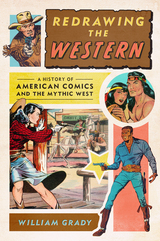 Redrawing the Western: A History of American Comics and the Mythic West
William Grady
University of Texas Press, 2024 A history of American Western genre comics and how they interacted with contemporaneous political and popular culture. Redrawing the Western charts a history of the Western genre in American comics from the late 1800s through the 1970s and beyond. Encompassing the core years in which the genre was forged and prospered in a range of popular media, Grady engages with several key historical timeframes, from the origins of the Western in the nineteenth-century illustrated press; through fin de siècle anxieties with the closing of the frontier, and the centrality of cowboy adventure across the interwar, postwar, and high Cold War years; to the revisions of the genre in the wake of the Vietnam War and the Western’s continued vitality in contemporary comics storytelling. In its study of stories about vengeance, conquest, and justice on the contested frontier, Redrawing the Western highlights how the “simplistic” conflicts common in Western adventure comics could disguise highly political undercurrents, providing young readers with new ways to think about the contemporaneous social and political milieu. Besides tracing the history, forms, and politics of American Western comics in and around the twentieth century, William Grady offers an original reassessment of the important role of comics in the development of the Western genre, ranking them alongside popular fiction and film in the process.
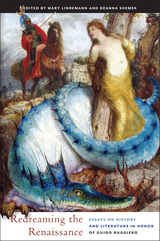 Redreaming the Renaissance: Essays on History and Literature in Honor of Guido Ruggiero
Mary Lindemann
University of Delaware Press, 2024 Redreaming the Renaissance seeks to remedy the dearth of conversations between scholars of history and literary studies by building on the pathbreaking work of Guido Ruggiero to explore the cross-fertilization between these two disciplines, using the textual world of the Italian Renaissance as proving ground. In this volume, these disciplines blur, as they did for early moderns, who did not always distinguish between the historical and literary significance of the texts they read and produced. Literature here is broadly conceived to include not only belles lettres, but also other forms of artful writing that flourished in the period, including philosophical writings on dreams and prophecy; life-writing; religious debates; menu descriptions and other food writing; diaries, news reports, ballads, and protest songs; and scientific discussions. The twelve essays in this collection examine the role that the volume’s dedicatee has played in bringing the disciplines of history and literary studies into provocative conversation, as well as the methodology needed to sustain and enrich this conversation.
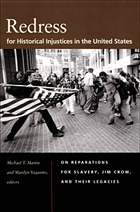 Redress for Historical Injustices in the United States: On Reparations for Slavery, Jim Crow, and Their Legacies
Michael T. Martin and Marilyn Yaquinto, eds.
Duke University Press, 2007 An exceptional resource, this comprehensive reader brings together primary and secondary documents related to efforts to redress historical wrongs against African Americans. These varied efforts are often grouped together under the rubric “reparations movement,” and they are united in their goal of “repairing” the injustices that have followed from the long history of slavery and Jim Crow. Yet, as this collection reveals, there is a broad range of opinions as to the form that repair might take. Some advocates of redress call for apologies; others for official acknowledgment of wrongdoing; and still others for more tangible reparations: monetary compensation, government investment in disenfranchised communities, the restitution of lost property and rights, and repatriation. Written by activists and scholars of law, political science, African American studies, philosophy, economics, and history, the twenty-six essays include both previously published articles and pieces written specifically for this volume. Essays theorize the historical and legal bases of claims for redress; examine the history, strengths, and limitations of the reparations movement; and explore its relation to human rights and social justice movements in the United States and abroad. Other essays evaluate the movement’s primary strategies: legislation, litigation, and mobilization. While all of the contributors support the campaign for redress in one way or another, some of them engage with arguments against reparations. Among the fifty-three primary documents included in the volume are federal, state, and municipal acts and resolutions; declarations and statements from organizations including the Black Panther Party and the NAACP; legal briefs and opinions; and findings and directives related to the provision of redress, from the Oklahoma Commission to Study the Tulsa Race Riot of 1921 to the mandate for the Greensboro Truth and Reconciliation Commission. Redress for Historical Injustices in the United States is a thorough assessment of the past, present, and future of the modern reparations movement. Contributors. Richard F. America, Sam Anderson, Martha Biondi, Boris L. Bittker, James Bolner, Roy L. Brooks, Michael K. Brown, Robert S. Browne, Martin Carnoy, Chiquita Collins, J. Angelo Corlett, Elliott Currie, William A. Darity, Jr., Adrienne Davis, Michael C. Dawson, Troy Duster, Dania Frank, Robert Fullinwider, Charles P. Henry, Gerald C. Horne, Robert Johnson, Jr., Robin D. G. Kelley, Jeffrey R. Kerr-Ritchie, Theodore Kornweibel, Jr., David Lyons, Michael T. Martin, Douglas S. Massey , Muntu Matsimela , C. J. Munford, Yusuf Nuruddin, Charles J. Ogletree Jr., Melvin L. Oliver, David B. Oppenheimer, Rovana Popoff, Thomas M. Shapiro, Marjorie M. Shultz, Alan Singer, David Wellman, David R. Williams, Eric K. Yamamoto, Marilyn Yaquinto
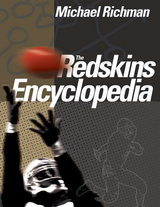 The Redskins Encyclopedia
Michael Richman
Temple University Press, 2007 "Hail to the Redskins" and Redskin-mania have consumed the nation's capital since 1937, the Redskins' fist year in Washington. And the fervor remains as strong, if not stronger, today.
Amply illustrated with 200 photos of players, coaches, and fans, The Redskins Encyclopedia recounts the franchise's first 75 seasons, reliving the great -- and not so great -- moments in the team's storied history, and the men who helped make Sundays memorable.
Fans will read about:
--Coaches like George Allen, the eccentric, passionate man who left a legacy as an NFL pioneer, and Joe Gibbs, who formed a D-Y-N-A-S-T-Y
--Players like star running back and all-time Redskins ground-gainer John Riggins, who once told Supreme Court Justice Sandra Day O'Connor to "loosen up, Sandy baby," and Doug Williams, the first black quarterback to win a Super Bowl and Super Bowl MVP honors
--The franchise's golden run of four Super Bowl appearances -- and three wins -- in the 1980s and early 1990s
--The legendary Redskins-Cowboys rivalry
--A year-by-year history of the team from 1932 to the present, with stats from each season
--Individual profiles of more than 100 Redskins players -- from Sammy Baugh to Darrell Green to Art Monk to Sonny Jurgensen to Charley Taylor to Joe Theismann
With an unparalleled collection of anecdotes, quotes, trivia, and hard-to-find information, The Redskins Encyclopedia is a must-have book for any fan who has ever bled burgundy and gold.
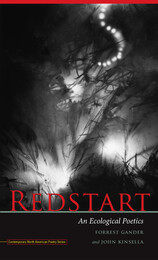 Redstart: An Ecological Poetics
Forrest Gander
University of Iowa Press, 2012 The damage humans have perpetrated on our environment has certainly affected a poet’s means and material. But can poetry be ecological? Can it display or be invested with values that acknowledge the economy of interrelationship between the human and the nonhuman realms? Aside from issues of theme and reference, how might syntax, line break, or the shape of the poem on the page express an ecological ethics? To answer these questions, poets Forrest Gander and John Kinsella offer an experiment, a collaborative volume of prose and poetry that investigates—both thematically and formally—the relationship between nature and culture, language and perception. They ask whether, in an age of globalization, industrialization, and rapid human population growth, an ethnocentric view of human beings as a species independent from others underpins our exploitation of natural resources. Does the disease of Western subjectivity constitute an element of the aesthetics that undermine poetic resistance to the killing of the land? Why does “the land” have to give something back to the writer? This innovative volume speaks to all people wanting to understand how artistic and critical endeavors can enrich, rather than impoverish, the imperiled world around us.
 Reducing Firearm Injury and Death: A Public Health Sourcebook on Guns
Trudy A. Karlson
Rutgers University Press, 1997 There are few issues more explosive than guns. "Guns don't kill people, people kill people," is an often-heard response to calls for firearm control. But are there ways to make guns safer without placing further restrictions on gun owners? Can guns be engineered to reduce the number and severity of injuries? This book is about guns and new solutions for addressing problems they create. Trudy Karlson and Stephen Hargarten, two experts in public health and injury control, show readers how guns are products, designed to injure and kill, and how changes in the design, technology, and marketing of firearms can lead to reductions in the number of injuries and fatalities. Just as innovations in the design and technology of motor vehicles succeeded in creating safer cars, Karlson and Hargarten describe how responsible changes to gun products can reduce the number of serious injuries and fatalities. The injury control perspective illustrates how the characteristics of guns and ammunition are associated with their ability to cause injury and death. It also provides options for how guns can be re-engineered to ensure a greater degree of safety and protection. Reducing Firearm Injury and Death teaches basic facts about guns and gun injuries, and by reframing the problem of firearms as a public health issue, offers hope for saving lives.
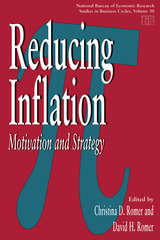 Reducing Inflation: Motivation and Strategy
Edited by Christina D. Romer and David H. Romer
University of Chicago Press, 1997 While there is ample evidence that high inflation is harmful, little is known about how best to reduce inflation or how far it should be reduced. In this volume, sixteen distinguished economists analyze the appropriateness of low inflation as a goal for monetary policy and discuss possible strategies for reducing inflation.
Section I discusses the consequences of inflation. These papers analyze inflation's impact on the tax system, labor market flexibility, equilibrium unemployment, and the public's sense of well-being. Section II considers the obstacles facing central bankers in achieving low inflation. These papers study the precision of estimates of equilibrium unemployment, the sources of the high inflation of the 1970s, and the use of non-traditional indicators in policy formation. The papers in section III consider how institutions can be designed to promote successful monetary policy, and the importance of institutions to the performance of policy in the United States, Germany, and other countries.
This timely volume should be read by anyone who studies or conducts monetary policy.
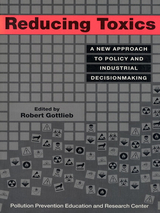 Reducing Toxics: A New Approach To Policy And Industrial Decisionmaking
Edited by Robert Gottlieb
Island Press, 1995 In Reducing Toxics, leading experts address industry, technology, health, and policy issues and explore the potential for pollution prevention at the industry and facility levels. They consider both the regulatory and institutional settings of toxics reduction initiatives, prescribe strategies for developing a prevention framework, and apply these principles in analyzing industry case studies. Among the topics considered are: - the evolution of, and limits to, current environmental policy
- incorporating prevention into production planning and decisionmaking
- do voluntary programs lead to industry greening or greenwashing?
- case studies of the chemical, aerosols, radiator repair and electric vehicle industries
- opportunities for and barriers to pollution prevention
Reducing Toxics offers an analytic framework for defining and understanding different approaches in the toxics area and describes the basis for a new policy and industrial decisionmaking construct.
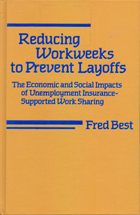 Reducing Workweeks
Fred Best, foreword by Herbert J. Gans
Temple University Press, 1988 International competition and variable economic conditions have brought the threat of layoffs to the doorsteps of workers and managers in all sectors of our economy. One response to this problem is Unemployment Insurance-Supported Work Sharing. This new and promising program reduces the human and economic costs of layoffs by providing partial unemployment benefits to employees who have their workweeks reduced as an alternative to layoffs. Fred Best provides a balanced and thorough assessment of this policy in the United States, Canada, and Europe. Unemployment Insurance-Supported Work Sharing maintains the income and fringe benefits of all workers at near full-time levels, enabling firms to maintain the skills and working relations of their employees and preventing undue hardships among those who would otherwise lose their jobs. Best summarizes the history and effectiveness of these programs in terms of their economic and human impacts on employers, employees, government, and the economy. He presents key insights on how worktime and worker management cooperation can become powerful tools for combating joblessness and increasing economic performance. This definitive account of an important experiment in work hours will be of critical importance to managers, workers, policymakers, economists, and those concerned with employment issues. In the series Labor and Social Change, edited by Paula Rayman and Carmen Sirianni.
Reduction and Givenness: Investigations of Husserl, Heidegger, and Phenomenology
Jean-Luc Marion
Northwestern University Press, 1997 Through careful analysis of phenomenological texts by Husserl and Heidegger, Marion argues for the necessity of a third phenomenological reduction that concerns what is fully implied but left largely unthought by the phenomenologies of both Husserl and Heidegger: the unconditional "givenness" of the phenomenon. At once historically grounded and radically new, this phenomenology of givenness has revitalized phenomenological debate in Europe and the U.S.
 Red-winged Blackbirds: Decision-making and Reproductive Success
Les D. Beletsky and Gordon H. Orians
University of Chicago Press, 1996 Drawing on detailed data from their sixteen-year study of red-winged blackbirds in the marshes of Washington's Columbia National Wildlife Refuge, Beletsky and Orians analyze the information redwings use to make breeding-season decisions and the consequences these decisions have for lifetime reproductive success. Because male and female redwings make different, and often independent, decisions—males focus on territory acquisition and maintenance, while females must choose when and where to nest and how much energy to invest in reproduction—the authors have taken the novel approach of studying the sexes separately.
Using analyses of observational data combined with field experiments and game-theoretical models, the authors provide new insights into the complex patterns of reproductive decision-making and breeding behavior in redwings. This book will be of interest to all who study social animals, including behavioral ecologists, evolutionary biologists, and ornithologists.
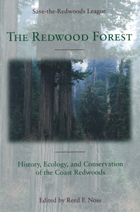 The Redwood Forest: History, Ecology, and Conservation of the Coast Redwoods
Edited by Reed F. Noss; Save-the-Redwoods League
Island Press, 2000 Evidence is mounting that redwood forests, like many other ecosystems, cannot survive as small, isolated fragments in human-altered landscapes. Such fragments lose their diversity over time and, in the case of redwoods, may even lose the ability to grow new, giant trees. The Redwood Forest, written in support of Save-the-Redwood League's master plan, provides scientific guidance for saving the redwood forest by bringing together in a single volume the latest insights from conservation biology along with new information from data-gathering techniques such as GIS and remote sensing. It presents the most current findings on the geologic and cultural history, natural history, ecology, management, and conservation of the flora and fauna of the redwood ecosystem. Leading experts -- including Todd Dawson, Bill Libby, John Sawyer, Steve Sillett, Dale Thornburgh, Hartwell Welch, and many others -- offer a comprehensive account of the redwoods ecosystem, with specific chapters examining: - the history of the redwood lineage, from the Triassic Period to the present, along with the recent history of redwoods conservation
- life history, architecture, genetics, environmental relations, and disturbance regimes of redwoods
- terrestrial flora and fauna, communities, and ecosystems
- aquatic ecosystems
- landscape-scale conservation planning
- management alternatives relating to forestry, restoration, and recreation.
The Redwood Forest offers a case study for ecosystem-level conservation and gives conservation organizations the information, technical tools, and broad perspective they need to evaluate redwood sites and landscapes for conservation. It contains the latest information from ground-breaking research on such topics as redwood canopy communities, the role of fog in sustaining redwood forests, and the function of redwood burls. It also presents sobering lessons from current research on the effects of forestry activities on the sensitive faunas of redwood forests and streams. The key to perpetuating the redwood forest is understanding how it functions; this book represents an important step in establishing such an understanding. It presents a significant body of knowledge in a single volume, and will be a vital resource for conservation scientists, land use planners, policymakers, and anyone involved with conservation of redwoods and other forests.
 A Reed Shaken with the Wind: A Human and Natural History of the Bear River Marsh
Andrew H. Hedges
University of Utah Press, 2025 Reveals the environmental and historical pressures shaping an essential stretch of land and water in the American West
A Reed Shaken with the Wind tells the story of the Bear River Marsh, freshwater and sheltered grasslands on the northeast end of the Great Salt Lake with a complex past. Despite being one of Utah’s most renowned hunting and birdwatching locations, the marsh today holds only a shadow of its former ecological vitality.
Tracing the marsh from its creation during the last ice age to its current status as an imperiled national wildlife refuge, Andrew Hedges draws on geology, ecology, archaeology, wildlife biology, and water resource management to explore the natural and human forces that shaped the marsh and contributed to its decline. Covering Indigenous relationships with land, market economies’ impacts, and the intersection of ecology, science, and politics in establishing the Bear River Migratory Bird Refuge, this volume deepens discussions of humanity’s place in the environment and efforts to restore balance with our planet.
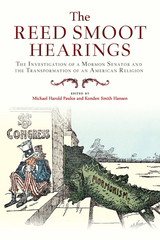 The Reed Smoot Hearings: The Investigation of a Mormon Senator and the Transformation of an American Religion
Michael Harold Paulos
Utah State University Press, 2022 This book examines the hearings that followed Mormon apostle Reed Smoot’s 1903 election to the US Senate and the subsequent protests and petitioning efforts from mainstream Christian ministries disputing Smoot’s right to serve as a senator. Exploring how religious and political institutions adapted and shapeshifted in response to larger societal and ecclesiastical trends, The Reed Smoot Hearings offers a broader exploration of secularism during the Progressive Era and puts the Smoot hearings in context with the ongoing debate about the constitutional definition of marriage.
The work adds new insights into the role religion and the secular played in the shaping of US political institutions and national policies. Chapters also look at the history of anti-polygamy laws, the persistence of post-1890 plural marriage, the continuation of anti-Mormon sentiment, the intimacies and challenges of religious privatization, the dynamic of federal power on religious reform, and the more intimate role individuals played in effecting these institutional and national developments.
The Smoot hearings stand as an important case study that highlights the paradoxical history of religious liberty in America and the principles of exclusion and coercion that history is predicated on. Framed within a liberal Protestant sensibility, these principles of secular progress mapped out the relationship of religion and the nation-state for the new modern century. The Reed Smoot Hearings will be of significant interest to students and scholars of Mormon, western, American, and religious history.
Publication supported, in part, by Gonzaba Medical Group.
Contributors: Gary James Bergera, John Brumbaugh, Kenneth L. Cannon II, Byron W. Daynes, Kathryn M. Daynes, Kathryn Smoot Egan, D. Michael Quinn
The Reef
Elizabeth Arnold
University of Chicago Press, 1998 Elizabeth Arnold's first book of poems documents her struggle with cancer. A book-length sequence of poems, The Reef rockets the reader through a Heraclitean chute of accelerated life experience by way of anecdote, satire, facts from medical science, and lyrical sweep. This multilayered work explores the depths of illness, investigating the way one's attitude toward it changes over time and how one gathers and processes information in order to make sense of it.
"Arnold's poetry, much more mature than most writers' first book, links lyrics, slight narratives, and a bit of satire into a work of glorious affirmation. The book is a splendid read."—Mary Sue Koeppel, Florida Times-Union
"For this commitment to both the autobiographical honesty and aesthetic risk, The Reef should be valuable to anyone who has been waiting for where contemporary American poetry is going."—Agni
Reef Fishes of the Sea of Cortez: The Rocky-Shore Fishes of the Gulf of California, Revised Edition
By Donald A. Thomson, Lloyd T. Findley, and Alex N. Kerstitch
University of Texas Press, 2000 First published in 1979, this guide has become the standard resource for scientists, divers, and spearfishers interested in the fishes of the tropical Pacific Coast. The authors have revised and updated this edition to include the most current taxonomic information, additional species descriptions, and new illustrations.
 A Reef in Time: The Great Barrier Reef from Beginning to End
J.E.N. Veron
Harvard University Press, 2008 Like many coral specialists fifteen years ago, J. E. N. Veron thought Australia's Great Barrier Reef was impervious to climate change. "Owned by a prosperous country and accorded the protection it deserves, it would surely not go the way of the Amazon rain forest or the parklands of Africa, but would endure forever. That is what I thought once, but I think it no longer." This book is Veron's Silent Spring for the world's coral reefs.
Veron presents the geological history of the reef, the biology of coral reef ecosystems, and a primer on what we know about climate change. He concludes that the Great Barrier Reef and, indeed, most coral reefs will be dead from mass bleaching and irreversible acidification within the coming century unless greenhouse gas emissions are curbed. If we don't have the political will to confront the plight of the world's reefs, he argues, current processes already in motion will become unstoppable, bringing on a mass extinction the world has not seen for 65 million years.
Our species has cracked its own genetic code and sent representatives of its kind to the moon--we can certainly save the world's reefs if we want to. But to achieve this goal, we must devote scientific expertise and political muscle to the development of green technologies that will dramatically reduce greenhouse emissions and reverse acidification of the oceans.
 Reel Freedom: Black Film Culture in Early Twentieth-Century New York City
Alyssa Lopez
Temple University Press, 2025 Reel Freedom intimately captures the relationship between Black film culture and space in New York City. Alyssa Lopez argues that Black film culture, from its origins in the early twentieth century to its firm establishment in the 1930s, was necessarily both entertainment and resistance, connected as it was to Black New Yorkers’ demands for access and equality in the city.
Lopez investigates how ordinary people, labor activists, journalists, filmmakers, theater managers, and owners all shaped Black film culture. Black girls and women used moviegoing as a means of independence and control over their lives. Race filmmaker Oscar Micheaux fought with New York State’s censorship board to get his films screened with limited edits in local theaters. And Harlem’s Black projectionists battled for unionization and fair pay, while journalists linked cinema to Black New Yorkers’ lived experiences.
In Reel Freedom, Lopez chronicles the wide-ranging and remarkable pervasiveness of Black film culture in New York City, redefining a period and place most associated with the Harlem Renaissance. In doing so, she illustrates how Black New Yorkers leveraged cinema to make the city their own and to enjoy urban living to its fullest.
In the series Urban Life, Landscape, and Policy
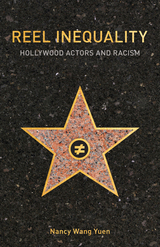 Reel Inequality: Hollywood Actors and Racism
Nancy Wang Yuen
Rutgers University Press, 2016 When the 2016 Oscar acting nominations all went to whites for the second consecutive year, #OscarsSoWhite became a trending topic. Yet these enduring racial biases afflict not only the Academy Awards, but also Hollywood as a whole. Why do actors of color, despite exhibiting talent and bankability, continue to lag behind white actors in presence and prominence? Reel Inequality examines the structural barriers minority actors face in Hollywood, while shedding light on how they survive in a racist industry. The book charts how white male gatekeepers dominate Hollywood, breeding a culture of ethnocentric storytelling and casting. Nancy Wang Yuen interviewed nearly a hundred working actors and drew on published interviews with celebrities, such as Viola Davis, Chris Rock, Gina Rodriguez, Oscar Isaac, Lucy Liu, and Ken Jeong, to explore how racial stereotypes categorize and constrain actors. Their stories reveal the day-to-day racism actors of color experience in talent agents’ offices, at auditions, and on sets. Yuen also exposes sexist hiring and programming practices, highlighting the structural inequalities that actors of color, particularly women, continue to face in Hollywood.
This book not only conveys the harsh realities of racial inequality in Hollywood, but also provides vital insights from actors who have succeeded on their own terms, whether by sidestepping the system or subverting it from within. Considering how their struggles impact real-world attitudes about race and diversity, Reel Inequality follows actors of color as they suffer, strive, and thrive in Hollywood.
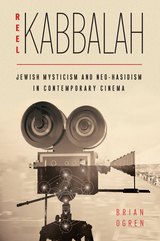 Reel Kabbalah: Jewish Mysticism and Neo-Hasidism in Contemporary Cinema
Brian Ogren
Rutgers University Press, 2024 Reel Kabbalah: Jewish Mysticism and Neo-Hasidism in Contemporary Cinema studies the ways in which fictional film in the first decade of the twenty-first century represents the esoteric Jewish speculative traditions known as Kabbalah and Hasidism. It examines the textual and conceptual traditions behind five important cinematic representations -- Pi (1998), Ushpizin (2004), Bee Season (2005), The Secrets (2007), and A Serious Man (2009) -- and it considers how film both stands in continuity with those traditions and modifies them in the New Age vein of what is known as neo-Kabbalah and neo-Hasidism. Brian Ogren transforms our understanding of reception history by focusing on how cinema has altered perceptions of Jewish mysticism. In showing how the Jewish speculative traditions of Kabbalah and Hasidism have been able to affect mass-consumed cinematic portrayals of ultimate Truth, this book sheds light on the New Age, pop-cultural dialectic of the particular within the universal and of the universal within the particular.
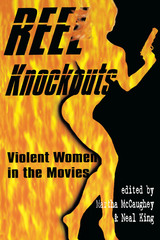 Reel Knockouts: Violent Women in Film
Edited by Martha McCaughey and Neal King
University of Texas Press, 2001 When Thelma and Louise outfought the men who had tormented them, women across America discovered what male fans of action movies have long known—the empowering rush of movie violence. Yet the duo's escapades also provoked censure across a wide range of viewers, from conservatives who felt threatened by the up-ending of women's traditional roles to feminists who saw the pair's use of male-style violence as yet another instance of women's co-option by the patriarchy. In the first book-length study of violent women in movies, Reel Knockouts makes feminist sense of violent women in films from Hollywood to Hong Kong, from top-grossing to direct-to-video, and from cop-action movies to X-rated skin flicks. Contributors from a variety of disciplines analyze violent women's respective places in the history of cinema, in the lives of viewers, and in the feminist response to male violence against women. The essays in part one, "Genre Films," turn to film cycles in which violent women have routinely appeared. The essays in part two, "New Bonds and New Communities," analyze movies singly or in pairs to determine how women's movie brutality fosters solidarity amongst the characters or their audiences. All of the contributions look at films not simply in terms of whether they properly represent women or feminist principles, but also as texts with social contexts and possible uses in the re-construction of masculinity and femininity.
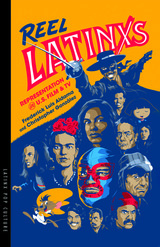 Reel Latinxs: Representation in U.S. Film and TV
Frederick Luis Aldama and Christopher González
University of Arizona Press, 2019 Latinx representation in the popular imagination has infuriated and befuddled the Latinx community for decades. These misrepresentations and stereotypes soon became as American as apple pie. But these cardboard cutouts and examples of lazy storytelling could never embody the rich traditions and histories of Latinx peoples. Not seeing real Latinxs on TV and film reels as kids inspired the authors to dive deep into the world of mainstream television and film to uncover examples of representation, good and bad. The result: a riveting ride through televisual and celluloid reels that make up mainstream culture.
As pop culture experts Frederick Luis Aldama and Christopher González show, the way Latinx peoples have appeared and are still represented in mainstream TV and film narratives is as frustrating as it is illuminating. Stereotypes such as drug lords, petty criminals, buffoons, and sexed-up lovers have filled both small and silver screens—and the minds of the public. Aldama and González blaze new paths through Latinx cultural phenomena that disrupt stereotypes, breathing complexity into real Latinx subjectivities and experiences. In this grand sleuthing sweep of Latinx representation in mainstream TV and film that continues to shape the imagination of U.S. society, these two Latinx pop culture authorities call us all to scholarly action.
 Reel Nature: America's Romance with Wildlife on Film
Gregg Mitman
Harvard University Press, 1999 Americans have had a long-standing love affair with the wilderness. As cities grew and frontiers disappeared, film emerged to feed an insatiable curiosity about wildlife. The camera promised to bring us into contact with the animal world, undetected and unarmed. Yet the camera's penetration of this world has inevitably brought human artifice and technology into the picture as well. In the first major analysis of American nature films in the twentieth century, Gregg Mitman shows how our cultural values, scientific needs, and new technologies produced the images that have shaped our contemporary view of wildlife.
Like the museum and the zoo, the nature film sought to recreate the experience of unspoiled nature while appealing to a popular audience, through a blend of scientific research and commercial promotion, education and entertainment, authenticity and artifice. Travelogue-expedition films, like Teddy Roosevelt's African safari, catered to upper- and middle-class patrons who were intrigued by the exotic and entertained by the thrill of big-game hunting and collecting. The proliferation of nature movies and television shows in the 1950s, such as Disney's True-Life Adventures and Marlin Perkins's Wild Kingdom, made nature familiar and accessible to America's baby-boom generation, fostering the environmental activism of the latter part of the twentieth century. Reel Nature reveals the shifting conventions of nature films and their enormous impact on our perceptions of, and politics about, the environment.
Whether crafted to elicit thrills or to educate audiences about the real-life drama of threatened wildlife, nature films then and now reveal much about the yearnings of Americans to be both close to nature and yet distinctly apart.
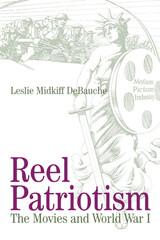 Reel Patriotism: The Movies and World War I
Leslie Midkiff DeBauche
University of Wisconsin Press, 1997 Mixing film history with social history, Reel Patriotism examines the role played by the American film industry during World War I and the effects of the industry’s pragmatic patriotism in the decade following the war. Looking at such films as Joan the Woman and Wings and at the war-time activities of Mary Pickford and Charlie Chaplin, film distributors, including George Kleine, and the National Association of the Motion Picture Industry, this book shows how heavily publicized gestures of patriotism benefited the reputation and profits of the movie business.
Leslie Midkiff DeBauche shows how the United States government’s need to garner public support for the war, conserve food, raise money, and enlist soldiers was met by the film industry. Throughout the nineteen months of American involvement in World War I, film studios supported the war effort through the production of short instructional films, public speaking activities of movie stars, the civic forum provided by movie theaters, and the National Association of the Motion Picture Industry’s provision of administrative personnel to work directly with government agencies. While feature films about the war itself never dominated the release schedules of film distributors, they did become a staple film industry offering throughout the late 1910s and 1920s.
The film industry had much to gain, DeBauche demonstrates, from working closely with the U.S. government. Though the war posed a direct challenge to the conduct of business as usual, the industry successfully weathered the war years. After the war, film producers, distributors, and exhibitors were able to capitalize on the good will of the movie-goer and the government that the industry’s war work created. It provided a buffer against national censorship when movie stars became embroiled in scandal, and it served as a selling point in the 1920s when major film companies began to trade their stock on Wall Street.
Reel Pleasures: Cinema Audiences and Entrepreneurs in Twentieth-Century Urban Tanzania
Laura Fair
Ohio University Press, 2017 Reel Pleasures brings the world of African moviehouses and the publics they engendered to life, revealing how local fans creatively reworked global media—from Indian melodrama to Italian westerns, kung fu, and blaxploitation films—to speak to local dreams and desires. In it, Laura Fair zeroes in on Tanzanians’ extraordinarily dynamic media cultures to demonstrate how the public and private worlds of film reception brought communities together and contributed to the construction of genders, generations, and urban citizenship over time. Radically reframing the literatures on media exhibition, distribution, and reception, Reel Pleasures demonstrates how local entrepreneurs and fans worked together to forge the most successful cinema industry in colonial sub-Saharan Africa. The result is a major contribution to the literature on transnational commodity cultures.
 Reel Power: Hollywood Cinema and American Supremacy
Matthew Alford
Pluto Press, 2010 Hollywood is often characterised as a stronghold of left-liberal ideals. In Reel Power, Matthew Alford shows that it is in fact deeply complicit in serving the interests of the most regressive US corporate and political forces.
Films like Transformers, Terminator: Salvation and Black Hawk Down are constructed with Defence Department assistance as explicit cheerleaders for the US military, but Matthew Alford also emphasises how so-called 'radical' films like Three Kings, Hotel Rwanda and Avatar present watered-down alternative visions of American politics that serve a similar function.
Reel Power is the first book to examine the internal workings of contemporary Hollywood as a politicised industry as well as scores of films across all genres. No matter what the progressive impulses of some celebrities and artists, Alford shows how they are part of a system that is hard-wired to encourage American global supremacy and frequently the use of state violence.
Reel Rituals: Ritual Occasions from Baptisms to Funerals in Hollywood Films, 1945-1995
Parley Ann Boswell and Paul Loukides
University of Wisconsin Press, 1999 Ritual occasions in the movies can bring us to laughter and tears and hope and regret; the chords they strike suggest the complex intersection between American movies and our lives. Major ritual occasions of weddings, baptisms, bar mitzvahs, funerals, graduations, and birthday parties appear in hundreds of popular films produced by Hollywood throughout the 20th century. This study suggests that these stock scenes are more significant to American film than we might have thought.
Reel to Reel
Alan Shapiro
University of Chicago Press, 2014 Reel to Reel, Alan Shapiro’s twelfth collection of poetry, moves outward from the intimate spaces of family and romantic life to embrace not only the human realm of politics and culture but also the natural world, and even the outer spaces of the cosmos itself. In language richly nuanced yet accessible, these poems inhabit and explore fundamental questions of existence, such as time, mortality, consciousness, and matter. How did we get here? Why is there something rather than nothing? How do we live fully and lovingly as conscious creatures in an unconscious universe with no ultimate purpose or destination beyond returning to the abyss that spawned us? Shapiro brings his humor, imaginative intensity, characteristic syntactical energy, and generous heart to bear on these ultimate mysteries. In ways few poets have done, he writes from a premodern, primal sense of wonder about our postmodern world.
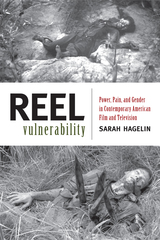 Reel Vulnerability: Power, Pain, and Gender in Contemporary American Film and Television
Hagelin, Sarah
Rutgers University Press, 2013 Wonder women, G.I. Janes, and vampire slayers increasingly populate the American cultural landscape. What do these figures mean in the American cultural imagination? What can they tell us about the female body in action or in pain? Reel Vulnerability explores the way American popular culture thinks about vulnerability, arguing that our culture and our scholarship remain stubbornly invested in the myth of the helplessness of the female body.
The book examines the shifting constructions of vulnerability in the wake of the cultural upheavals of World War II, the Cold War, and 9/11, placing defenseless male bodies onscreen alongside representations of the female body in the military, in the interrogation room, and on the margins. Sarah Hagelin challenges the ways film theory and cultural studies confuse vulnerability and femaleness. Such films as G.I. Jane and Saving Private Ryan, as well as such post-9/11 television shows as Battlestar Galactica and Deadwood, present vulnerable men who demand our sympathy, abused women who don’t want our pity, and images of the body in pain that do not portray weakness.
Hagelin’s intent is to help scholarship catch up to the new iconographies emerging in theaters and in living rooms—images that offer viewers reactions to the suffering body beyond pity, identification with the bleeding body beyond masochism, and feminist images of the female body where we least expect to find them.
Reel World: An Anthropology of Creation
Anand Pandian
Duke University Press, 2015 Reel World explores what happens to life when everything begins to look and feel like cinema. Drawing on years of fieldwork with Tamil filmmakers, artists, musicians, and craftsmen in the south Indian movie studios of "Kollywood," Anand Pandian examines how ordinary moments become elements of a cinematic world. With inventive, experimental, and sometimes comical zeal, Pandian pursues the sensory richness of cinematic experience and the adventure of a writing true to these sensations. Thinking with the visceral power of sound and image, his stories also broach deeply philosophical themes such as desire, time, wonder, and imagination. In a spirit devoted to the turbulence and uncertainty of genesis, Reel World brings into focus an ecology of creative process: the many forces, feelings, beings, and things that infuse human endeavors with transformative potential.
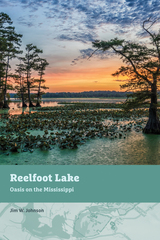 Reelfoot Lake: Oasis on the Mississippi
Jim W. Johnson
University of Tennessee Press, 2023 Each year nearly a quarter million visitors come to Reelfoot Lake, also known as “The Earthquake Lake,” to enjoy its natural splendor. With its twenty-five thousand acres of shimmering water, haunting cypress swamps, and two-hundred-year-old lily marshes, the lake is rich in natural beauty and natural history. Yet, despite being one of the most unique lakes in the country—this natural body of water formed during the New Madrid earthquakes in the early nineteenth century—it is relatively understudied. Biologist and environmentalist Jim W. Johnson grew up on the lake and experienced its natural and cultural history firsthand. As a wildlife biologist, he spent much of his career managing Reelfoot and its surrounding area. Reelfoot Lake: Oasis on the Mississippi is part personal remembrance, part guidebook, and part cautionary tale on river and wetland ecology, conservation, and land management, written by an author intimately knowledgeable about the lake and life on it. By exploring Reelfoot’s ancient and recent history, Johnson illuminates the lives of generations of people who lived and thrived in the floodplain. For those looking to navigate the waters of the lake, this book will make travel through the bayous and canals much easier and more pleasurable. And its discussions about the lake’s ecology will bolster voices calling for the protection and preservation of Reelfoot and other wetlands like it.
Accompanied by stunning photography, Johnson’s book is sure to become a useful outdoor guide to Reelfoot Lake and will increase readers’ appreciation for wetlands.
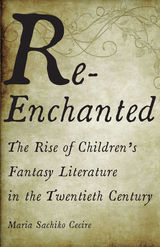 Re-Enchanted: The Rise of Children's Fantasy Literature in the Twentieth Century
Maria Sachiko Cecire
University of Minnesota Press, 2019 From The Hobbit to Harry Potter, how fantasy harnesses the cultural power of magic, medievalism, and childhood to re-enchant the modern world Why are so many people drawn to fantasy set in medieval, British-looking lands? This question has immediate significance for millions around the world: from fans of Lord of the Rings, Narnia, Harry Potter, and Game of Thrones to those who avoid fantasy because of the racist, sexist, and escapist tendencies they have found there. Drawing on the history and power of children’s fantasy literature, Re-Enchanted argues that magic, medievalism, and childhood hold the paradoxical ability to re-enchant modern life. Focusing on works by authors such as J. R. R. Tolkien, C. S. Lewis, Susan Cooper, Philip Pullman, J. K. Rowling, and Nnedi Okorafor, Re-Enchanted uncovers a new genealogy for medievalist fantasy—one that reveals the genre to be as important to the history of English studies and literary modernism as it is to shaping beliefs across geographies and generations. Maria Sachiko Cecire follows children’s fantasy as it transforms over the twentieth and twenty-first centuries—including the rise of diverse counternarratives and fantasy’s move into “high-brow” literary fiction. Grounded in a combination of archival scholarship and literary and cultural analysis, Re-Enchanted argues that medievalist fantasy has become a psychologized landscape for contemporary explorations of what it means to grow up, live well, and belong. The influential “Oxford School” of children’s fantasy connects to key issues throughout this book, from the legacies of empire and racial exclusion in children’s literature to what Christmas magic tells us about the roles of childhood and enchantment in Anglo-American culture. Re-Enchanted engages with critical debates around what constitutes high and low culture during moments of crisis in the humanities, political and affective uses of childhood and the mythological past, the anxieties of modernity, and the social impact of racially charged origin stories.
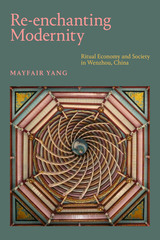 Re-enchanting Modernity: Ritual Economy and Society in Wenzhou, China
Mayfair Yang
Duke University Press, 2020 In Re-enchanting Modernity Mayfair Yang examines the resurgence of religious and ritual life after decades of enforced secularization in the coastal area of Wenzhou, China. Drawing on twenty-five years of ethnographic fieldwork, Yang shows how the local practices of popular religion, Daoism, and Buddhism are based in community-oriented grassroots organizations that create spaces for relative local autonomy and self-governance. Central to Wenzhou's religious civil society is what Yang calls a "ritual economy," in which an ethos of generosity is expressed through donations to temples, clerics, ritual events, and charities in exchange for spiritual gain. With these investments in transcendent realms, Yang adopts Georges Bataille's notion of "ritual expenditures" to challenge the idea that rural Wenzhou's economic development can be described in terms of Max Weber's notion of a "Protestant Ethic". Instead, Yang suggests that Wenzhou's ritual economy forges an alternate path to capitalist modernity.
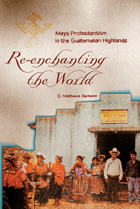 Re-Enchanting the World: Maya Protestantism in the Guatemalan Highlands
C. Mathews Samson
University of Alabama Press, 2007 Christian evangelicals among native people in Latin America. What does it mean to be both Maya and Protestant in Guatemala? Burgeoning religious pluralism in Mesoamerica and throughout Latin America is evident as Protestantism permeates a region that had been overwhelmingly Catholic for nearly five centuries. In considering the interplay between contemporary Protestant practice and native cultural traditions among Maya evangelicals, Samson documents the processes whereby some Maya have converted to new forms of Christianity and the ways in which the Maya are incorporating Christianity for their own purposes. At the intersection of religion and cultural pluralism, contemporary evangelicals focus on easing the tension between Maya identity and the Protestant insistence that old ways must be left behind in the conversion process. Against the backdrop of the 36-year civil war that ended in 1996 and the rise of the indigenous Maya Movement in the late 1980s, this work provides a unique portrait of social movements, cultural and human rights, and the role that religion plays in relation to the nation-state in post-conflict political processes. Re-enchanting the World fills a niche within the anthropological literature on evangelicals in Latin America during a time of significant social change.
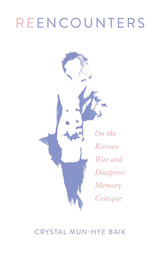 Reencounters: On the Korean War and Diasporic Memory Critique
Crystal Mun-hye Baik
Temple University Press, 2020 In Reencounters,Crystal Mun-hye Baik examines what it means to live with and remember an ongoing war when its manifestations—hypervisible and deeply sensed—become everyday formations delinked from militarization. Contemplating beyond notions of inherited trauma and post memory, Baik offers the concept of reencounters to better track the Korean War’s illegible entanglements through an interdisciplinary archive of diasporic memory works that includes oral history projects, performances, and video installations rarely examined by Asian American studies scholars. Baik shows how Korean refugee migrations are repackaged into celebrated immigration narratives, how transnational adoptees are reclaimed by the South Korean state as welcomed “returnees,” and how militarized colonial outposts such as Jeju Island are recalibrated into desirable tourist destinations. Baik argues that as the works by Korean and Korean/American artists depict this Cold War historiography, they also offer opportunities to remember otherwise the continuing war. Ultimately, Reencounters wrestles with questions of the nature of war, racial and sexual violence, and neoliberal surveillance in the twenty-first century.
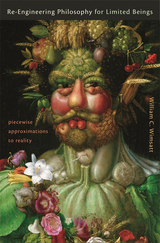 Re-Engineering Philosophy for Limited Beings: Piecewise Approximations to Reality
William C. Wimsatt
Harvard University Press, 2007 Analytic philosophers once pantomimed physics: they tried to understand the world by breaking it down into the smallest possible bits. Thinkers from the Darwinian sciences now pose alternatives to this simplistic reductionism.
In this intellectual tour--essays spanning thirty years--William Wimsatt argues that scientists seek to atomize phenomena only when necessary in the search to understand how entities, events, and processes articulate at different levels. Evolution forms the natural world not as Laplace's all-seeing demon but as a backwoods mechanic fixing and re-fashioning machines out of whatever is at hand. W. V. Quine's lost search for a "desert ontology" leads instead to Wimsatt's walk through a tropical rain forest.
This book offers a philosophy for error-prone humans trying to understand messy systems in the real world. Against eliminative reductionism, Wimsatt pits new perspectives to deal with emerging natural and social complexities. He argues that our philosophy should be rooted in heuristics and models that work in practice, not only in principle. He demonstrates how to do this with an analysis of the strengths, the limits, and a recalibration of our reductionistic and analytic methodologies. Our aims are changed and our philosophy is transfigured in the process.
Re-Envisioning Past Musical Cultures: Ethnomusicology in the Study of Gregorian Chant
Peter Jeffery
University of Chicago Press, 1992 Studying Gregorian chant presents many problems to the researcher because its most important stages of development were not recorded in writing. From the sixth to the tenth century, this form of music existed only in song as medieval musicians relied on their memories and voices to pass each verse from one generation to the next.
Peter Jeffery offers an innovative new approach for understanding how these melodies were created, memorized, performed, and modified. Drawing on a variety of disciplines, including anthropology and ethnomusicology, he identifies characteristics of Gregorian chant that closely resemble other oral traditions in non-Western cultures and demonstrates ways music historians can take into account the social, cultural, and anthropological contexts of chant's development.
 Reenvisioning Sexual Ethics: A Feminist Christian Account
Karen Peterson-Iyer
Georgetown University Press, 2023 A profound feminist Christian reframing of sexuality examines contemporary social practices and ethical sex From the sexual abuse crisis in the Roman Catholic Church to the US Supreme Court decision outlawing state-level bans on same-sex marriage, it has become clear that Catholics and other Christians cannot afford to downplay sex or rely on outdated normative understandings of its moral contours. Feminist theological approaches offer a way forward by considering not just what we should do in sexual spheres but also what sort of sexual people we should aspire to be. In Reenvisioning Sexual Ethics, author Karen Peterson-Iyer adopts a feminist Christian anthropological framework to connect robust theological and ethical analysis to practical sexual issues, particularly those confronting college-aged and younger adults today. The book examines four divergent yet overlapping contemporary social practices and phenomena wherein sex plays a central role: “hookup” culture; “sexting”; sex work; and sex trafficking. Through these case studies, Peterson-Iyer shows that ethical sex is best demarcated not as a matter of chastity on the one hand and purely free consent on the other, but rather as ideally expressing the fullness of human agency, communicating the joy of shared pleasure, and conferring a deep sense of possibility and wholeness upon all participants. This feminist Christian framework will help facilitate frank and profound discussions of sex, enabling young adults to define themselves and others not by hypersexualized and gendered social norms or attitudes but by their fundamental status as dignified and beloved by God.
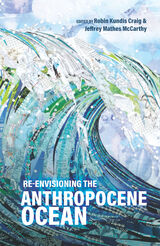 Re-envisioning the Anthropocene Ocean
Edited by Robin Kundis Craig and Jeffrey Mathes McCarthy
University of Utah Press, 2022 The world is at a critical moment, when humans must grapple with thinking about the planet’s oceans from ecological, physical, social, and legal perspectives. Warming ocean temperatures, changing currents, cultural displacement, Indigenous resilience, melting polar ice, habitat loss, are but a few of the global issues reflected in the planetary ocean as a front line in the unfolding drama of climate change. Re-envisioning the Anthropocene Ocean brings together leading scientists, lawyers, humanists, and Indigenous voices to tell of the ocean’s precarious position in the twenty-first century. The contributors affirm that the planetary ocean is crucial to our well-being and overdue for a positive change in public action to enhance the world’s resilience to climate change, ocean acidification, and other stressors. These essays engage that important work of positively re-imagining the ocean in the Anthropocene.
This volume brings diverse perspectives to the planet’s ocean future. New essays are contextualized with narratives woven by earlier ocean writers, showing readers how past perceptions of the ocean have led us to where we are today in terms of both problems and potential new visions. In this one volume, readers experience both the history of humanity’s multi- and interdisciplinary interactions with the ocean, find new perspectives on that history, and discover ideas for looking forward.
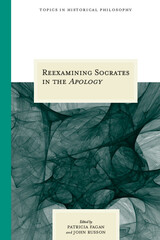 Reexamining Socrates in the Apology
Edited by Patricia Fagan and John Russon
Northwestern University Press, 2009 An oracle was reported to have said, "No one is wiser than Socrates." And in fact it was Socrates’ life’s work to interpret these words, which demanded and defined the practice of philosophy. Each of these original essays attends carefully to the specifics of the Apology, looking to its dramatic details, its philosophic teaching, and its complexity as a work of writing to bring into focus the "Socrates" of the Apology. Overall, the contributors, distinguished scholars of ancient philosophy, share a belief in the unity of the letter and the spirit of Platonic philosophy: the conviction that the Platonic text cannot be reached except through reading and cannot be read except through thinking. In this way, the readings in this volume mirror Socrates’ own hermeneutical practice of uniting the demands of the mind and the demands of the text—the Socratic "examination." The result, true to the Socratic injunction that the unexamined life is not worth living, continues that practice of examination, here offering a reexamination of Socrates in the Apology.
Re-examining the Cold War: U.S.–China Diplomacy, 1954–1973
Robert S. Ross
Harvard University Press, 2001 The twelve essays in this volume underscore the similarities between Chinese and American approaches to bilateral diplomacy and between their perceptions of each other’s policy-making motivations. Much of the literature on U.S.–China relations posits that each side was motivated either by ideologically informed interests or by ideological assumptions about its counterpart. But as these contributors emphasize, newly accessible archives suggest rather that both Beijing and Washington developed a responsive and tactically adaptable foreign policy. Each then adjusted this policy in response to changing international circumstances and changing assessments of its counterpart’s policies. Motivated less by ideology than by pragmatic national security concerns, each assumed that the other faced similar considerations.
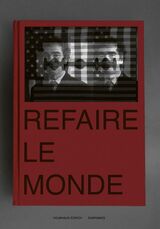 Refaire le monde
Edited by Simon Maurer and Daniel Morgenthaler
Diaphanes, 2021 Staging an exhibition as choreography, as drama, as opera, as a place where reality, politics, aesthetics, art, film, and music can address the issues of our day through documentaries, dialogues, science, activism, and creativity: This is the dream, the idea, and the mission of the “refaire le monde” exhibition trilogy at Helmhaus Zürich.
The exhibition involves some eighty different authorial voices, bringing diverse attitudes and actions into the safe space of the museum. This book is both a documentation of these new values and new worlds and a guide to them. It is people-focused, positing the arts as the model for a new human reality. Refaire le monde features many artists, including: Ursula Biemann, Pascale Birchler, Corina Gamma, Vincent Glanzmann, Fabrice Gygi, A. C. Kupper, Asia Andrzejka Merlin, Gianni Motti, Tanja Roscic, Heidi Specogna, Bertold Stallmach, and many more, as well as all those who participated in various parallel events.
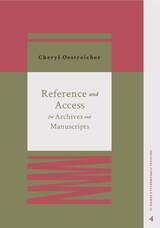 Reference and Access for Archives and Manuscripts
Cheryl Oestreicher
Society of American Archivists, 2020 Cheryl Oestreicher is the head of Special Collections and Archives and associate professor at Boise State University. She has a PhD in modern history and literature from Drew University and an MLIS from Dominican University. She previously worked at Auburn Avenue Research Library on African American Culture and History at Emory University, the University of Chicago, Drew University, and Princeton University. Oestreicher has taught introduction to archives, archives management, reference, and research methods at Georgia State University, Clayton State University, and Boise State University. She has been actively involved in SAA by serving on the Publications Board, Manuscripts Section Steering Committee, 2016 Annual Meeting Program as co-chair, and the SAA-ACRL/RBMS Joint Task Force to Revise Statement on Access. She was the 2015 recipient of the Emerging Leaders Award. For the Academy of Certified archivists, she was a member of the Recertification Review Task Force and Nominating Committee, and serves on the Exam Development Committee focusing on Domain 3: Reference Services and Access. She has served as a grant reviewer for the Council on Library and Information Resources, National Historical Publications and Records Commission, and the National Endowment for the Humanities. She is a former editor of Provenance, the journal of the Society of Georgia Archivists.
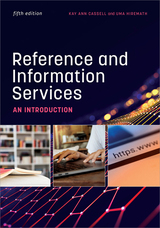 Reference and Information Services: An Introduction, Fifth Edition
Kay Ann Cassell and Uma Hiremath
American Library Association, 2022 From the ongoing flood of misinformation to the swift changes occasioned by the pandemic, a myriad of factors is spurring our profession to rethink reference services. Luckily, this classic text is back in a newly overhauled edition that thoughtfully addresses the evolving reference landscape. Designed to complement every introductory library reference course, Cassell and Hiremath's book also serves as the perfect resource to guide current practitioners in their day-to-day work. It teaches failsafe methods for identifying important materials by matching specific types of questions to the best available sources, regardless of format. Guided by a national advisory board of educators and experts, this thoroughly updated text presents chapters covering fundamental concepts, major reference sources, and special topics while also offering fresh insights on timely issues, including - a basic template for the skills required and expectations demanded of the reference librarian;
- the pandemic’s effect on reference services and how the ingenuity employed by libraries in providing remote and virtual reference is here to stay;
- a new chapter dedicated to health information, with a special focus on health equity and information sources;
- selecting and evaluating reference materials, with strategies for keeping up to date;
- a heightened emphasis on techniques for evaluating sources for misinformation and ways to give library users the tools to discern facts vs. “fake facts”;
- reference as programming, readers’ advisory services, developmentally appropriate material for children and young adults, and information literacy;
- evidence-based guidance on handling microaggressions in reference interactions, featuring discussions of cultural humility and competence alongside recommended resources on implicit bias;
- managing, assessing, and improving reference services; and
- the future of information and reference services, encapsulating existing models, materials, and services to project possible evolutions in the dynamic world of reference
Reference and Reflexivity: 2nd Edition
John Perry
CSLI, 2012 In this volume John Perry develops his “reflexive-referential” account of indexicals, demonstratives, and proper names. For this new second edition, Perry has added a new preface and two chapters on the distinction between semantics and pragmatics and on attitude reports. He reveals a coherent and structured family of contents—from reflexive contents that place conditions on their actual utterance to fully incremental contents that place conditions only on the objects of reference—reconciling the legitimate insights of both the referentialist and descriptivist traditions.
Reference and the Rational Mind
Kenneth A. Taylor
CSLI, 2003 Referentialism has underappreciated consequences for our understanding of the ways in which mind, language, and world relate to one another. In exploring these consequences, this book defends a version of referentialism about names, demonstratives, and indexicals, in a manner appropriate for scholars and students in philosophy or the cognitive sciences.
To demonstrate his view, Kenneth A. Taylor offers original and provocative accounts of a wide variety of semantic, pragmatic, and psychological phenomena, such as empty names, propositional attitude contexts, the nature of concepts, and the ultimate source and nature of normativity.
A Reference Grammar of Chinese Sentences with Exercises
Henry Hung-Yeh Tiee
University of Arizona Press, 1986 Begins with simple single-word-subject and simple-predicate sentences and moves systematically to transformed simple sentences and finally to compound and complex sentences. Each sentence structure is not only descriptively analyzed, but also formulated in a pedagogical pattern with examples. Exercises are provided in each unit.
A Reference Grammar of Egyptian Arabic
Ernest T. Abdel-Massih, Zaki N. Abdel-Malek, and El-Said M. Badawi. with Ernest N. McCarus. Foreword by Elizabeth M. Bergman
Georgetown University Press, 2009 Originally published in 1979, this classic reference work presents definitions of grammatical and linguistic terms for spoken Egyptian Arabic in dictionary form from "active participles" through "writing system." Entries feature definitions and examples of all the grammatical features including phonology, morphology, and syntax. Aimed at the intermediate to advanced student of Egyptian Arabic, this volume presupposes a basic knowledge of Egyptian Arabic. Arabic lexical items are presented in romanized transliteration and are therefore accessible to those who are not familiar with Arabic script.
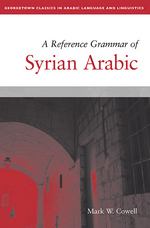 A Reference Grammar of Syrian Arabic
Mark W. Cowell. Foreword by Ernest N. McCarus
Georgetown University Press, 2016 This important reissue, enhanced with free downloadable MP3 files to supplement the first chapter of the text (sounds), is another addition to Georgetown's world-renowned Arabic language-learning materials and is considered to be one of the most outstanding descriptions of any Arabic dialect written for the English-speaking world. It is comprehensive in its coverage—ranging from phonology (how sounds are organized and used) to morphology (sound, syllable, and word structure), with an analysis that is insightful and original. It contains hints on how to master nuances in dialectical pronunciation, as well as the differences of meaning in their various forms. Based on the dialect of Damascus, the language covered here is part of what has variously been called "Syrian Arabic," "Eastern Arabic," and "Levantine Arabic," encompassing the dialects of Beirut, Amman, and Jerusalem—as well as Damascus—with references made to regional variants. In a world drawn ever closer to events in the Middle East, this comprehensive grammar reference is yet another extraordinary addition to the growing library of Arabic language-learning materials published by Georgetown University Press. Accompanying MP3 files are available for download from the book’s webpage at press.georgetown.edu.
 A Reference Grammar of Syrian Arabic with Audio CD
Mark W. Cowell. Foreword by Ernest N. McCarus
Georgetown University Press, 2005 This important reissue, enhanced with an audio CD to supplement the first chapter of the text (sounds), is another addition to Georgetown's world-renowned Arabic language-learning materials and is considered to be one of the most outstanding descriptions of any Arabic dialect written for the English-speaking world. It is comprehensive in its coverage—ranging from phonology (how sounds are organized and used) to morphology (sound, syllable, and word structure), with an analysis that is insightful and original. It contains hints on how to master nuances in dialectical pronunciation, as well as the differences of meaning in their various forms. Based on the dialect of Damascus, the language covered here is part of what has variously been called "Syrian Arabic," "Eastern Arabic," and "Levantine Arabic," encompassing the dialects of Beirut, Amman, and Jerusalem—as well as Damascus—with references made to regional variants. In a world drawn ever closer to events in the Middle East, this comprehensive grammar reference is yet another extraordinary addition to the growing library of Arabic language-learning materials published by Georgetown University Press.
A Reference Guide to Medicinal Plants: Herbal Medicine Past and Present
John K. Crellin and Jane Philpott
Duke University Press, 1997 Reissued as a companion edition to Trying to Give Ease: Tommie Bass and the Story of Herbal Medicine, this illustrated reference guide covers over 700 medicinal plants, of which more than 150 are readily obtainable in health food stores and other outlets. Based on the Appalachian herbal practice of the late A. L. "Tommie" Bass, each account of a plant includes the herbalist’s comment, an assessment of the plant’s efficacy, and current information on its chemical constituents and pharmacological effects. Unlike most herbal guides, this is a comprehensive, fully documented reference work that interweaves scientific evaluation with folkloric use.
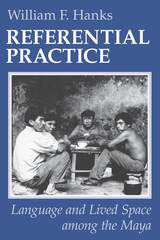 Referential Practice: Language and Lived Space among the Maya
William F. Hanks
University of Chicago Press, 1990 Referential Practice is an anthropological study of language use in a contemporary Maya community. It examines the routine conversational practices in which Maya speakers make reference to themselves and to each other, to their immediate contexts, and to their world. Drawing on extensive fieldwork in Oxkutzcab, Yucatán, William F. Hanks develops a sociocultural approach to reference in natural languages. The core of this approach lies in treating speech as a social engagement and reference as a practice through which actors orient themselves in the world. The conceptual framework derives from cultural anthropology, linguistic pragmatics, interpretive sociology, and cognitive semantics.
As his central case, Hanks undertakes a comprehensive analysis of deixis—linguistic forms that fix reference in context, such as English I, you, this, that, here, and there. He shows that Maya deixis is a basic cultural construct linking language with body space, domestic space, agricultural and ritual practices, and other fields of social activity. Using this as a guide to ethnographic description, he discovers striking regularities in person reference and modes of participation, the role of perception in reference, and varieties of spatial orientation, including locative deixis. Traditionally considered a marginal area in linguistics and virtually untouched in the ethnographic literature, the study of referential deixis becomes in Hanks's treatment an innovative and revealing methodology.
Referential Practice is the first full-length study of actual deictic use in a non-Western language, the first in-depth study of speech practice in Yucatec Maya culture, and the first detailed account of the relation between routine conversation, embodiment, and ritual discourse.
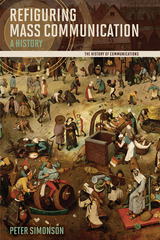 Refiguring Mass Communication: A History
Peter Simonson
University of Illinois Press, 2010 This unique inquiry into the history and ongoing moral significance of mass communication also represents a defense, extension, and overhaul of the idea and social form of the discipline. Organized around narrative accounts of individuals and their communicative worlds, Refiguring Mass Communication illuminates significant but overlooked rhetorical episodes in history to enable modern-day readers to rehabilitate and reinvigorate their own engagements with mass communication. Coined in the 1920s as a way to describe radio, motion pictures, wide-circulation magazines, and the press, the term "mass communication" frequently is misused in the era of cable TV, niche marketing, and the Internet. In Refiguring Mass Communication, Peter Simonson compares his own vision of mass communication with distinct views articulated throughout history by Paul of Tarsus, Walt Whitman, Charles Horton Cooley, David Sarnoff, and Robert K. Merton, utilizing a collection of texts and tenets from a variety of time periods and perspectives. Drawing on textual and archival research as well as access to Merton's personal papers, Simonson broadly reconceives a sense of communication theory and what social processes might be considered species of mass communication. Simonson reveals the geographical and social contexts from which these visions have emerged and the religious and moral horizons against which they have taken shape. In a unique perspective, he considers the American county fair as an example of a live gathering and crucial site that is overlooked in contemporary forms of mass communication, urging a reconsideration of how individuals participate in and shape similar forms.
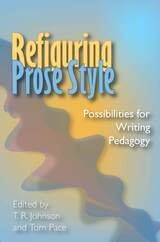 Refiguring Prose Style: Possibilities For Writing Pedagogy
edited by T. R. Johnson & Thomas Pace
Utah State University Press, 2005 For about two decades, say Johnson and Pace, the discussion of how to address prose style in teaching college writing has been stuck, with style standing in as a proxy for other stakes in the theory wars. The traditional argument is evidently still quite persuasive to some—that teaching style is mostly a matter of teaching generic conventions through repetition and practice. Such a position usually presumes the traditional view of composition as essentially a service course, one without content of its own. On the other side, the shortcomings of this argument have been much discussed—that it neglects invention, revision, context, meaning, even truth; that it is not congruent with research; that it ignores 100 years of scholarship establishing composition's intellectual territory beyond "service." The discussion is stuck there, and all sides have been giving it a rest in recent scholarship. Yet style remains of vital practical interest to the field, because everyone has to teach it one way or another. A consequence of the impasse is that a theory of style itself has not been well articulated. Johnson and Pace suggest that moving the field toward a better consensus will require establishing style as a clearer subject of inquiry. Accordingly, this collection takes up a comprehensive study of the subject. Part I explores the recent history of composition studies, the ways it has figured and all but effaced the whole question of prose style. Part II takes to heart Elbow's suggestion that composition and literature, particularly as conceptualized in the context of creative writing courses, have something to learn from each other. Part III sketches practical classroom procedures for heightening students' abilities to engage style, and part IV explores new theoretical frameworks for defining this vital and much neglected territory. The hope of the essays here—focusing as they do on historical, aesthetic, practical, and theoretical issues—is to awaken composition studies to the possibilities of style, and, in turn, to rejuvenate a great many classrooms.
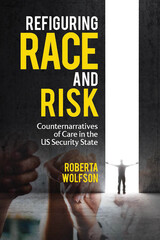 Refiguring Race and Risk: Counternarratives of Care in the US Security State
Roberta Wolfson
Ohio State University Press, 2024 In Refiguring Race and Risk, Roberta Wolfson turns to novels, memoirs, and other cultural works to debunk the false sense of national security rooted in positioning people of color as embodiments of risk. Considering output by Miné Okubo, Sanyika Shakur, Abraham Verghese, Khaled Hosseini, Helena María Viramontes, and others, Wolfson demonstrates how these authors disrupt racist security regimes and model alternative strategies for managing risk by crafting stories of collective care and community building. Chapters discuss, among other examples, how gang members defy the mass incarceration of Black and Latinx Americans by committing to self-education and self-advocacy; how an Asian immigrant doctor offers a corrective to the pandemic-era trend of allowing xenophobia to inform public health decisions by providing human-centered medical services to HIV-positive patients; and how Latinx migrant farmworkers battle ongoing precarity amid the increasing militarization of the US-Mexico border by bartering life-sustaining resources. In revealing how these works cultivate love as a mode of political resistance, Wolfson relabels people of color not as a source of risk but as critical actors in the push to improve national security.
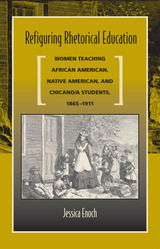 Refiguring Rhetorical Education: Women Teaching African American, Native American, and Chicano/a Students, 1865-1911
Jessica Enoch
Southern Illinois University Press, 2008 Refiguring Rhetorical Education: Women Teaching African American, Native American, and Chicano/a Students, 1865-1911 examines the work of five female teachers who challenged gendered and cultural expectations to create teaching practices that met the civic and cultural needs of their students. The volume analyzes Lydia Maria Child’s The Freedmen’s Book, a post–Civil War educational textbook for newly freed slaves; Zitkala Ša’s autobiographical essays published in the Atlantic Monthly in 1900 that questioned the work of off-reservation boarding schools for Native American students; and Jovita Idar, Marta Peña, and Leonor Villegas de Magnón’s contributions to the Spanish-language newspaper La Crónica in 1910 and 1911—contributions that offered language and cultural instruction their readers could not receive in Texas public schools. Author Jessica Enoch explores the possibilities and limitations of rhetorical education by focusing on the challenges that Child, Zitkala Ša, Idar, Peña, and Villegas made to dominant educational practices. Each of these teachers transformed their seemingly apolitical occupation into a site of resistance, revising debilitating educational methods to advance culture-based and politicized teachings that empowered their students to rise above their subjugated positions. Refiguring Rhetorical Education considers how race, culture, power, and language are both implicit and explicit in discussions of rhetorical education for marginalized students and includes six major tenets to guide present-day pedagogies for civic engagement.
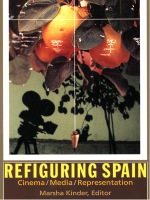 Refiguring Spain: Cinema/Media/Representation
Marsha Kinder, ed.
Duke University Press, 1997 In Refiguring Spain, Marsha Kinder has gathered a collection of new essays that explore the central role played by film, television, newspapers, and art museums in redefining Spain’s national/cultural identity and its position in the world economy during the post-Franco era. By emphasizing issues of historical recuperation, gender and sexuality, and the marketing of Spain’s peaceful political transformation, the contributors demonstrate that Spanish cinema and other forms of Spanish media culture created new national stereotypes and strengthened the nation’s place in the global market and on the global stage. These essays consider a diverse array of texts, ranging from recent films by Almodóvar, Saura, Erice, Miró, Bigas Luna, Gutiérrez Aragón, and Eloy de la Iglesia to media coverage of the 1993 elections. Francoist cinema and other popular media are examined in light of strategies used to redefine Spain’s cultural identity. The importance of the documentary, the appropriation of Hollywood film, and the significance of gender and sexuality in Spanish cinema are also discussed, as is the discourse of the Spanish media star—whether involving film celebrities like Rita Hayworth and Antonio Banderas or historical figures such as Cervantes. The volume concludes with an investigation of larger issues of government policy in relation to film and media, including a discussion of the financing of Spanish cinema and an exploration of the political dynamics of regional television and art museums. Drawing on a wide range of critical discourses, including feminist, postcolonial, and queer theory, political economy, cultural history, and museum studies, Refiguring Spain is the first comprehensive anthology on Spanish cinema in the English language. Contributors. Peter Besas, Marvin D’Lugo, Selma Reuben Holo, Dona M. Kercher, Marsha Kinder, Jaume Martí-Olivella, Richard Maxwell, Hilary L. Neroni, Paul Julian Smith, Roland B. Tolentino, Stephen Tropiano, Kathleen M. Vernon, Iñaki Zabaleta
Refining Child Pornography Law: Crime, Language, and Social Consequences
Edited by Carissa Byrne Hessick
University of Michigan Press, 2016 The legal definition of child pornography is, at best, unclear. In part because of this ambiguity and in part because of the nature of the crime itself, the prosecution and sentencing of perpetrators, the protection of and restitution for victims, and the means for preventing repeat offenses are deeply controversial. In Refining Child Pornography Law, experts in law, sociology, and social work examine child pornography law and its consequences in an effort to clarify the questions and begin to formulate answers. Focusing on the roles of language and crime definition, the contributors discuss the increasing visibility child pornography plays in the national conversation about child safety, and present a range of views regarding the punishment of those who produce, distribute, and possess materials that may be considered child pornography.
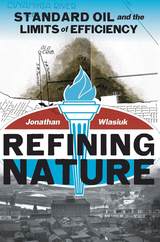 Refining Nature: Standard Oil and the limits of Efficiency
Jonathan Wlasiuk
University of Pittsburgh Press, 2017 The Standard Oil Company emerged out of obscurity in the 1860s to capture 90 percent of the petroleum refining industry in the United States during the Gilded Age. John D. Rockefeller, the company’s founder, organized the company around an almost religious dedication to principles of efficiency. Economic success masked the dark side of efficiency as Standard Oil dumped oil waste into public waterways, filled the urban atmosphere with acrid smoke, and created a consumer safety crisis by selling kerosene below congressional standards.
Local governments, guided by a desire to favor the interests of business, deployed elaborate engineering solutions to tackle petroleum pollution at taxpayer expense rather than heed public calls to abate waste streams at their source. Only when refinery pollutants threatened the health of the Great Lakes in the twentieth century did the federal government respond to a nascent environmental movement. Organized around the four classical elements at the core of Standard Oil’s success (earth, air, fire, and water), Refining Nature provides an ecological context for the rise of one of the most important corporations in American history.
 Reflecting a Prairie Town: A Year in Peterson
Drake Hokanson
University of Iowa Press, 1994 In Reflecting a Prairie Town Drake Hokanson takes a prolonged look at a common place in an uncommon fashion. He presents Peterson, Iowa, through a singular combination of words and images, a remarkable synthesis of history, geography, direct observation, climatology, botany, oral history, archaeology, agricultural science, literature, geology, photography, and even a bit of astronomy. This vernacular landscape study is lavishly illustrated with photographs taken by the author, including stunning panoramic views. The fundamental truth of experience on this continent has always lain in the challenges and opportunities of space. Place mattered because we were so few before the immensity of the land. But place at the same time rooted us in that immensity. Even now our appreciation for place is not quite dead; locked in our urban environments we continue to crave a “view,” be it of mountains, forests, or prairies. These “views” crop up unexpectedly as photographic murals in office buildings or posters in dentists' offices. It is to this stifled sense of the importance of place that Hokanson speaks; he invites us to remember and to be revitalized. The magic of Reflecting a Prairie Town is the revelation that Peterson, Iowa, is a small town that is also uncannily large. In capturing the essence of this one place Hokanson helps us to understand our own worlds better—he asks the simple questions many of us would like to ask were we given the opportunity. To enter this book is to come back to a place we have never really seen before.
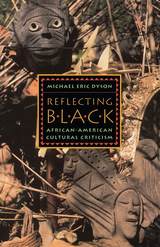 Reflecting Black: African-American Cultural Criticism
Michael Eric Dyson
University of Minnesota Press, 1993 From rap music to preaching, from Toni Morrison to Leonard Jeffries, from Michael Jackson to Michael Jordan, Reflecting Black explores as never before the varied and complex dimensions of African-American culture through personal reflection, expository journalism, scholarly investigation and even homily. "A landmark text in Afro-American cultural criticism. There is simply nothing like it that exists. The level of theoretical sophistication and political engagement is rare-and badly needed." -Cornel West"As Reflecting Black so richly demonstrates, Michael Eric Dyson combines cutting-edge theoretical acuity with the passionate, engaged, and accessible stance of a public intellectual. His critical purview encompasses scholarly tomes and mass market periodicals, trends in theology and in hip-hop culture alike. This book is a splendid introduction to a singularly important voice." -Henry Louis Gates, Jr."Dyson is a young black cultural, political and religious critic whose new book directs its nastiest commentary at racism, sexism, capitalism and straight-up immorality. His is a fresh voice seemingly unfazed by Blackademe's battle royal. Dyson's project is very much in the tradition of recent work by a number of young African-American cultural critics like Tricia Rose, Hilton Als, bell hooks, Greg Tate, Wahneema Lubiano, Elizabeth Alexander and Herman Gray, to name but a few. Reflecting Black is much more than a cultural critique in the formal sense. It interrogates the political, social and moral crises confronting American society generally and African-American communities in particular. In the end, Dyson is not one of those cultural studies scholars concerned with debating the fine points of discourse theory. He is an 'oppositional' critic with a much higher purpose than developing analytical tools to make sense of African-American culture. The Reverend Dyson is not only operating within a rich Marxist tradition but within a very old and continuing African-American tradition. Black communities, through newspaper columns, church groups, street corner gatherings, beauty parlor and barber shop discussions, have always debated and taken responsibility for their culture(s). Dyson's constant lecturing, chiding and encouraging embodies what Antonio Gramsci and his own mama expected us to do all along: not just interpret culture but actively change it--through struggle." -The Nation"Where Michael Jackson meets spirituality, where Martin Luther King meets Malcolm X, where the consolidating 'narrative of racial unity' meets the 'perplexing and chaotic politics of racial identity': These are the border zones of Michael Eric Dyson's compassionate, postmodern, eclectic critical project. Reflecting Black is an invigorating reader for our perplexing and chaotic times." -Voice Literary Supplement"He shows an admirable breadth, ranging from issues such as racism and political correctness in the seminary to examinations of such icons of popular culture as filmaker Spike Lee, singer Michael Jackson and athlete Michael Jordan. One entire section of the book is devoted to black religion, and includes an examination of the lives and examples of Martin Luther King, Jr. and Malcom X." -Washington Post Book World"Yet, if Dyson stumbles in his discussions of black popular culture, he soars in his section titled 'Beyond the Mantra: Reflections on Race, Gender, and Class.' In 'Remembering Emmett Till,' Dyson writes not just with his mind, but with his heart." -Boston Globe"Yet his insights are just as often incisive and challenging, and they demand serious consideration. By insisting that we acknowledge the complexities of race in America and by refusing to accept easy answers, Reflecting Black forces us to think harder about how we can create alterna
Reflecting Jerusalem in Medieval Czech Lands
Anna Kernbach
Amsterdam University Press, 2025 Reflecting Jerusalem in the Medieval Czech Lands maps the reception, reflection, and translation of Jerusalem in medieval Czech lands. The volume deals with Jerusalem as an idea and traces it not only in time but in various forms of art as well – such as architecture, book and wall-painting, and different literary genres – with the aim of covering the whole spectrum of Jerusalem images in medieval Czech lands. Special attention is paid to the interim period, when the Czech lands “lost” direct contact with the Holy Land and the idea of Jerusalem was mediated through Western European and Italian sources.
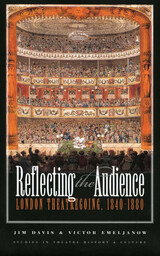 Reflecting the Audience: London Theatregoing, 1840-1880
Jim Davis
University of Iowa Press, 2001 This innovative work begins to fill a large gap in theatre studies: the lack of any comprehensive study of nineteenth-century British theatre audiences. In an attempt to bring some order to the enormous amount of available primary material, Jim Davis and Victor Emeljanow focus on London from 1840, immediately prior to the deregulation of that city's theatres, to 1880, when the Metropolitan Board of Works assumed responsibility for their licensing. In a further attempt to manage their material, they concentrate chapter by chapter on seven representative theatres from four areas: the Surrey Theatre and the Royal Victoria to the south, the Whitechapel Pavilion and the Britannia Theatre to the east, Sadler's Wells and the Queen's (later the Prince of Wales's) to the north, and Drury Lane to the west.
Davis and Emeljanow thoroughly examine the composition of these theatres' audiences, their behavior, and their attendance patterns by looking at topography, social demography, police reports, playbills, autobiographies and diaries, newspaper accounts, economic and social factors as seen in census returns, maps and transportation data, and the managerial policies of each theatre.
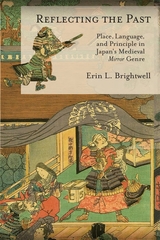 Reflecting the Past: Place, Language, and Principle in Japan’s Medieval Mirror Genre
Erin L. Brightwell
Harvard University Press, 2020 Reflecting the Past is the first English-language study to address the role of historiography in medieval Japan, an age at the time widely believed to be one of irreversible decline. Drawing on a decade of research, including work with medieval manuscripts, it analyzes a set of texts—eight Mirrors—that recount the past in an effort to order the world around them. They confront rebellions, civil war, “China,” attempted invasions, and even the fracturing of the court into two lines. To interrogate the significance for medieval writers of narrating such pasts as a Mirror, Erin Brightwell traces a series of innovations across these and related texts that emerge in the face of disorder. In so doing, she uncovers how a dynamic web of evolving concepts of time, place, language use, and cosmological forces was deployed to order the past in an age of unprecedented social movement and upheaval.
Despite the Mirrors’ common concerns and commitments, traditional linguistic and disciplinary boundaries have downplayed or obscured their significance for medieval thinkers. Through their treatment here as a multilingual, multi-structured genre, the Mirrors are revealed, however, as the dominant mode for reading and writing the past over almost three centuries of Japanese history.
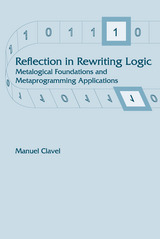 Reflection in Rewriting Logic: Metalogical Foundations and Metaprogramming Applications
Manuel Clavel
CSLI, 2000 Reflection, the capacity to represent our ideas and to make them the object of our own thoughts, has for many centuries been recognized as a key mark of human intelligence. The very success and extension of reflective ideas in logic and computer science underscores the need for conceptual foundations.
This book proposes a general theory of reflective logics and reflective declarative programming languages. This theory provides a conceptual foundation for judging the extent to which a computational system is reflective. Manuel Clavel presents a proof of the reflective nature of rewriting logic and provides examples of the potential for reflective programming in a number of novel computer applications. These applications are implemented in Maude, a reflective programming language and environment based on rewriting logic that can define, represent and execute a breadth of logics, languages and models of computation. A general method to easily build theorem-proving tools in Maude is also proposed and illustrated. The book goes on to promote the notion of a "universal theory" that can simulate the deductions of all representable theories within any given logic.
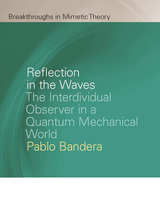 Reflection in the Waves: The Interdividual Observer in a Quantum Mechanical World
Pablo Bandera
Michigan State University Press, 2019 The incredible success of quantum theory as a mathematical model makes it especially frustrating that we cannot agree on a plausible philosophical or metaphysical description of it. Some philosophers of science have noticed certain parallels between quantum theory and the philosophy of Thomas Aquinas, and these parallels are deepened and strengthened if the “observer” of modern physics is associated with the “intellect” of scholastic ontology. In this case we are talking about a human observer. But this type of observer has a unique quality that is not considered at all by either physics or scholastic philosophy—the human observer is mimetic and therefore “interdividual.” By taking this fundamental anthropological fact into account, it turns out that the critical gaps still separating Aquinas from modern physicists can be effectively closed, reconciling the realism of Aquinas with the empirical evidence of quantum mechanics. This book explores this new bridge between the physical and the human—a bridge essentially designed by scholastic theory, clarified by mimetic theory, and built by quantum theory—and the path it opens to that metaphysical understanding for which philosophers of modern science have been striving. It is an understanding, not merely of the physical but of physics in the fuller sense of what is real and what is true. Here the reader will find a physics that describes the natural world and our place as mimetic observers within it.
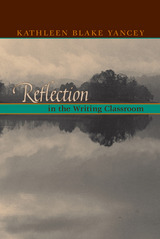 Reflection In The Writing Classroom
Kathleen Blake Yancey
Utah State University Press, 1998 Yancey explores reflection as a promising body of practice and inquiry in the writing classroom. Yancey develops a line of research based on concepts of philosopher Donald Schon and others involving the role of deliberative reflection in classroom contexts. Developing the concepts of reflection-in-action, constructive reflection, and reflection-in-presentation, she offers a structure for discussing how reflection operates as students compose individual pieces of writing, as they progress through successive writings, and as they deliberately review a compiled body of their work-a portfolio, for example. Throughout the book, she explores how reflection can enhance student learning along with teacher response to and evaluation of student writing. Reflection in the Writing Classroom will be a valuable addition to the personal library of faculty currently teaching in or administering a writing program; it is also a natural for graduate students who teach writing courses, for the TA training program, or for the English Education program.
 Reflection-in-Motion: Reimagining Reflection in the Writing Classroom
Jaclyn Fiscus-Cannaday
Utah State University Press, 2024 Reflection-in-Motion considers how reflective practice is embedded in daily course happenings, centering the experiences of students and teachers in Minority Serving Institutions to amplify
underrepresented viewpoints about how reflection works in the writing classroom. Jaclyn Fiscus-Cannaday examines how its availability is subject to teacher/student power dynamics, the literacies welcomed (or not) in the class, the past and present pedagogies that students are engaging with and attending to, and the interactions among humans, materials, and emotions within the rhetorical context. She adopts an intersectional feminist perspective for an inclusive view of how practitioners name, identify, and practice reflection in the everyday moments of writing classrooms.
Fiscus-Cannaday invokes a Black feminist qualitative research method that Venus Evans-Winters calls a “mosaic.” When researchers collect both traditional and nontraditional texts to create a full view of students’ and teachers’ interviews at three institutions (a Hispanic Serving Institution, a Historically Black College and University, and an Asian American Native American Pacific Islander Serving Institution), she finds that practitioners often build definitions from past experiences with reflection—and then use those definitions as terministic screens to decide if an activity can be named, identified, and practiced as reflection. These definitions hold different rhetorical effects: reflection-for-introspection, reflection-for-learning, reflection-for-mindfulness, and reflection-for-awareness.
Reflection is used for these different rhetorical effects, but because classrooms so often focus on the Westernized view and its emphasis on growth, reflection has the underused and undertheorized potential rhetorical effect of helping students investigate their identities and positionalities, acknowledge deep-rooted ideologies, and consider new perspectives so they can better work across difference. Reflection-in-Motion will inspire teachers and writing program administrators to listen to how students define and practice reflection and why—thus making room for more capacious definitions of reflection and student-centered practices of what reflection can do and be.
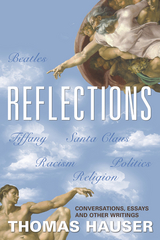 Reflections: Conversations, Essays, and Other Writings
Thomas Hauser
University of Arkansas Press, 2014 Thomas Hauser is well known to readers as Muhammad Ali's biographer and for his recording of the contemporary boxing scene. But Hauser began his writing career in the political arena as the author of Missing, a novel later made into an AcademyAward-winning film starring Jack Lemmon and Sissy Spacek. He has written books on subjects as diverse as public education, moral values, and Chernobyl, and his articles have appeared in publications ranging from the New Yorker to Penthouse. Reflections brings together all of Hauser's articles on subjects other than sports. The book begins with a never-published essay on the Beatles. It then takes readers on a remarkable journey that moves from an exploration of racism, religion, and other hot-button political issues to personal memories and reflections on the origins of Santa Claus and the Tiffany box. Combining personal memories with issue-oriented commentary, Reflections creates a portrait of some of the most remarkable people and most compelling issues of our time.
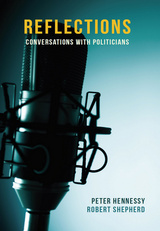 Reflections: Conversations with Politicians
Peter Hennessy and Robert Shepherd
Haus Publishing, 2016 “The historian,” wrote E. L. Doctorow, “will tell you what happened. The novelist will tell you what it felt like.” This book sees Peter Hennessy and Robert Shepard combine both approaches with the art of the interviewer, a craft at once sensitive and probing.
Reflections collects transcripts of the best interviews from the BBC Radio 4 series Reflections with Peter Hennessy, a show on which the British political elite have spoken candidly about their careers and the moments that came to define their political lives. Supplementing the interviews are short biographies and profiles of the interviewees, allowing readers a fuller picture of each speaker’s background and professional trajectory. This revealing book includes conversations with political heavyweights such as former prime minister John Major; former foreign secretaries Margaret Beckett, David Owen, and Jack Straw; Labour Party leader Neil Kinnock; Liberal Party leader David Steel; and chancellor of exchequer Nigel Lawson. In addition, Reflections presents interviews with leading women, including Shirley Williams and Clare Short, who spent years at the forefront of their parties in Westminster.
The latest volume in the popular Haus Curiosities series, Reflections offers valuable insights from some of today’s most influential political figures.
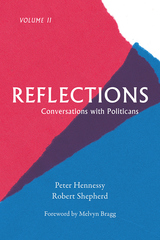 Reflections: Conversations with Politicians Volume II
Peter Hennessy and Robert Shepherd
Haus Publishing, 2019 Accompanying the acclaimed BBC Radio 4 program, Reflections features interviews with twelve of Britain’s most influential political figures from the last twenty years. Presented by Peter Hennessy, one of the UK’s most renowned historians, each interview not only offers an honest and frank assessment of a political career, but also acts as a biography filled with fresh insights and moments of new revelation. From one of the longest-serving Prime Ministers and three of the Conservative leaders who stood against him, to dominant figures of late Thatcherism, stalwarts of successive New Labour cabinets, and leaders of the Liberal Democrats, Hennessy brings his characteristic style to each encounter. The politicians included in this volume are: Tony Blair, Michael Heseltine, Vince Cable, Margaret Hodge, William Hague, Harriet Harman, Michael Howard, Paddy Ashdown, Sayeeda Warsi, David Blunkett, Iain Duncan Smith and Kenneth Baker.
 Reflections in a Bloodshot Lens: America, Islam and the War of Ideas
Lawrence Pintak
Pluto Press, 2006 There exists today a tragic rift between Americans and the world’s Muslims. Yet in the immediate aftermath of 9/11, there was widespread sympathy for the U.S. throughout the Muslim world. This book explores what happened. It examines the disconnect that leads Americans and Muslims to view the same words and images in fundamentally different ways. Partly a result of a centuries-old 'us' against 'them' dichotomy, the problem is exacerbated by an increasingly polarised media and by leaders on both sides who either don't understand or don't care what impact their words and policies have in the world at large.
Journalist-scholar Lawrence Pintak, a former CBS News Middle East correspondent, argues that the Arab media revolution and the rise of 'patriot-journalists' in the US marginalized voices of moderation, distorting perceptions on both sides of the divide with potentially disastrous results.
Built on the author's extensive journalistic experience, the book will appeal to policymakers, students of media studies, Middle East studies and Islamic studies, and general current affairs readers.
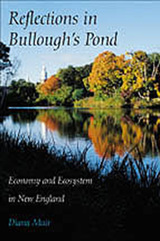 Reflections in Bullough’s Pond: Economy and Ecosystem in New England
Diana Muir
University Press of New England, 2002 From the vantage point of a nearby pond in Newton, Massachusetts, Diana Muir reconstructs an intriguing interpretation of New England's natural history and the people who have lived there since pre-Columbian times. Taking a radically new way to illustrate for general readers the vast interrelationships between natural ecology and human economics, Muir weaves together an imaginative and dramatic account of the changes, massive and subtle, that successive generations of humankind and such animals as sheep and beavers have worked on the land. Her compelling narrative takes us to a New England populated by individuals struggling to make a living from a land not generously endowed by nature. Yankee history, she argues, was a string of ecological crises from which the only escape lay in creating radical new solutions to apparently insurmountable problems. Young men and women coming of age in the 1790s faced a bleak future. In a time when farming was virtually the only occupation, a burgeoning population meant that there was not enough land to go around. Worse, such land as there was had been worn out by generations of careless use. With no prospects and no options, young men like Eli Whitney and Thomas Blanchard might have resigned themselves to a life of poverty. Instead, they started an industrial revolution, the power of which astonished the world. Reflections in Bullough's Pond is history on a grand scale. Drawing on scholarship in fields ranging from archaeology to zoology, Muir offers an exhilarating tour of Paleolithic megafauna, the population crisis faced by New England natives in the pre-Columbian period, the introduction of indoor plumbing, and the invention of the shoe-peg. At the end, we understand ourselves and our world a little better.
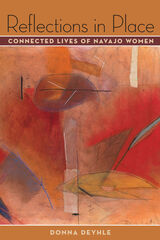 Reflections in Place: Connected Lives of Navajo Women
Donna Deyhle
University of Arizona Press, 2009 Woven together in Donna Deyhle’s ethnohistory are three generations and twenty-five years of friendship, interviews, and rich experience with Navajo women. Through a skillful blending of sources, Deyhle illuminates the devastating cultural consequences of racial stereotyping in the context of education. Longstanding racial tension in southeastern Utah frames this cross-generational set of portraits that together depict all aspects of this specifically American Indian struggle. Deyhle cites the lefthanded compliment, “Navajos work well with their hands,” which she indicates represents the limiting and all-too-common appraisal of American Indian learning potential that she vehemently disputes and seeks to disprove.
As a recognized authority on the subject, qualified by multiple degrees in racial and American Indian studies, Deyhle is able to chronicle the lives and “survivance” of three Navajo women in a way that is simultaneously ethnographic and moving. Her critique of the U.S. education system’s underlying yet very real tendency toward structural discrimination takes shape in elegant prose that moves freely into and out of time and place. The combination of substantive sources and touching personal experience forms a profound and enduring narrative of critical and current importance.
While this book stands as a powerful contribution to American Indian studies, its compelling human elements will extend its appeal to anyone concerned with the ongoing plight of American Indians in the education system.
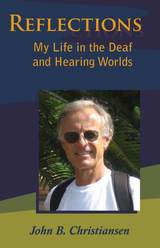 Reflections: My Life in the Deaf and Hearing Worlds
John B. Christiansen
Gallaudet University Press, 2010 Hard of hearing since early childhood, John Christiansen spent the first 30 years of his life trying to fit in to a hearing world that did little to accommodate his communication needs. Although he excelled in academics, Christiansen found social situations stressful at every level, until he obtained a position as a professor of sociology at Gallaudet University. There he learned sign language and joined a new community. Reflections: My Life in the Deaf and Hearing Worlds grew out of his personal experiences inhabiting these two worlds. As a sociologist, Christiansen could identify the toll that trying to communicate with hearing people took on his psyche, the classic looking-glass self in action: I am what I think you think I am. He saw that people with hearing loss frequently blame themselves for social awkwardness and gaffs, even though the responsibility for clear communication should be shared. Still, after living in the hearing world for most of his life, he opted to undergo a cochlear implantation to try to improve interaction with his hearing friends, wife, and children. His description of adjusting to his cochlear implant brings fresh reality to the implant process. As he puts it, he was not a superstar. After ten years, though, he feels positive enough about his experience to endorse it. As a denouement to his affecting memoir, he describes the disruptive 2006 protest at Gallaudet over the choice of a new president from his vantage point as a member of the search committee. Reflections stands as a remarkable account of one person’s navigation through the intricacies of two different and occasionally opposing worlds.
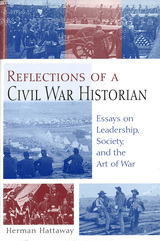 Reflections of a Civil War Historian: Essays on Leadership, Society, and the Art of War
Herman Hattaway & Foreword by Frank E. Vandiver
University of Missouri Press, 2003 Born in New Orleans, Herman Hattaway grew up in the Deep South. While it might not seem such a stretch for him to have become one of the foremost authorities on the Civil War and Southern history, Hattaway was actually at a loss for a career choice when he stumbled into the class of Professor T. Harry Williams at Louisiana State University. Williams’s lectures and writings were so inspiring to Hattaway that he became a regular in his classes, receiving his B.A., M.A., and Ph.D. all under the professor’s tutelage. This collection of essays is a compendium of Hattaway’s writings from throughout his more-than-forty-year career. He is the author or coauthor of five books that were selections of the History Book Club— Jefferson Davis: Confederate President; Shades of Blue and Gray: An Introductory Military History of the Civil War; Why the South Lost the Civil War; How the North Won: A Military History of the Civil War; and General Stephen D. Lee. He is also the author of the text for Gettysburg to Vicksburg: The Five Original Civil War Battlefield Parks. Hattaway is a captivating historian who always seeks to engage others in the study of history. He has made many important scholarly contributions to our understanding of the Civil War, including new information on the military use of balloons, the relevance of religion in warfare, and the nature of good (and bad) military leadership. This book will appeal to the many historians and others who have been influenced by Hattaway over the years. It demonstrates how he has evolved as a historian and brings to light many essays that were never before published or published only in specialized journals.
|
|
